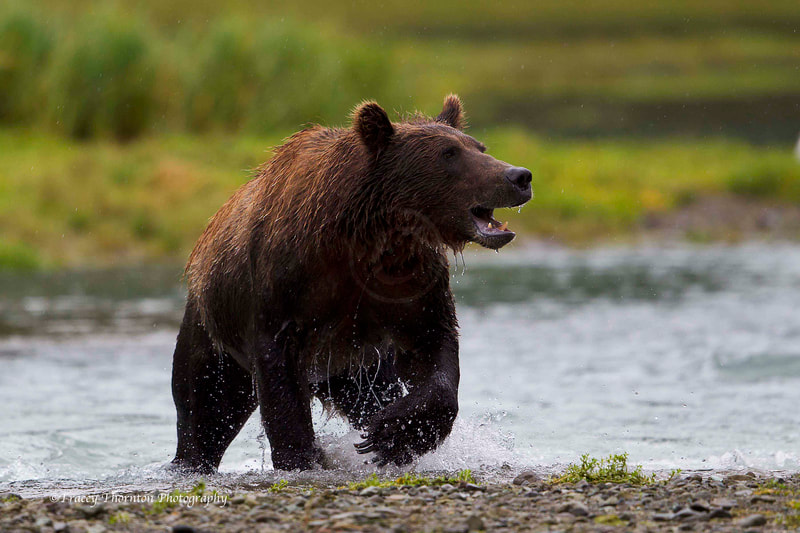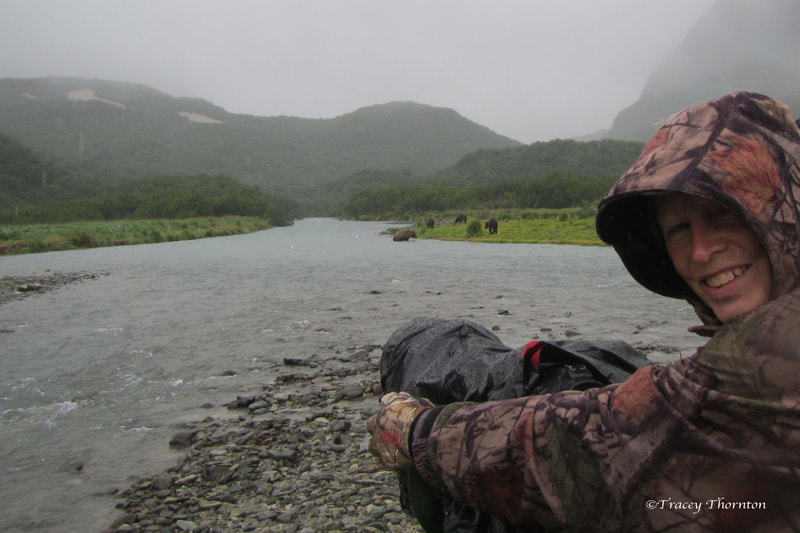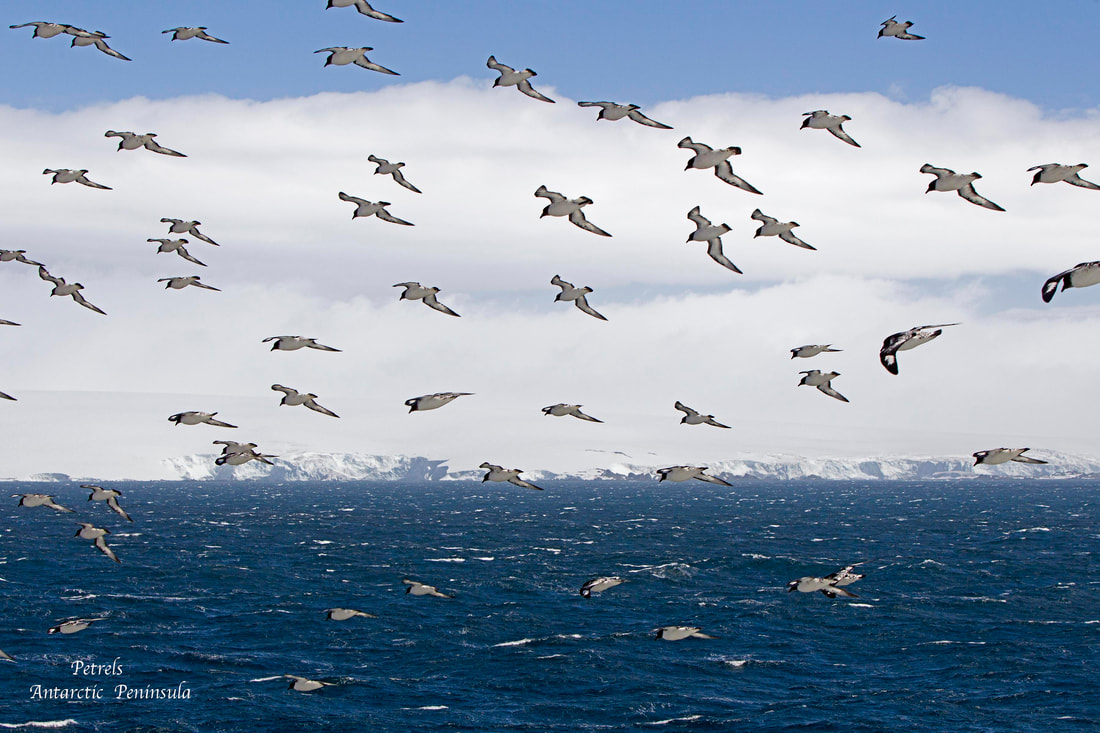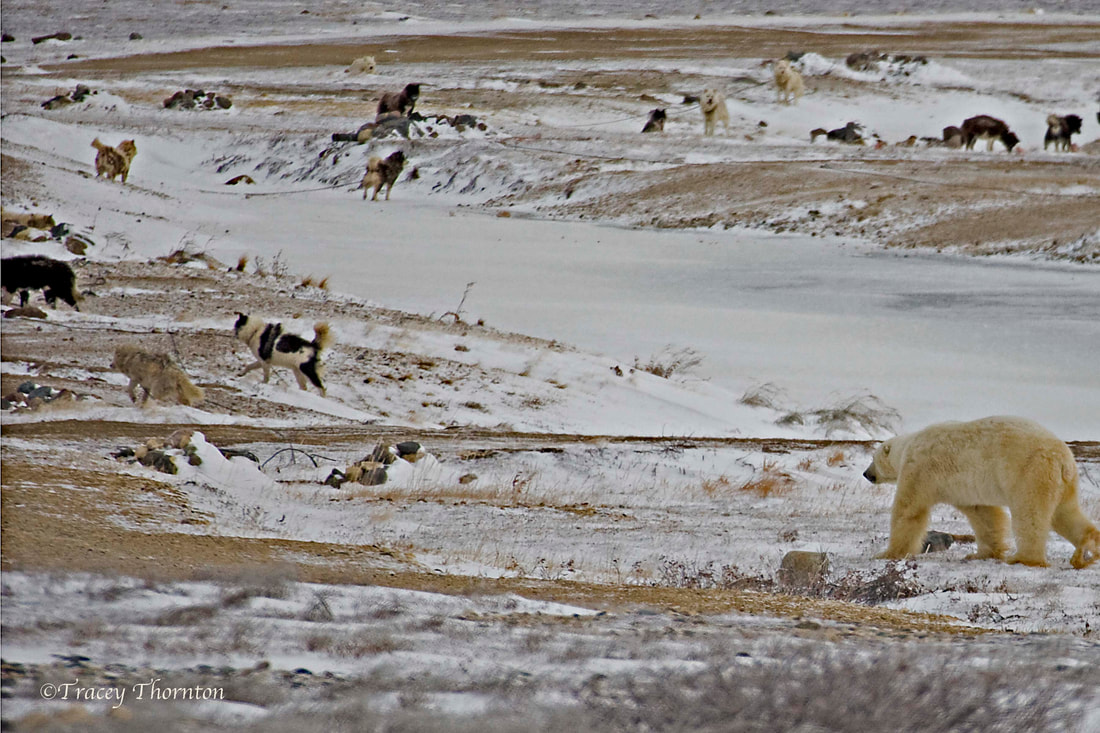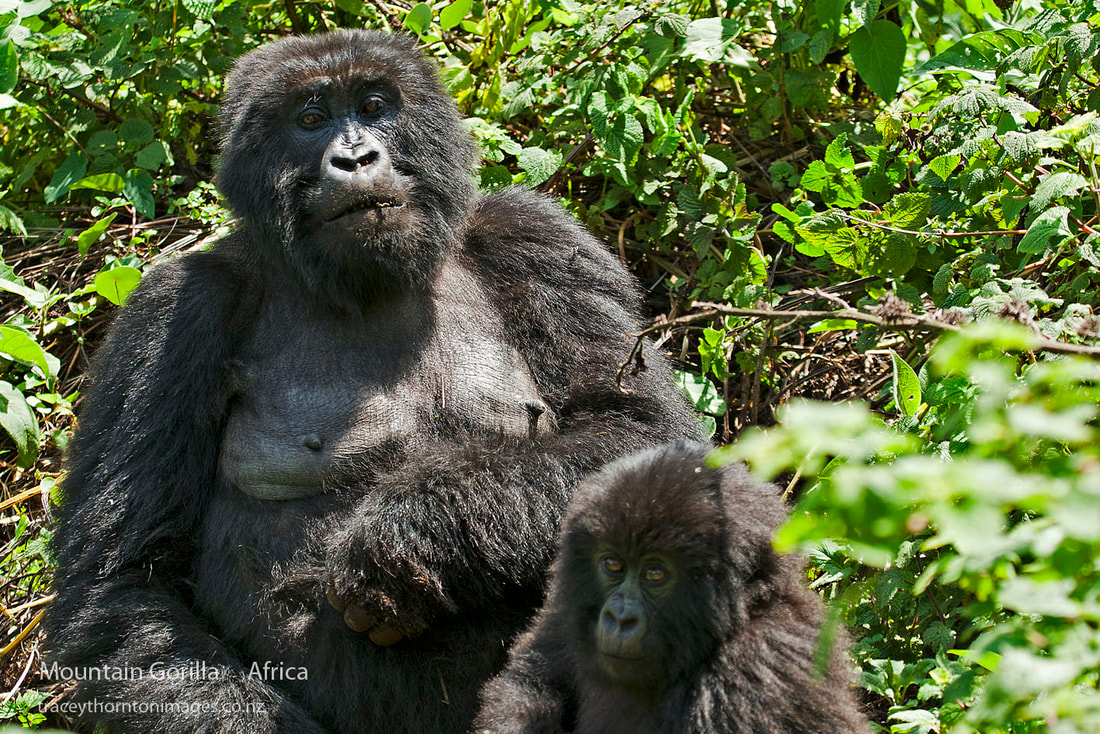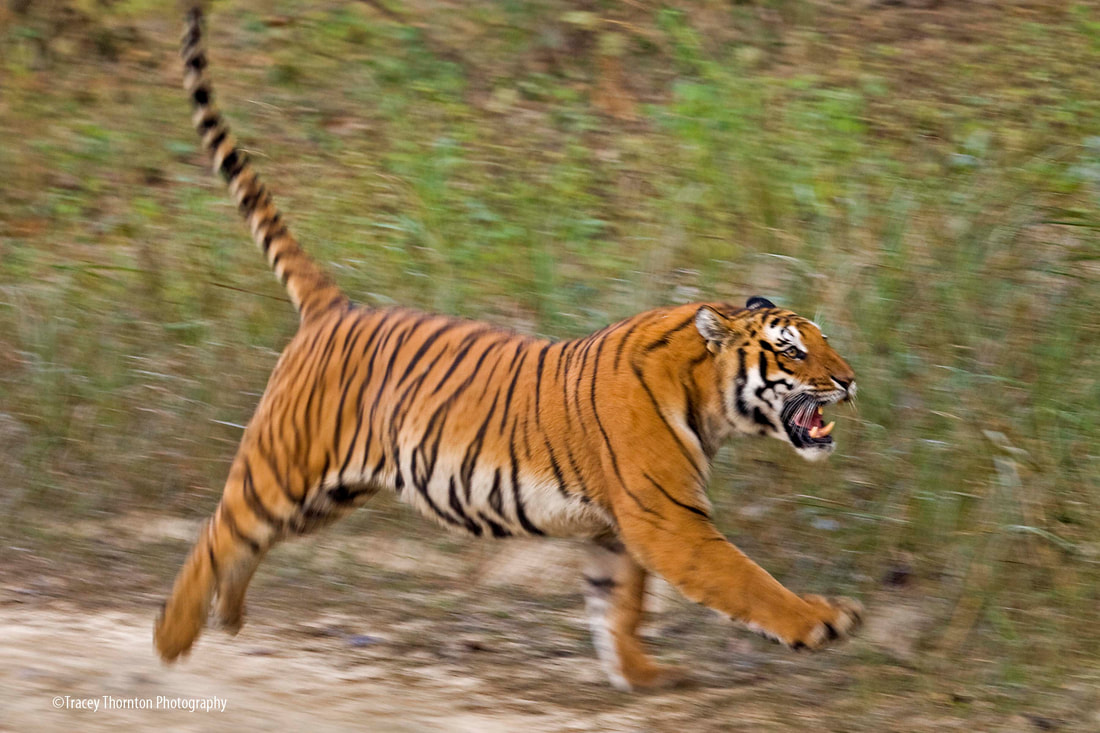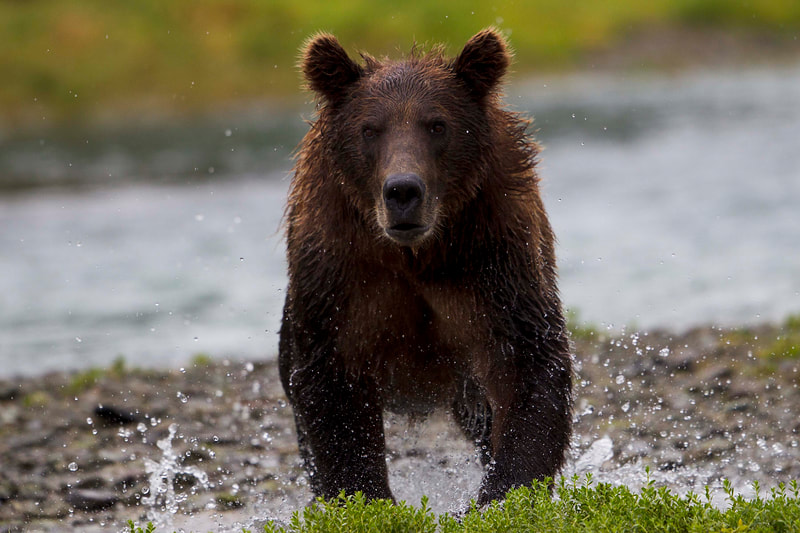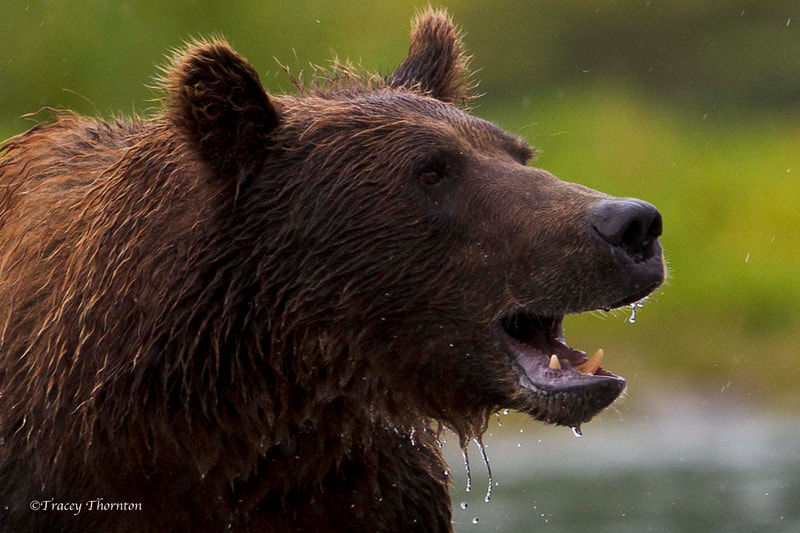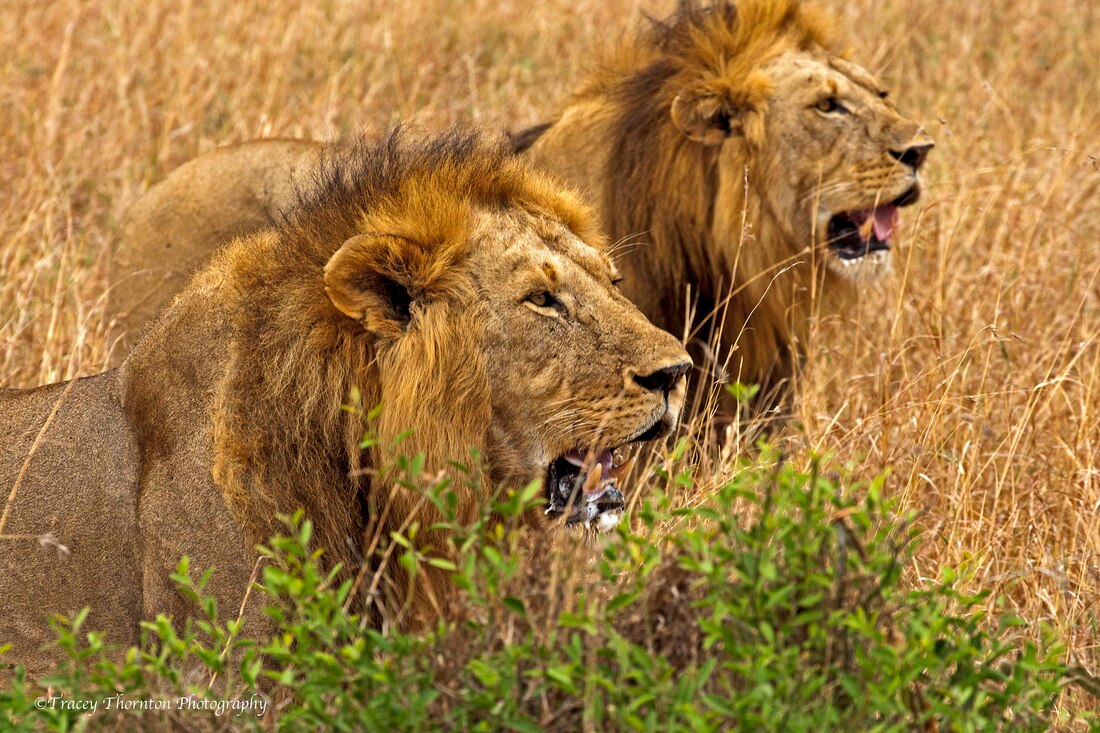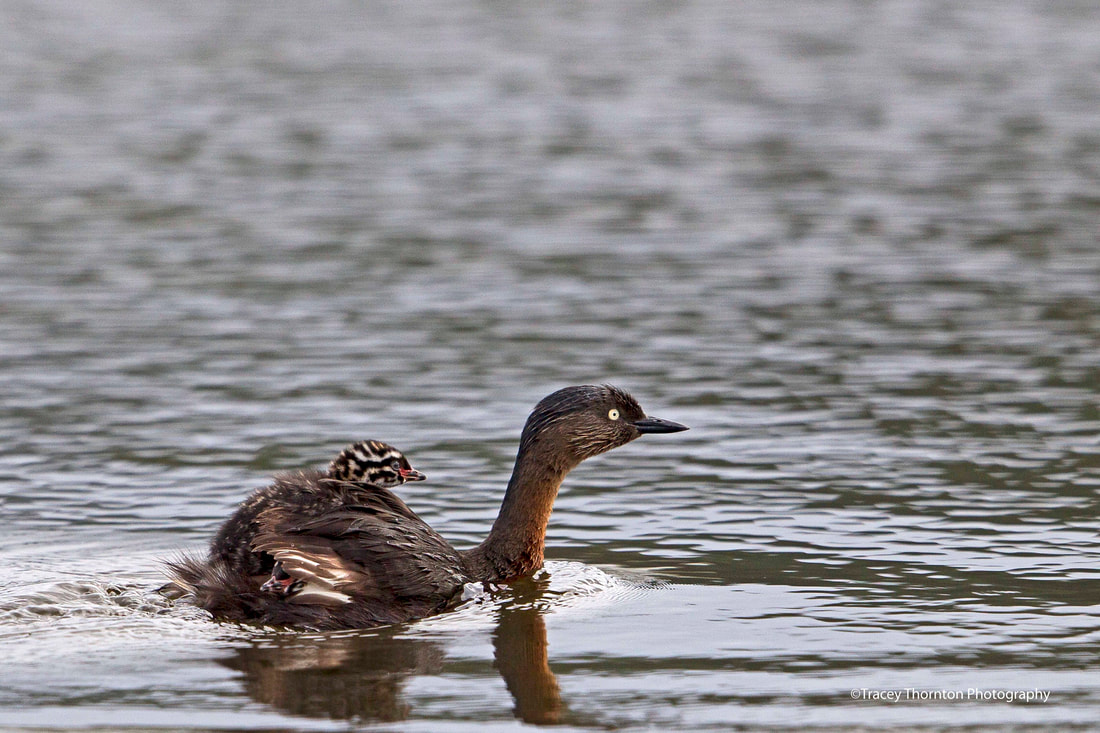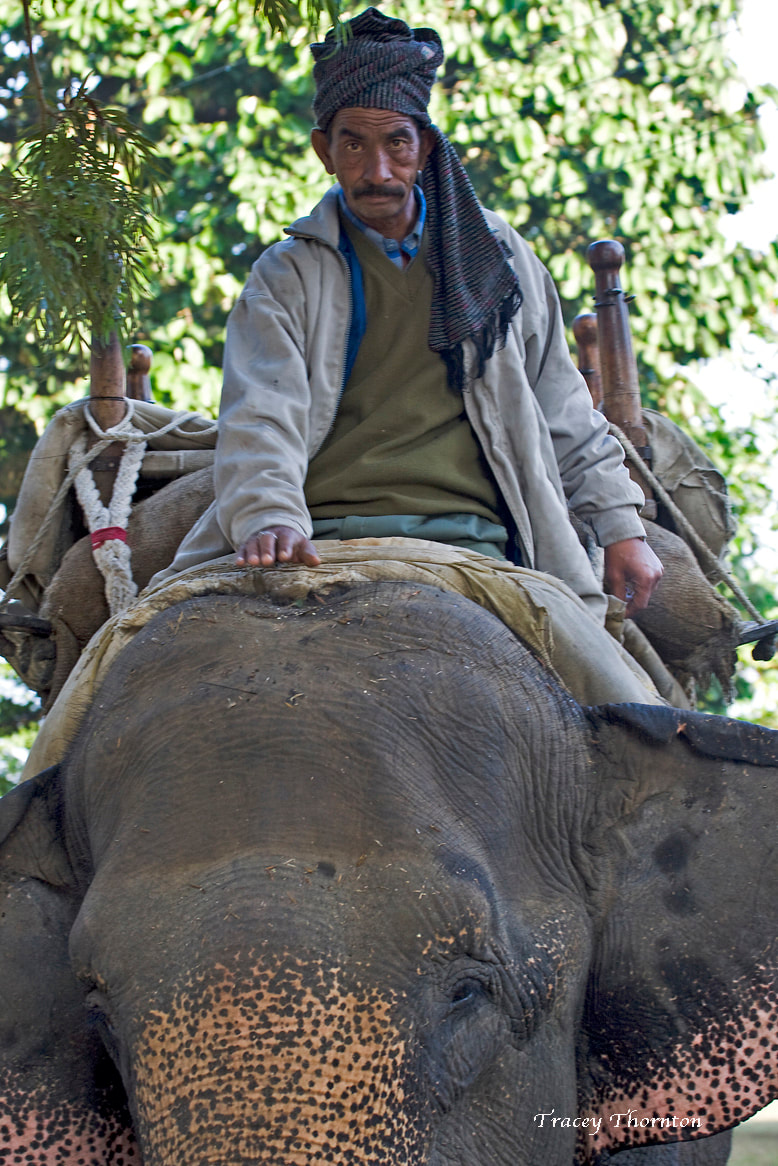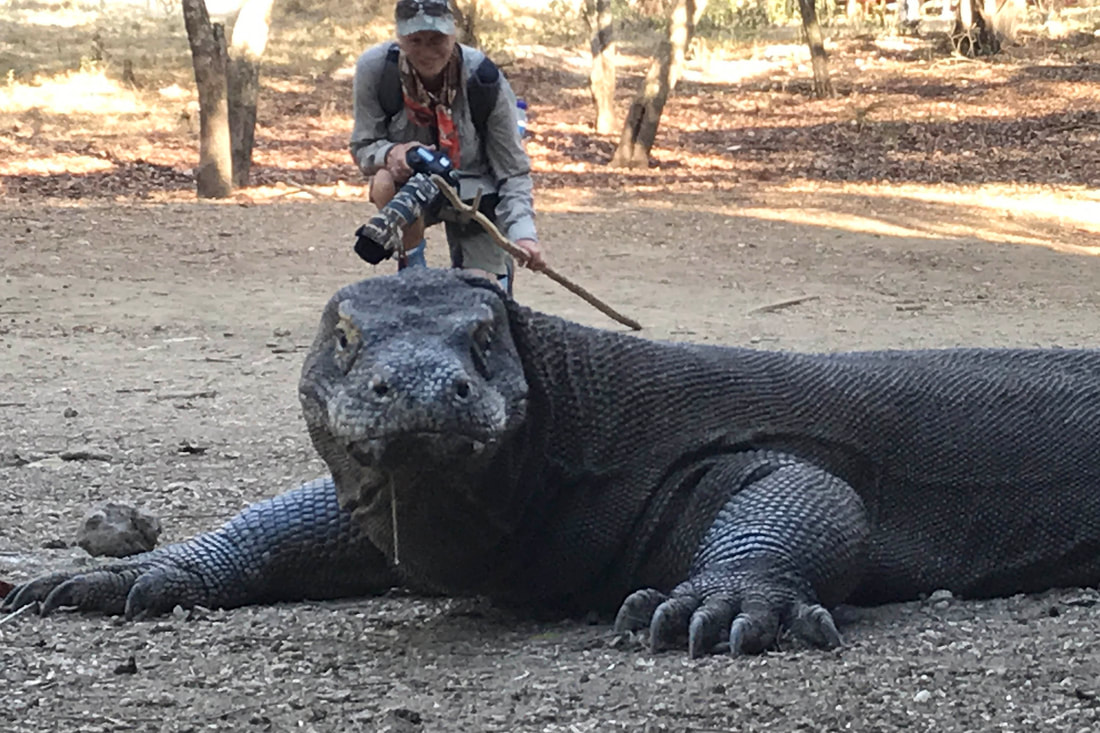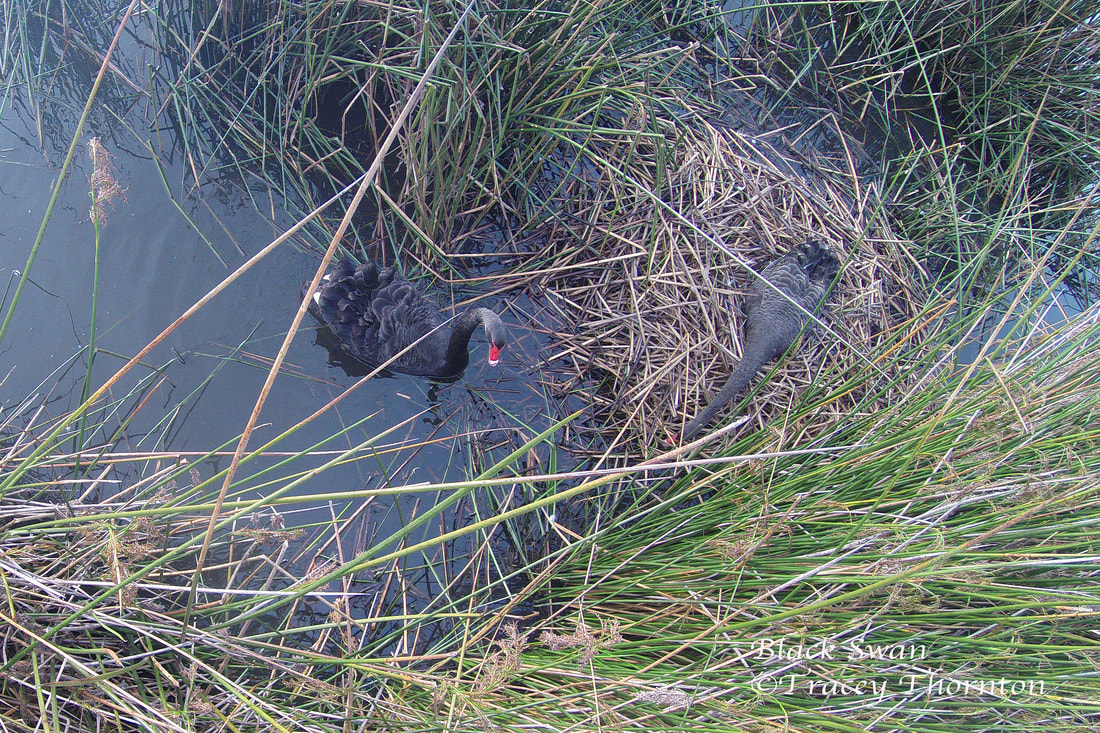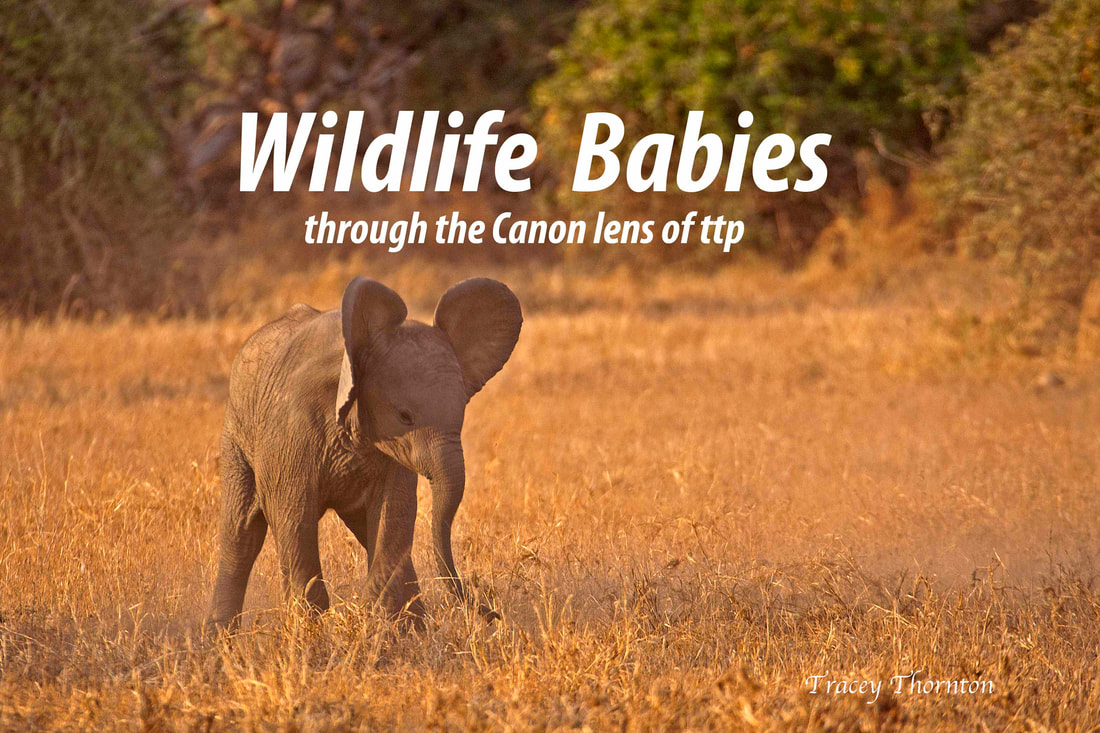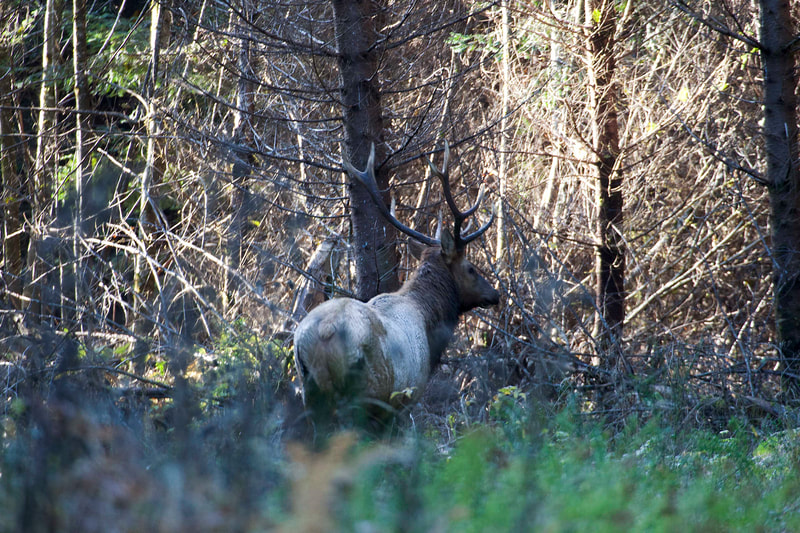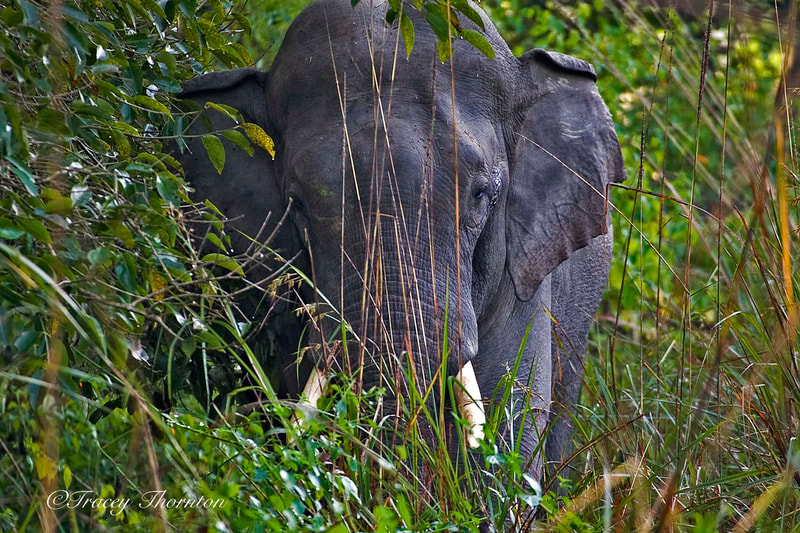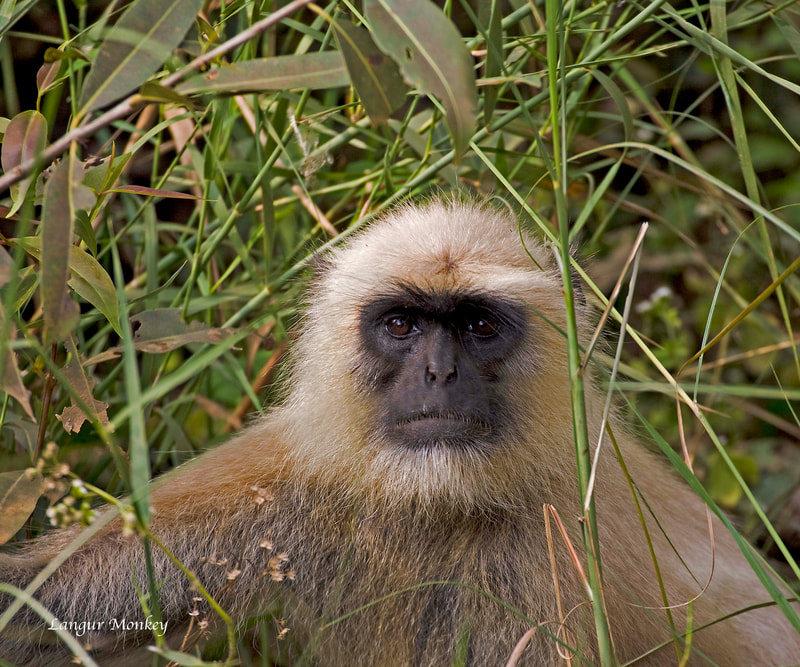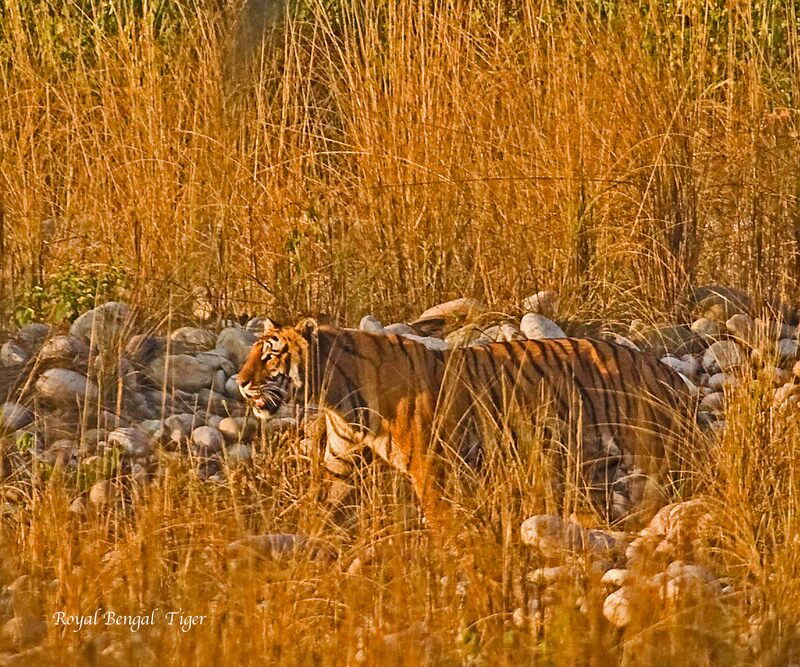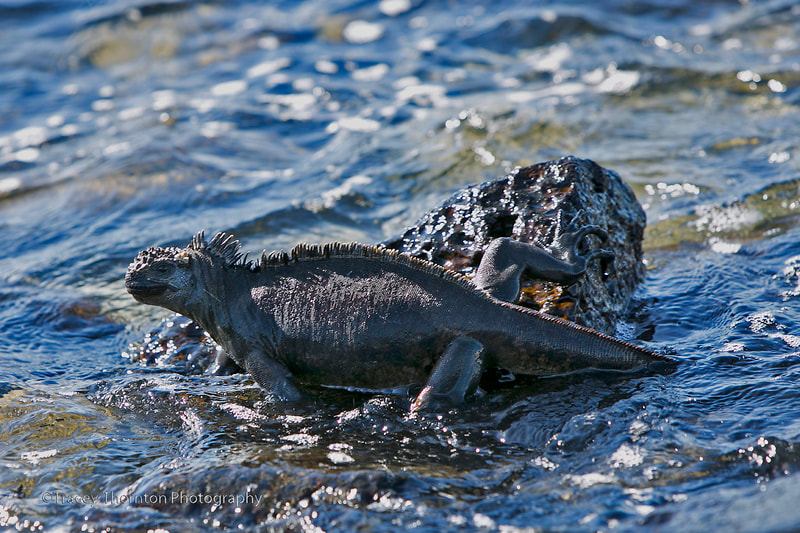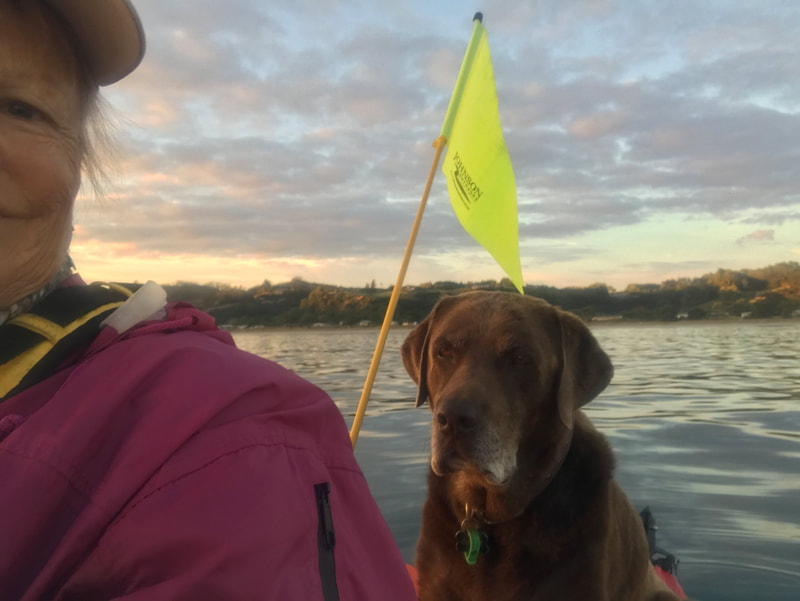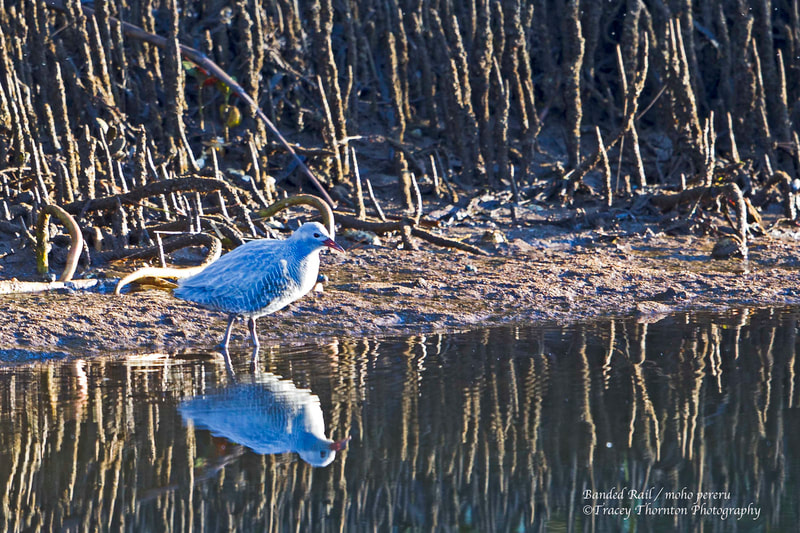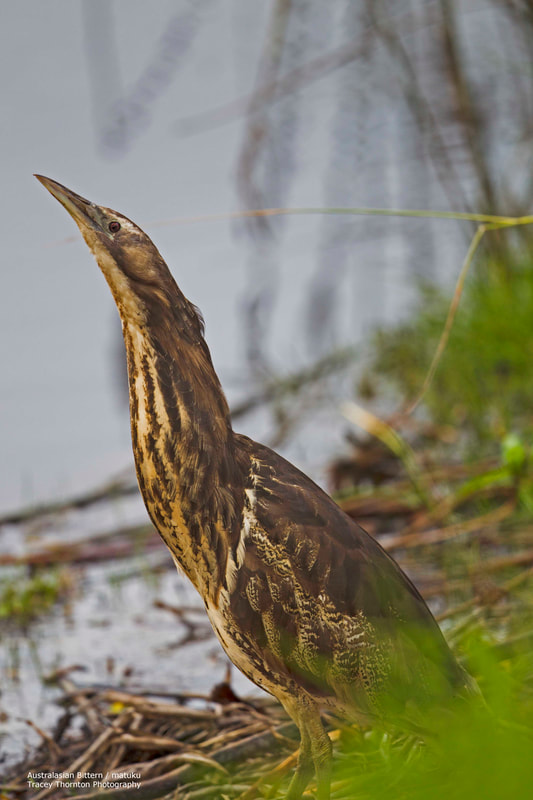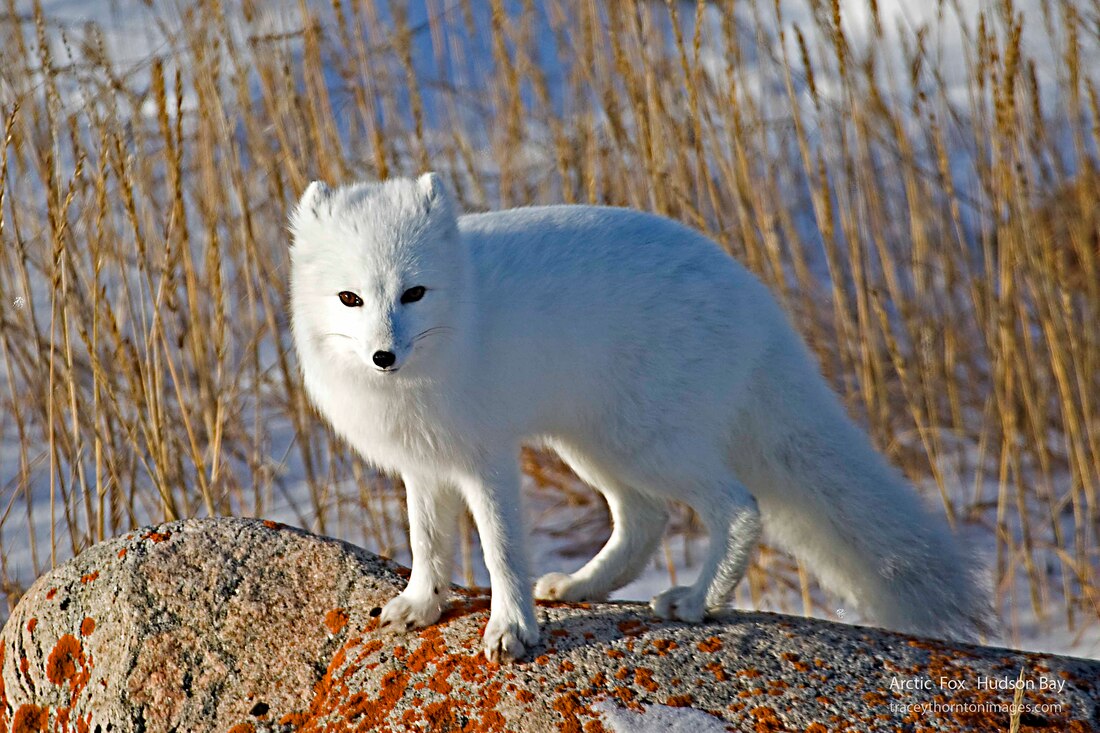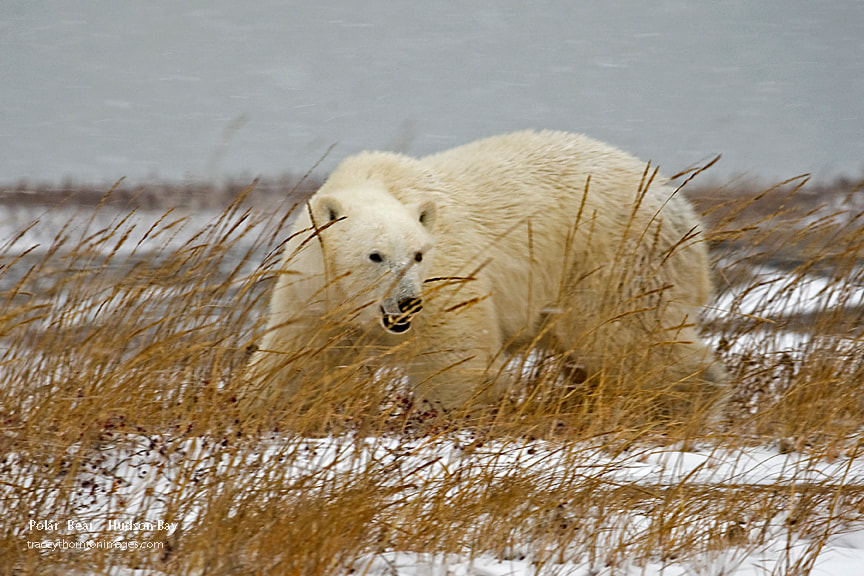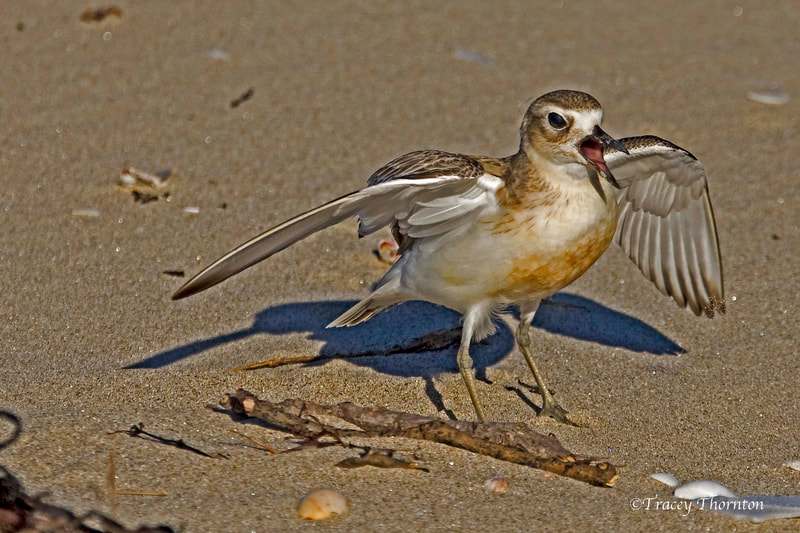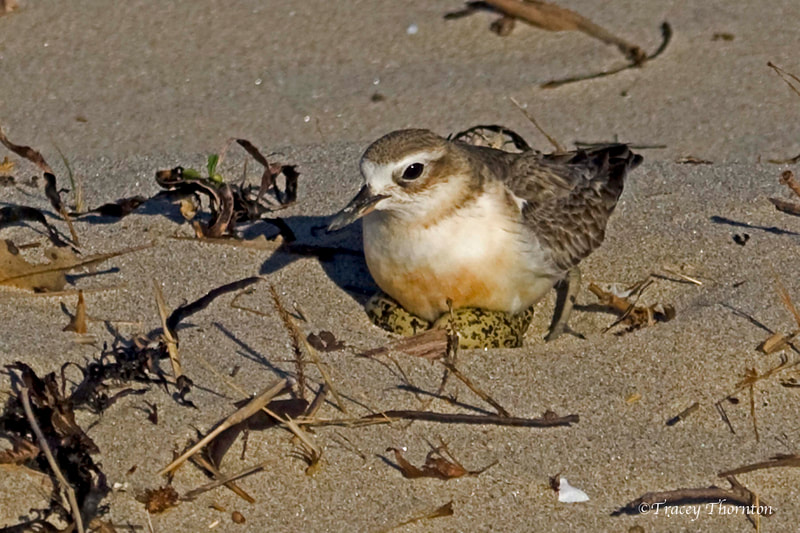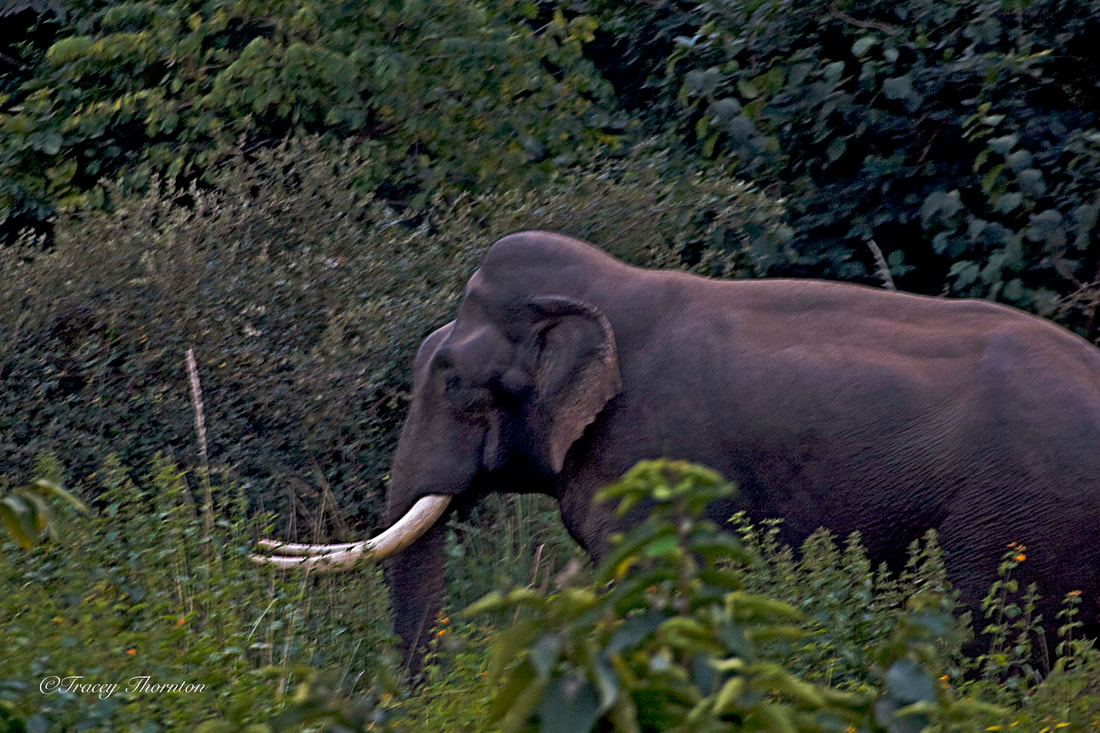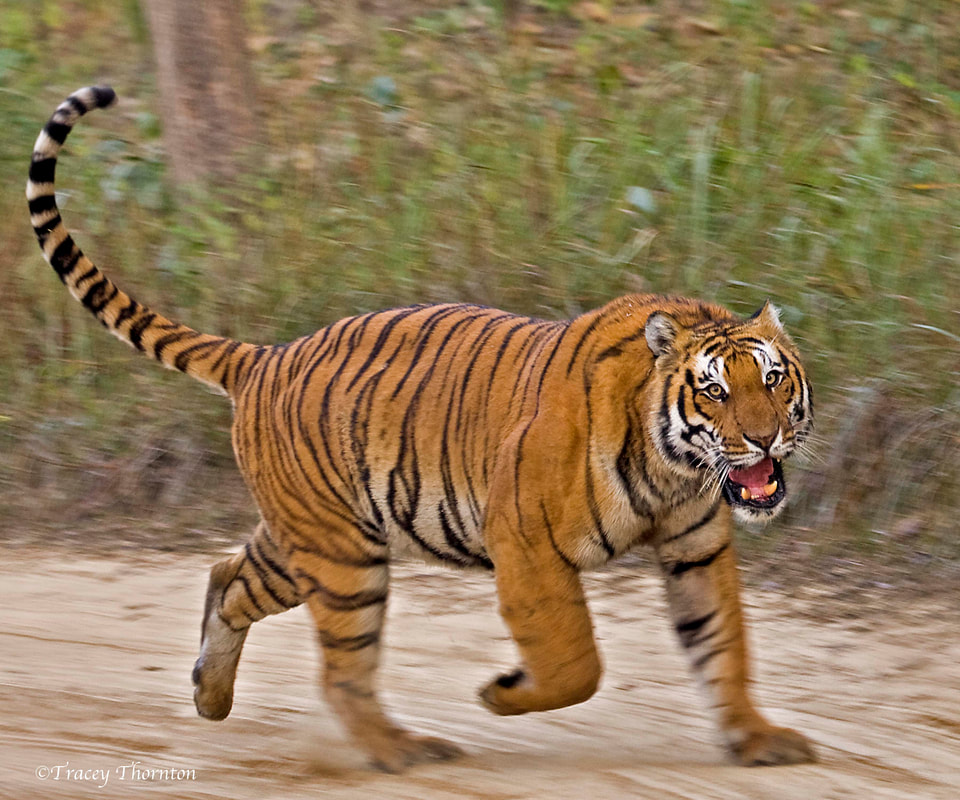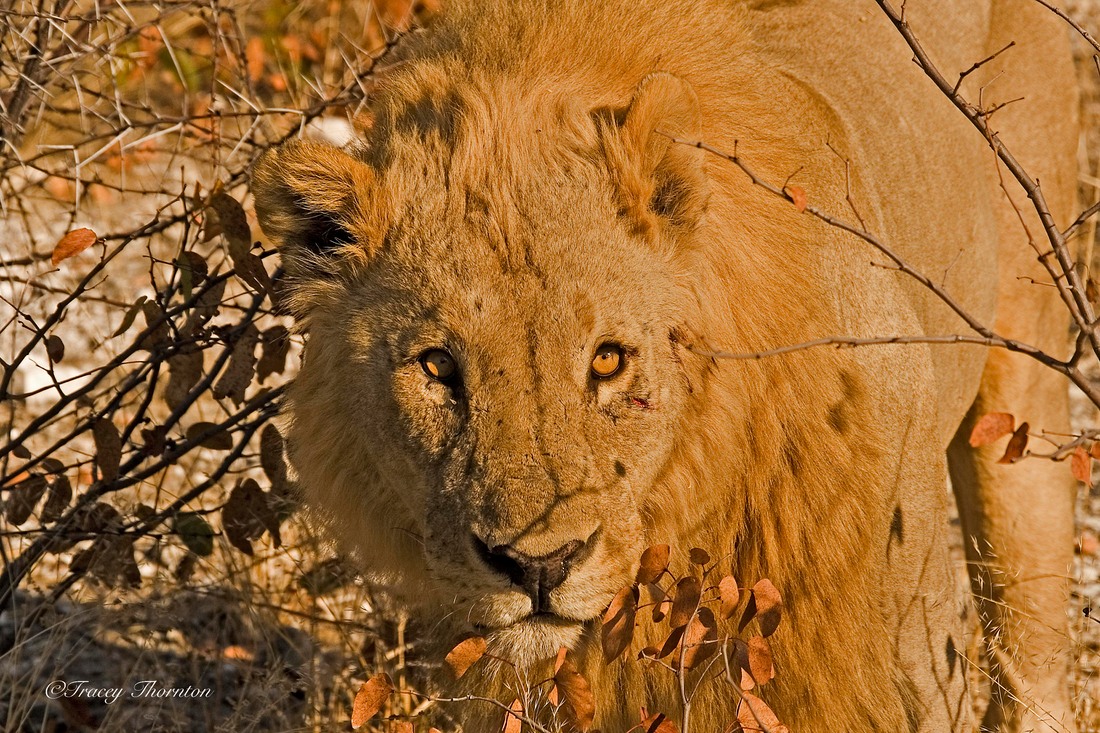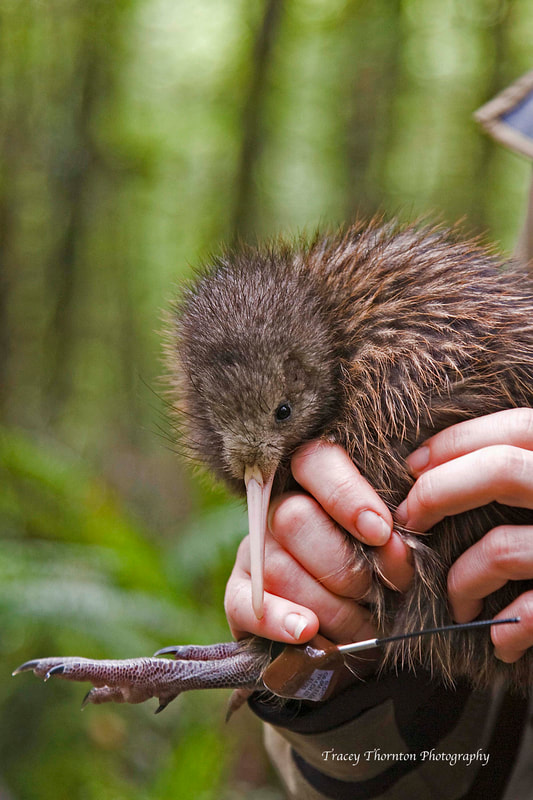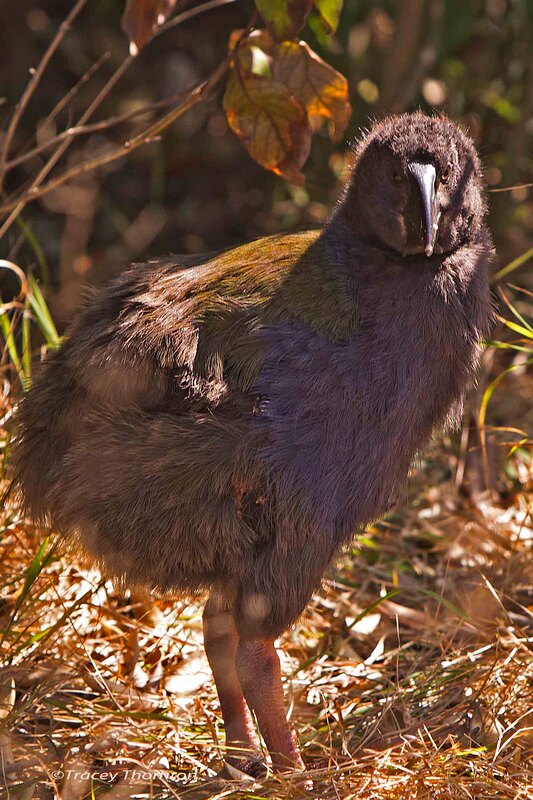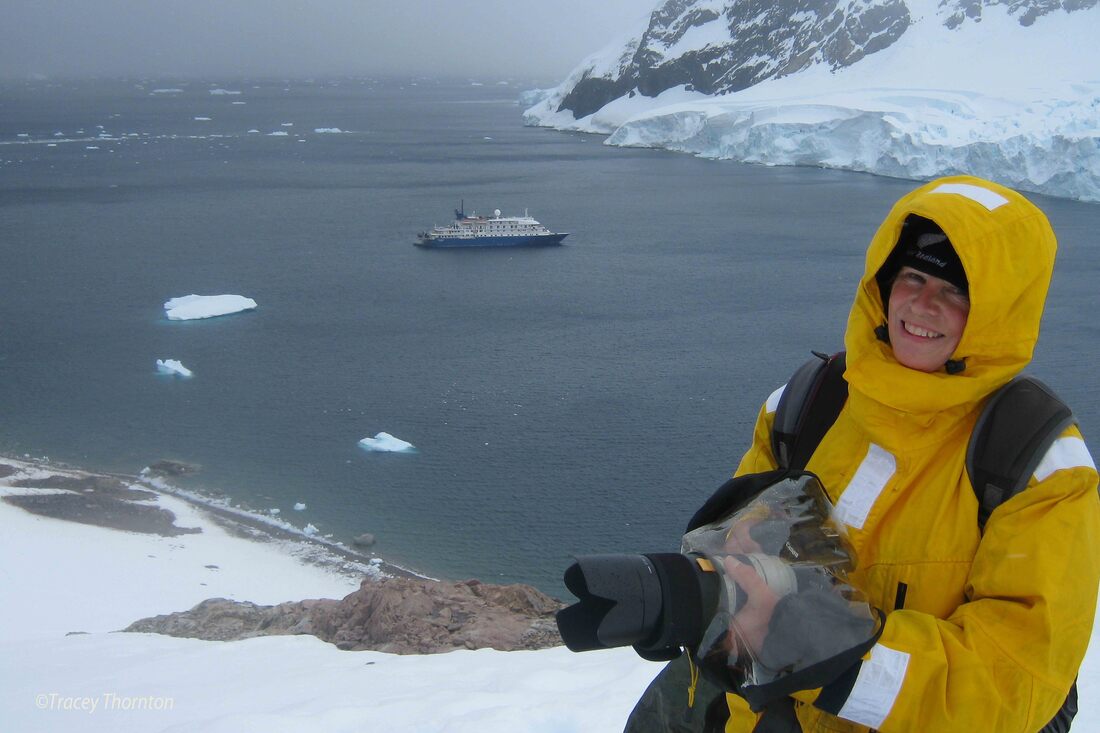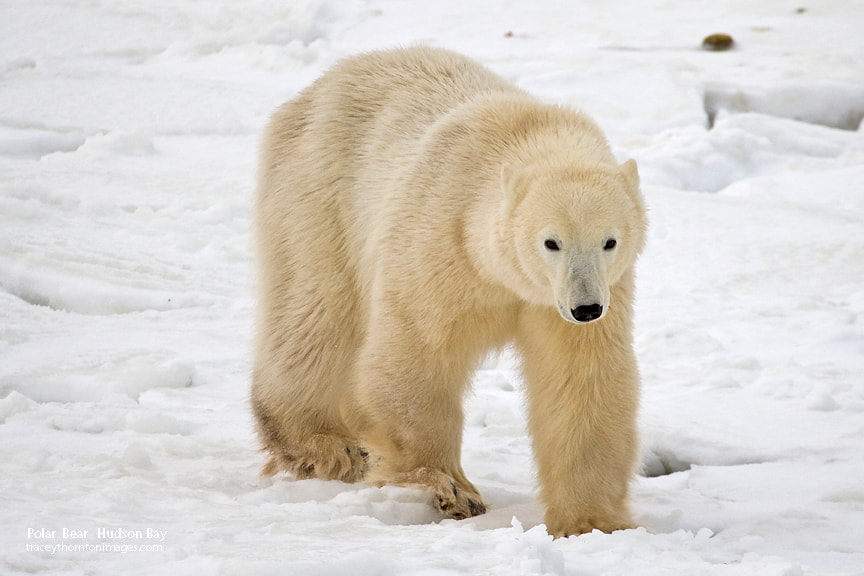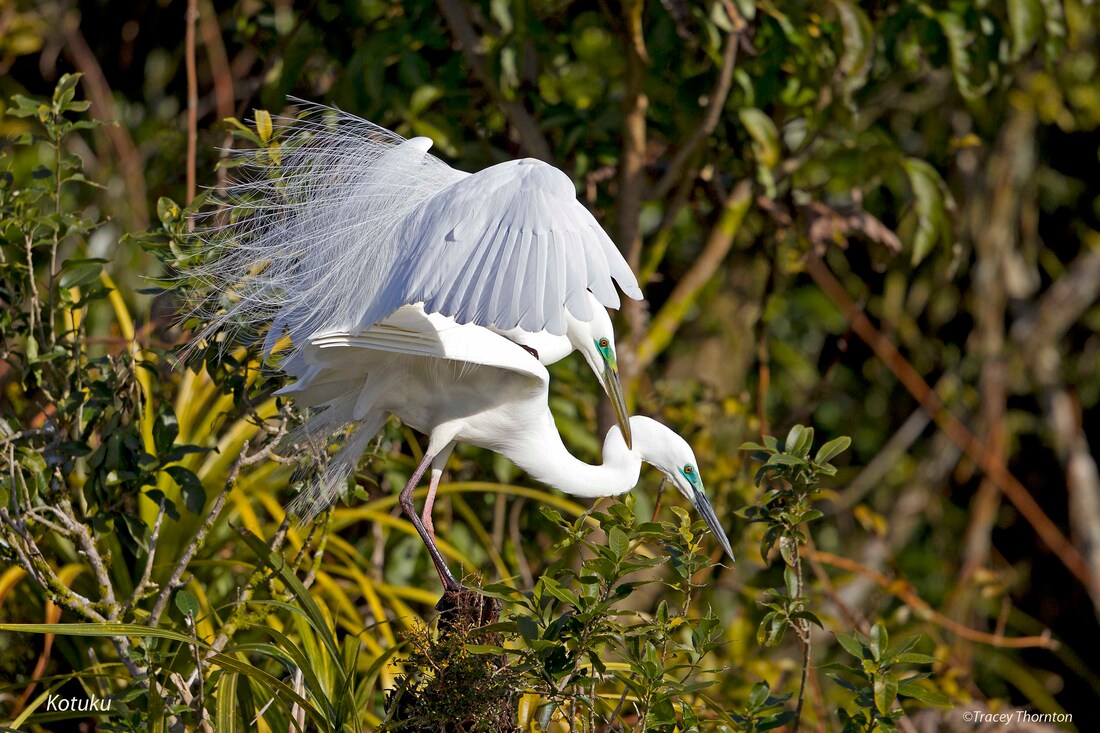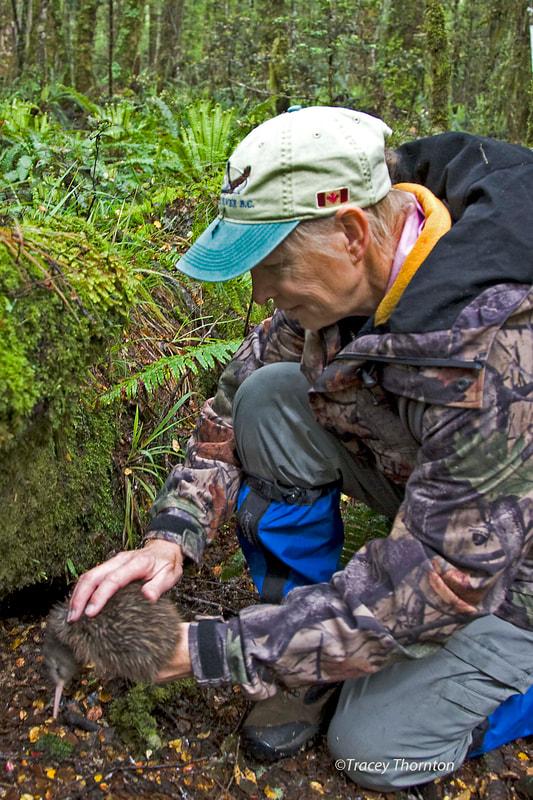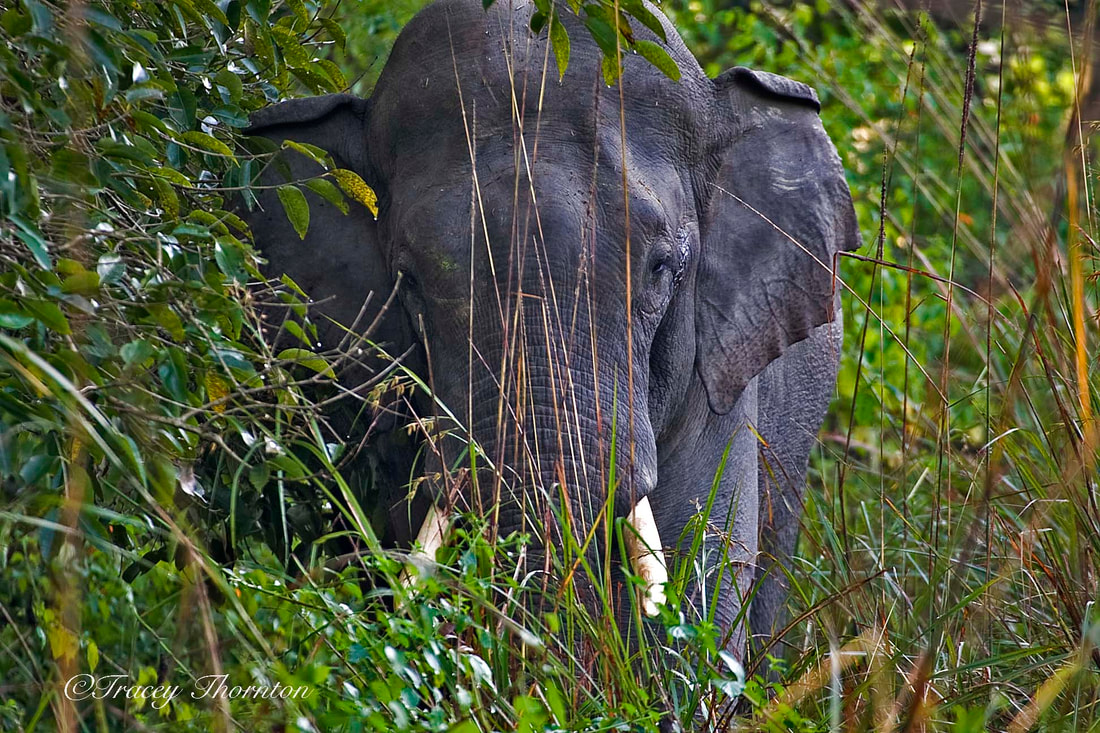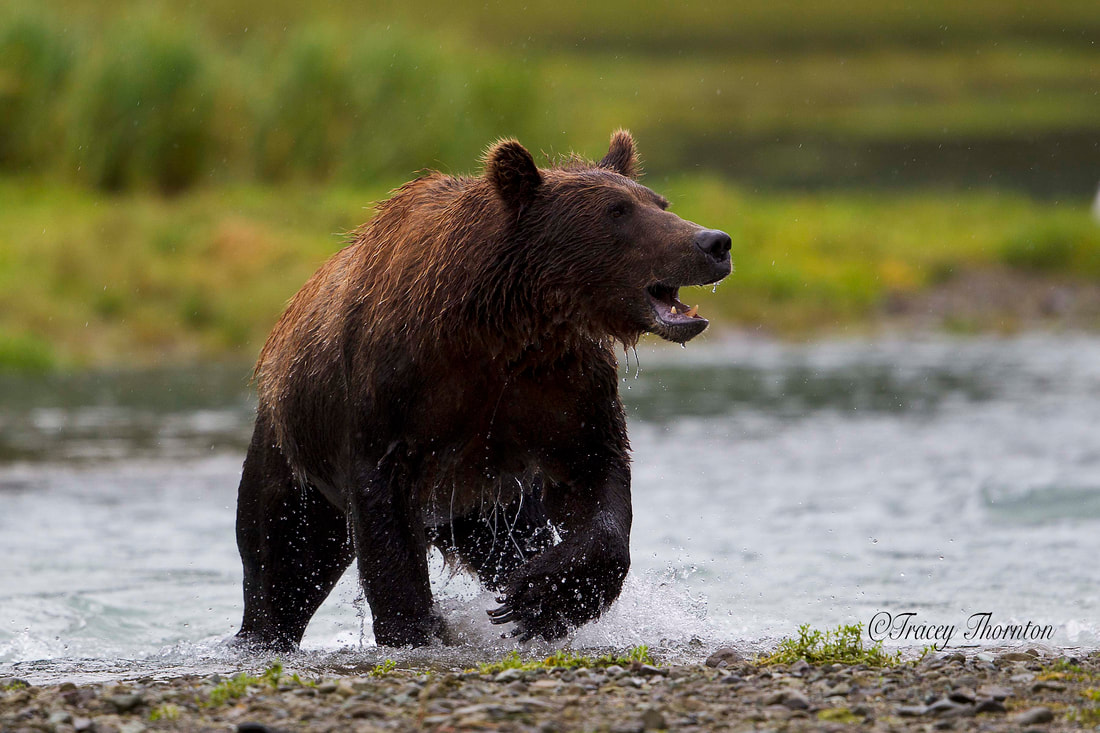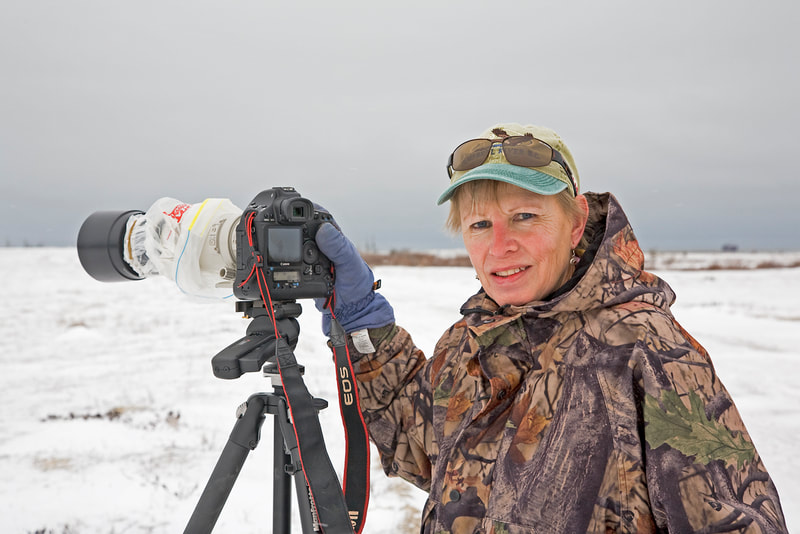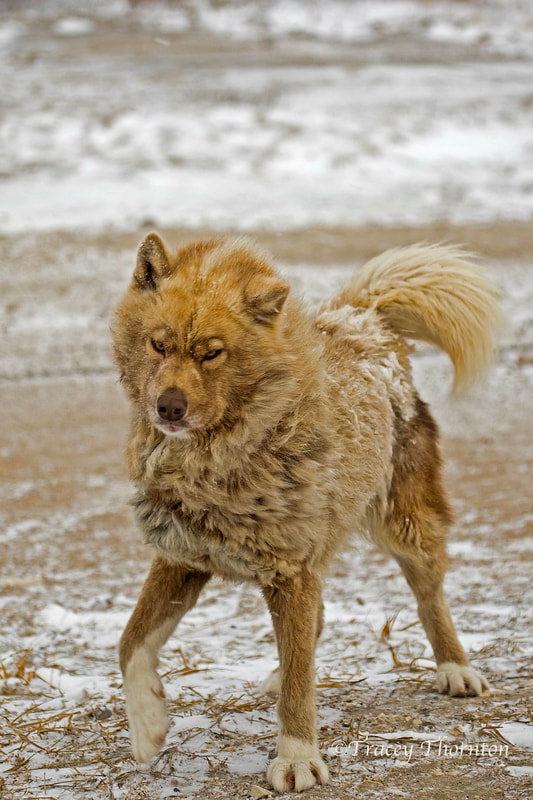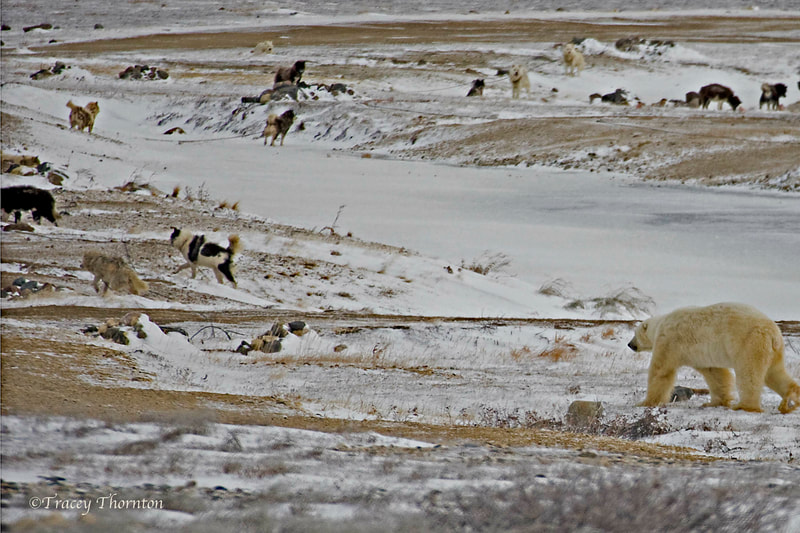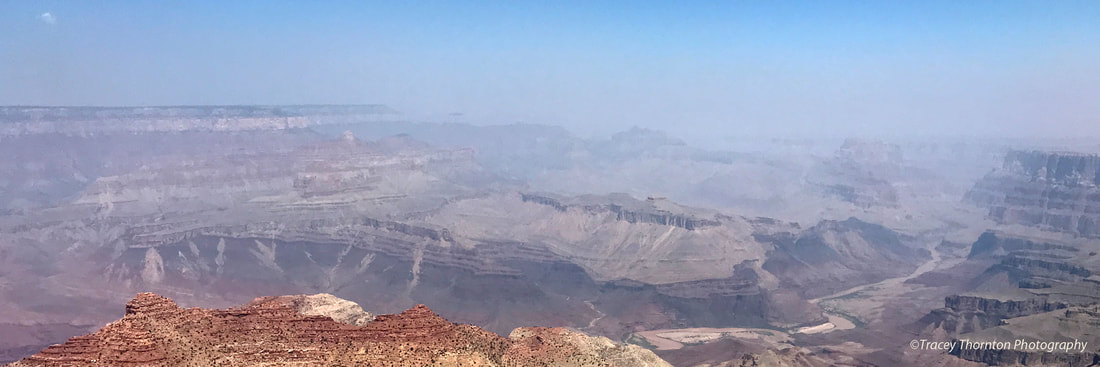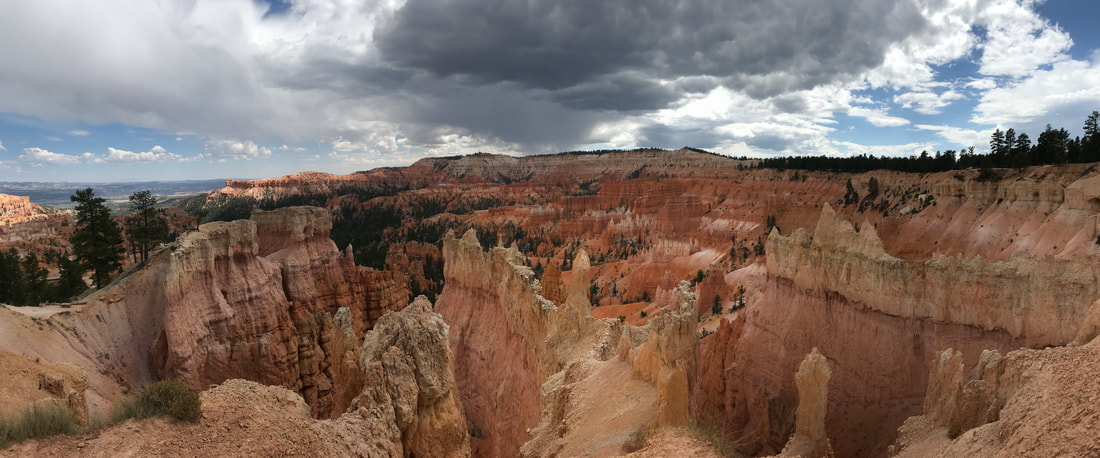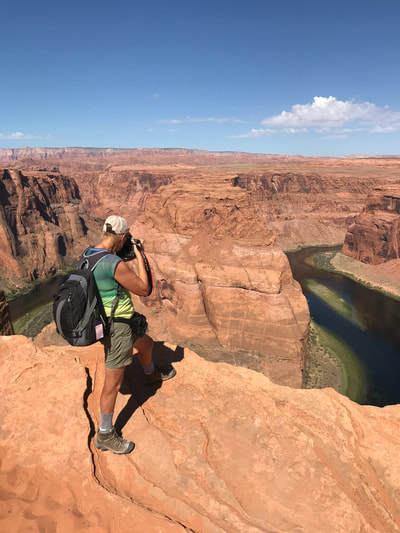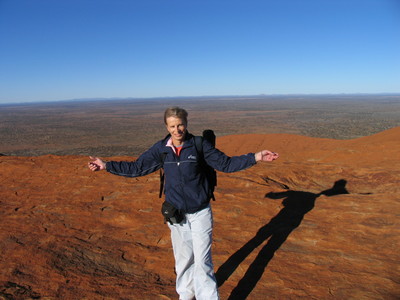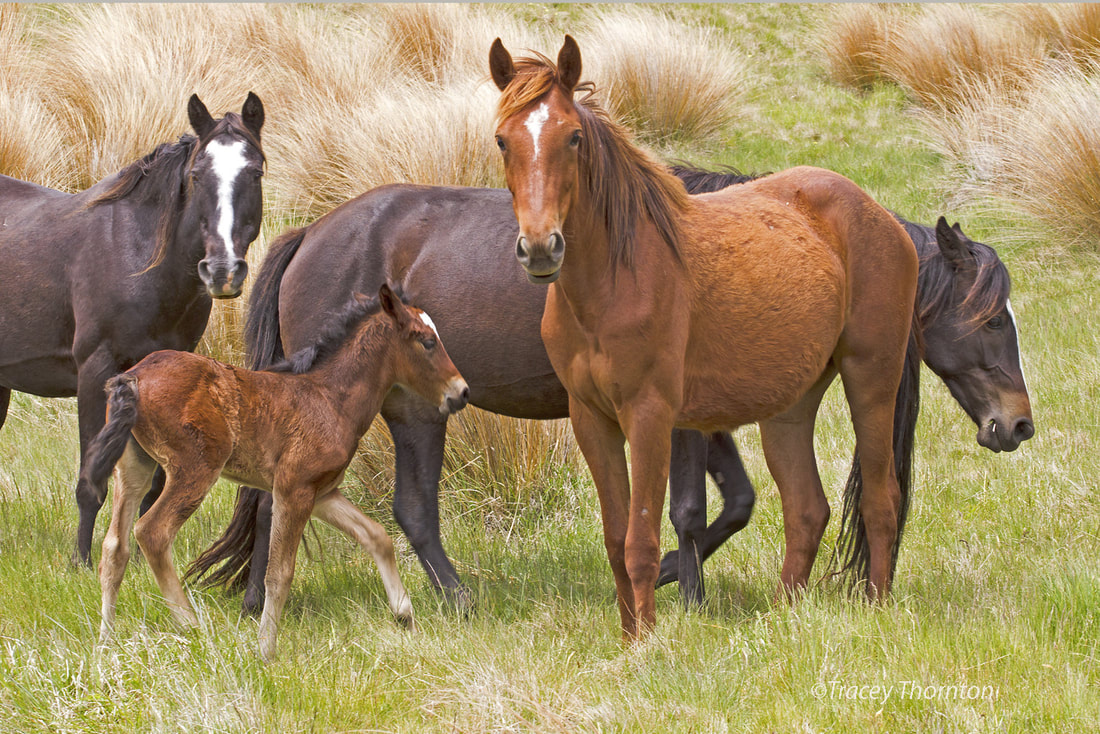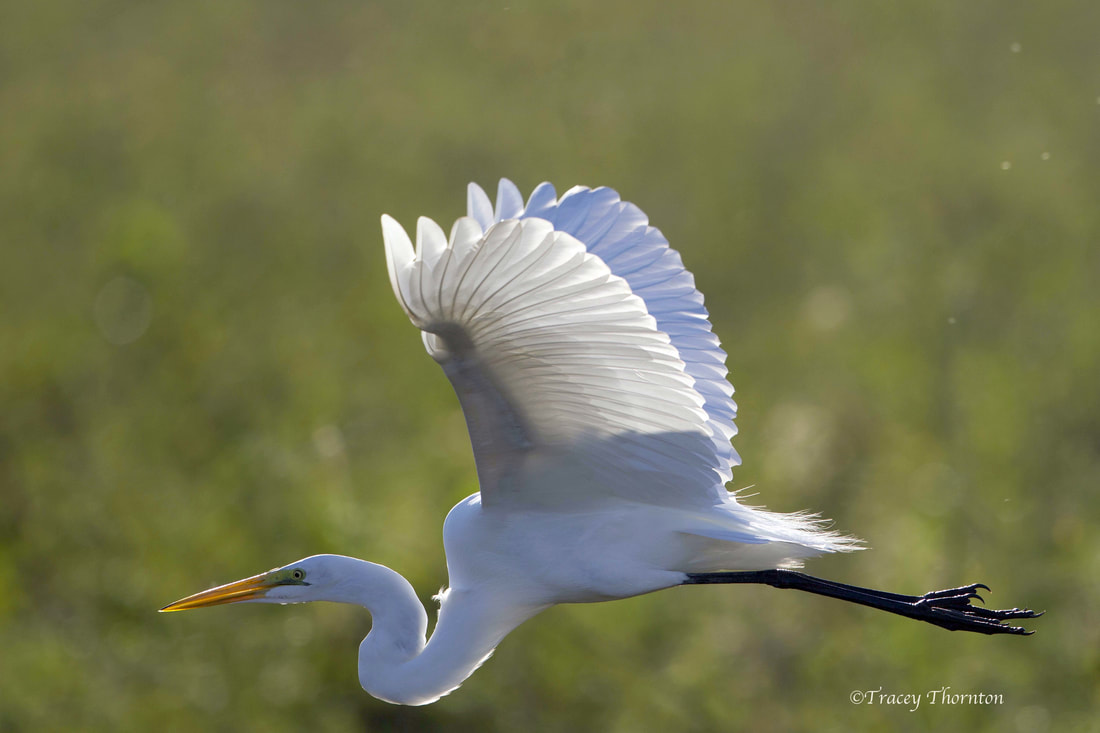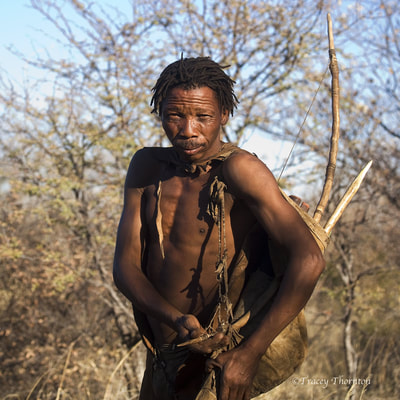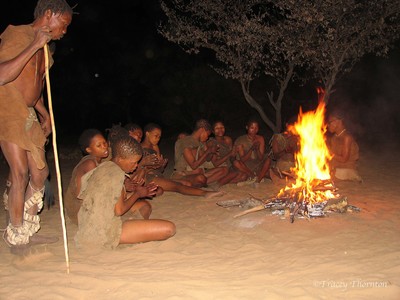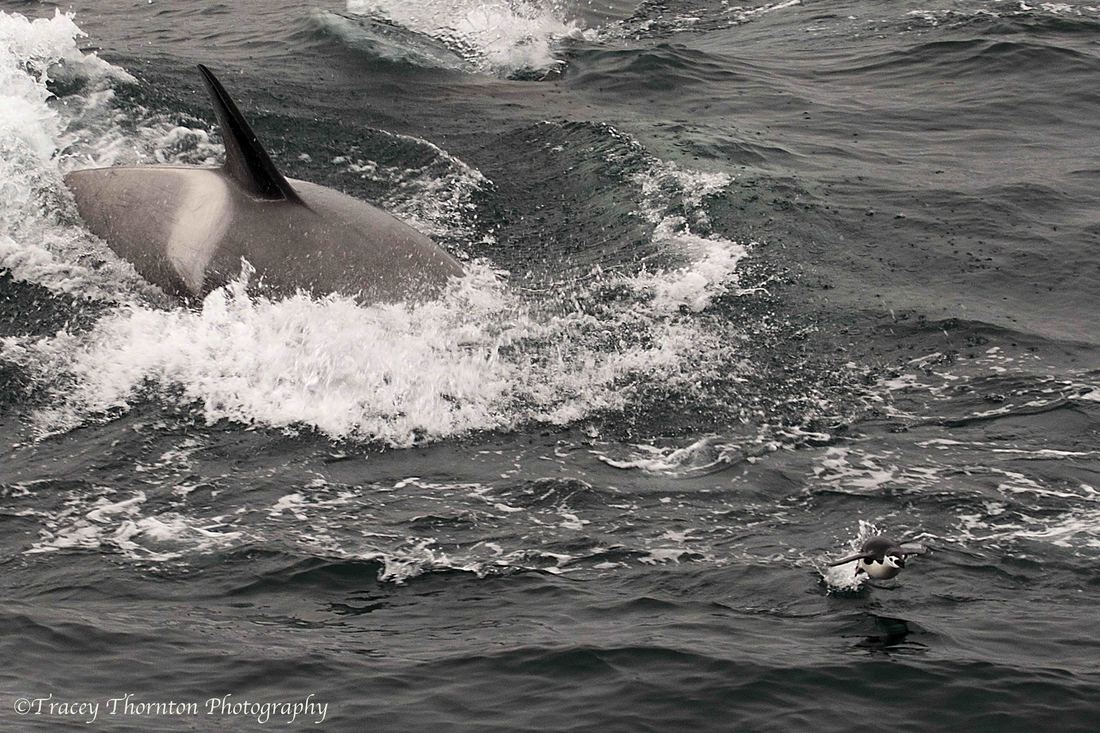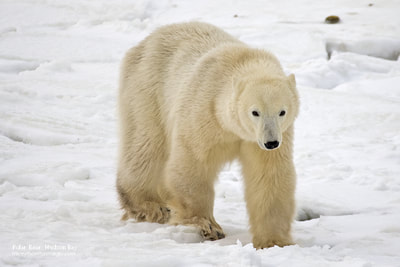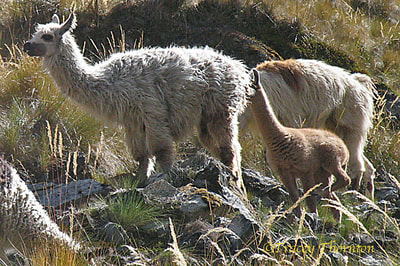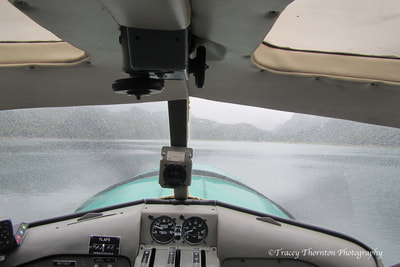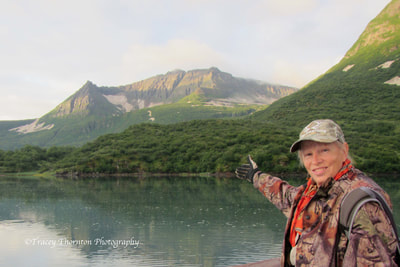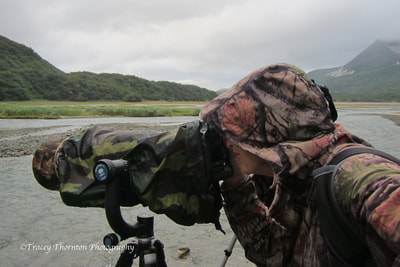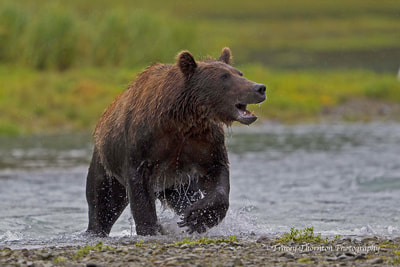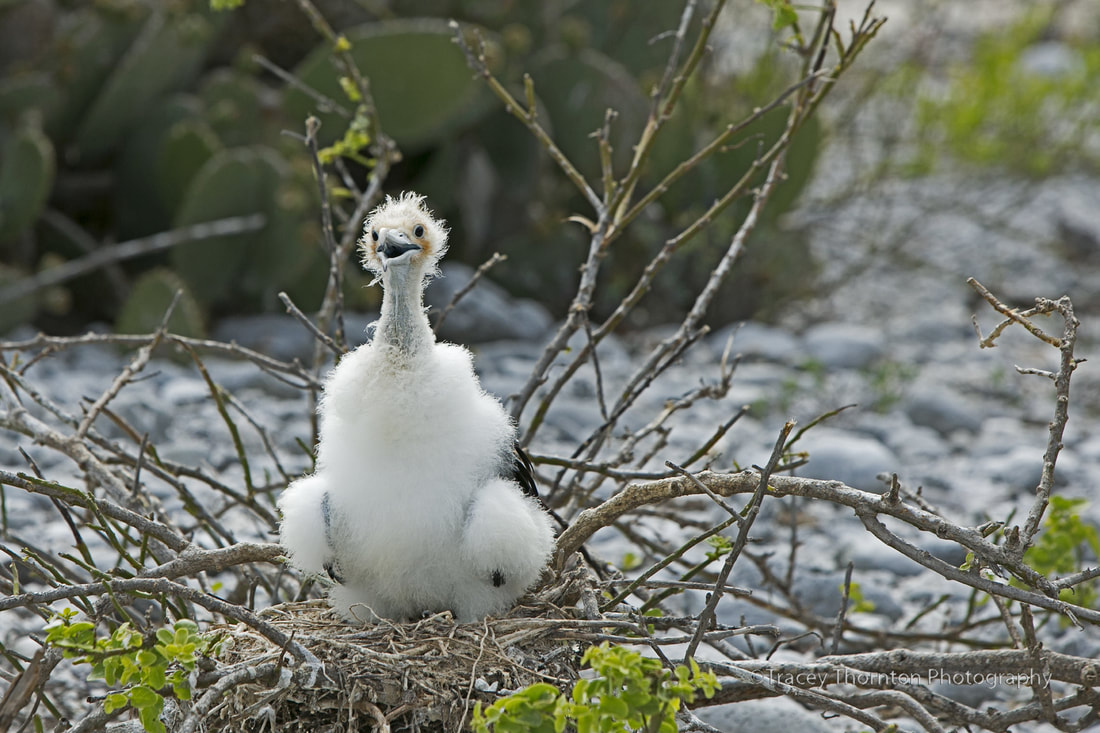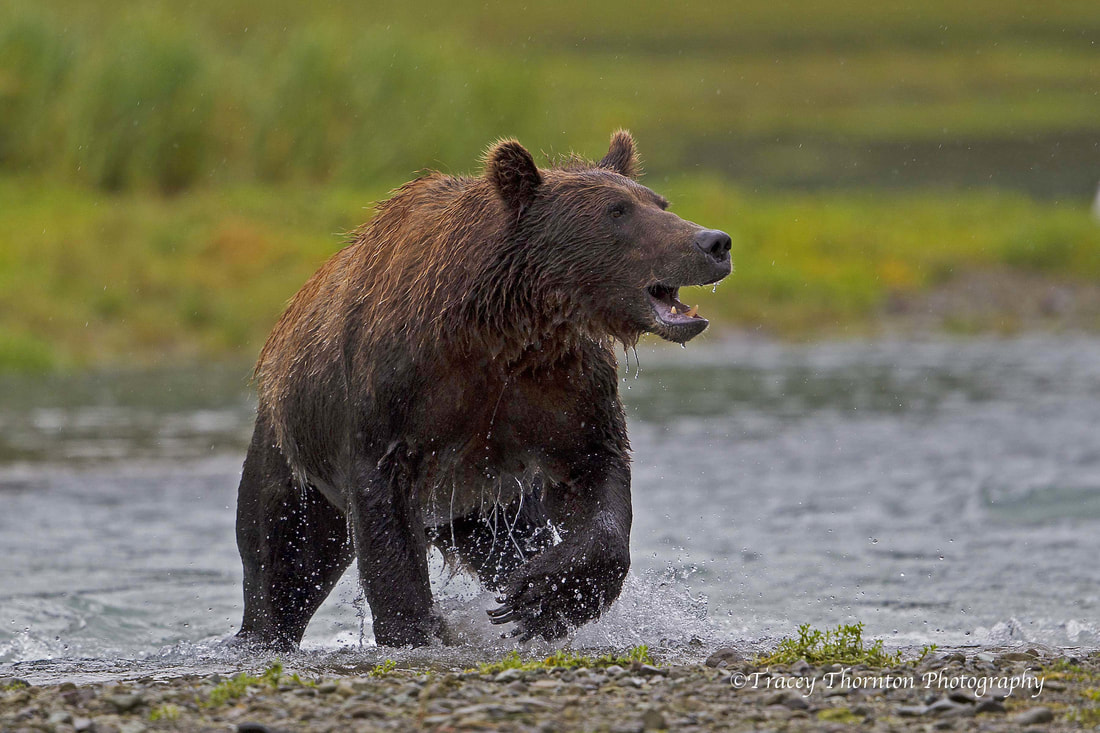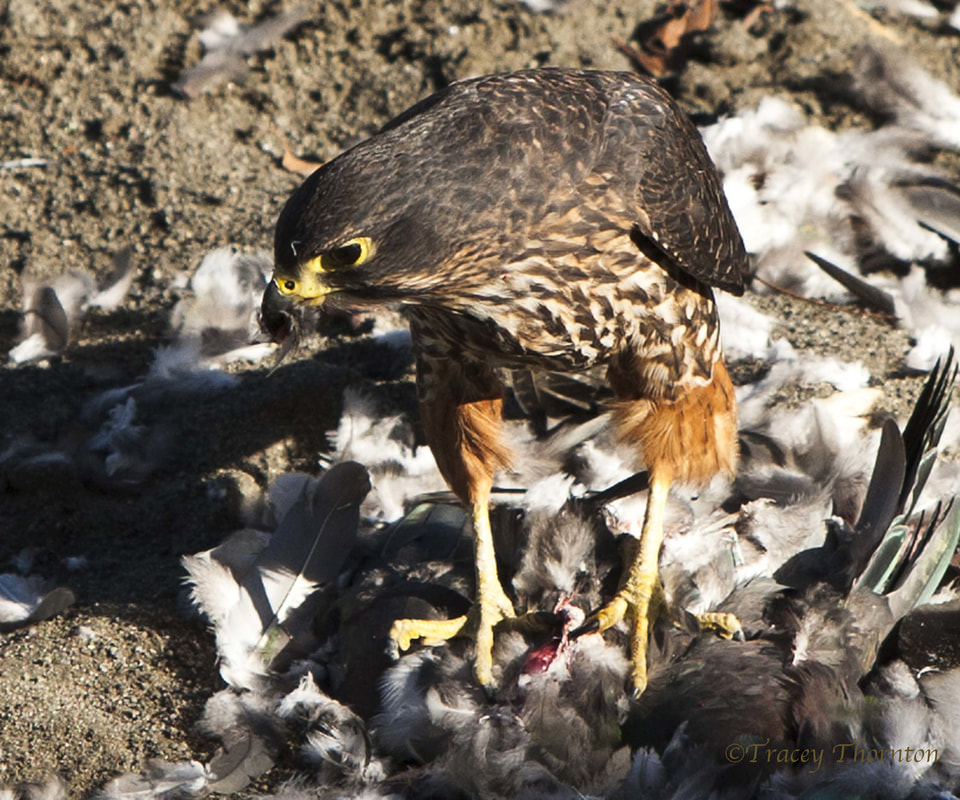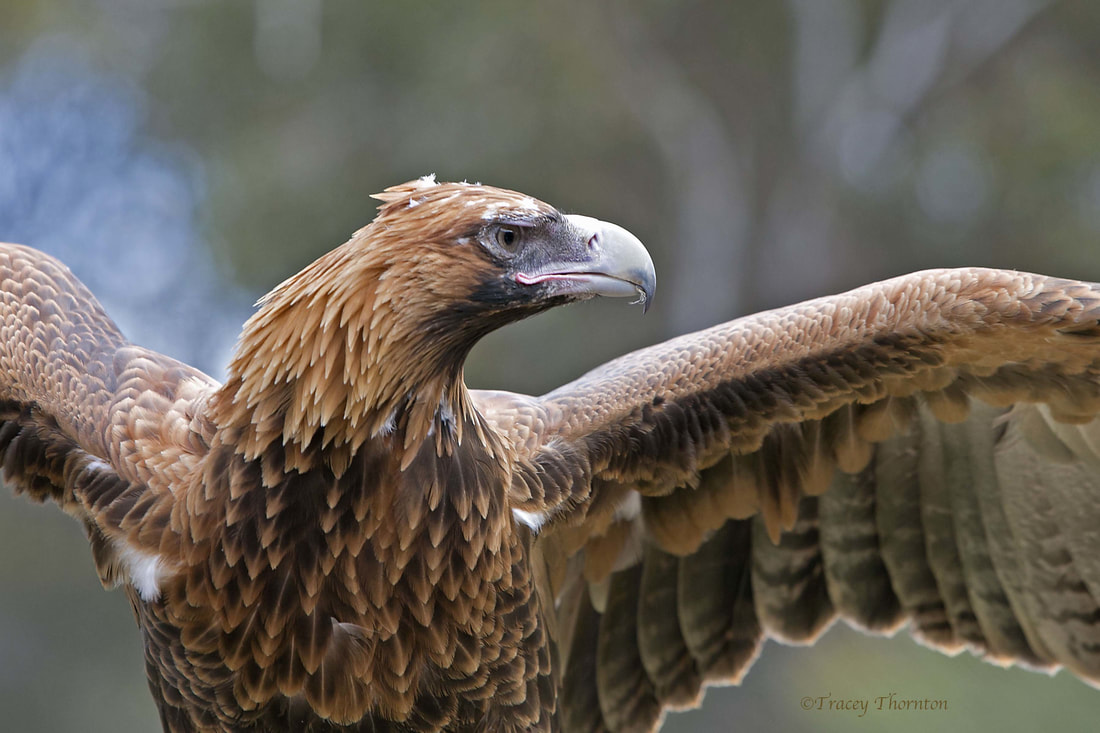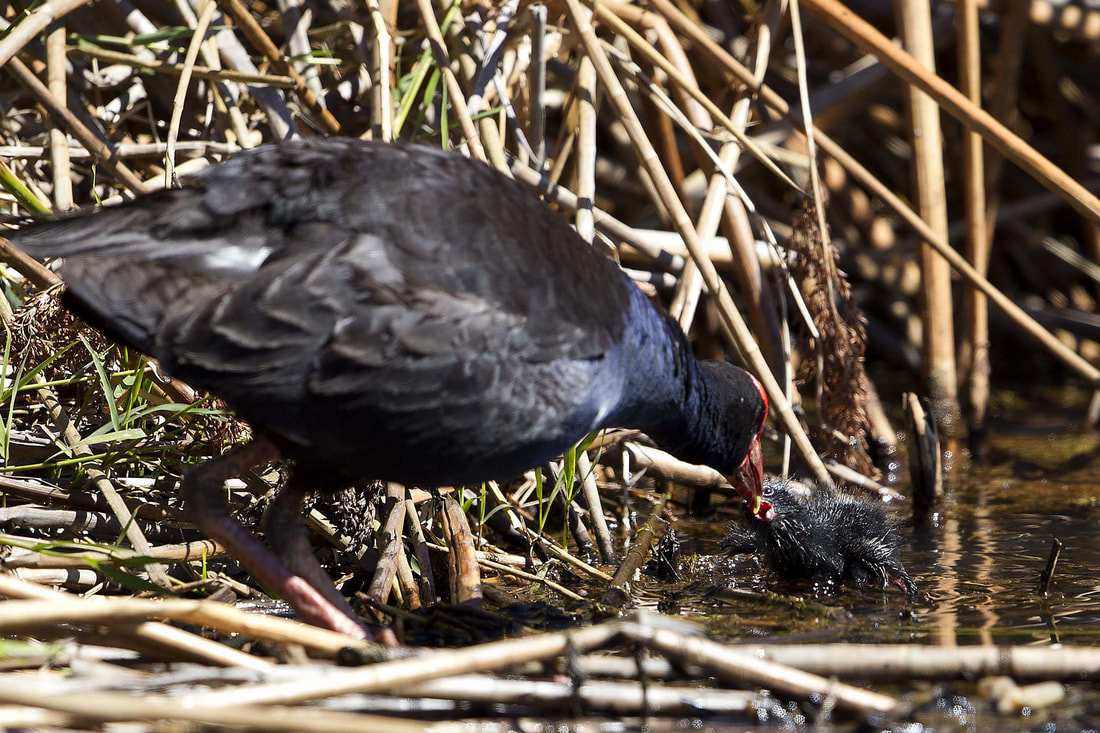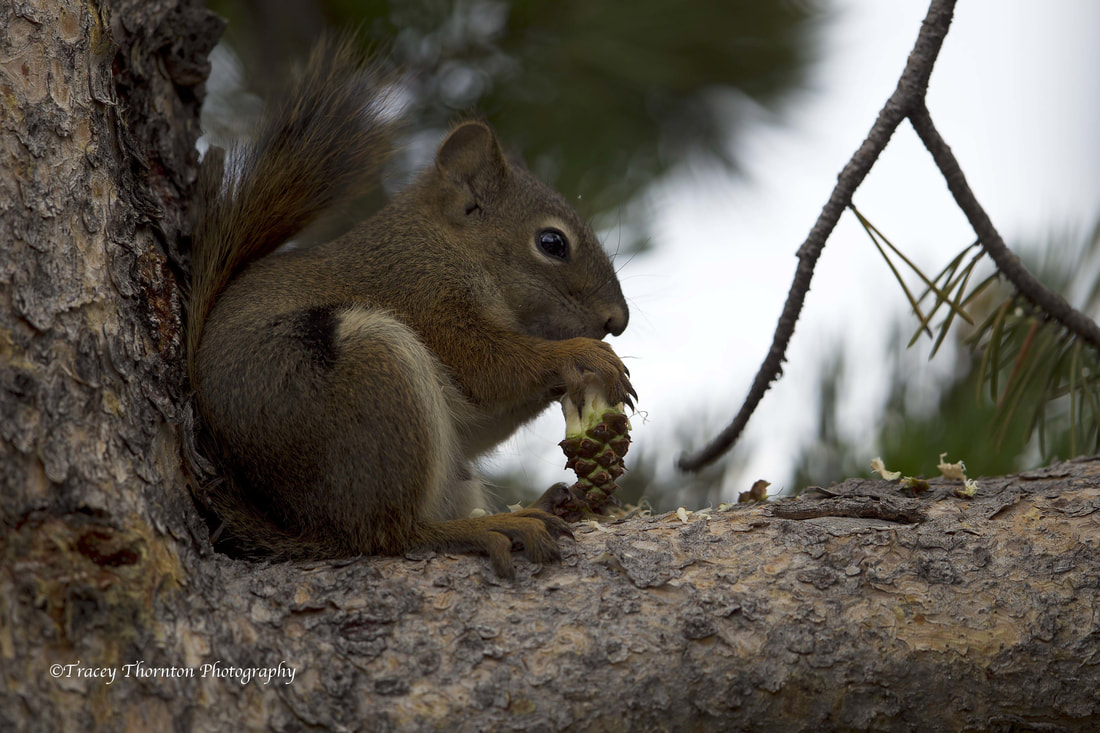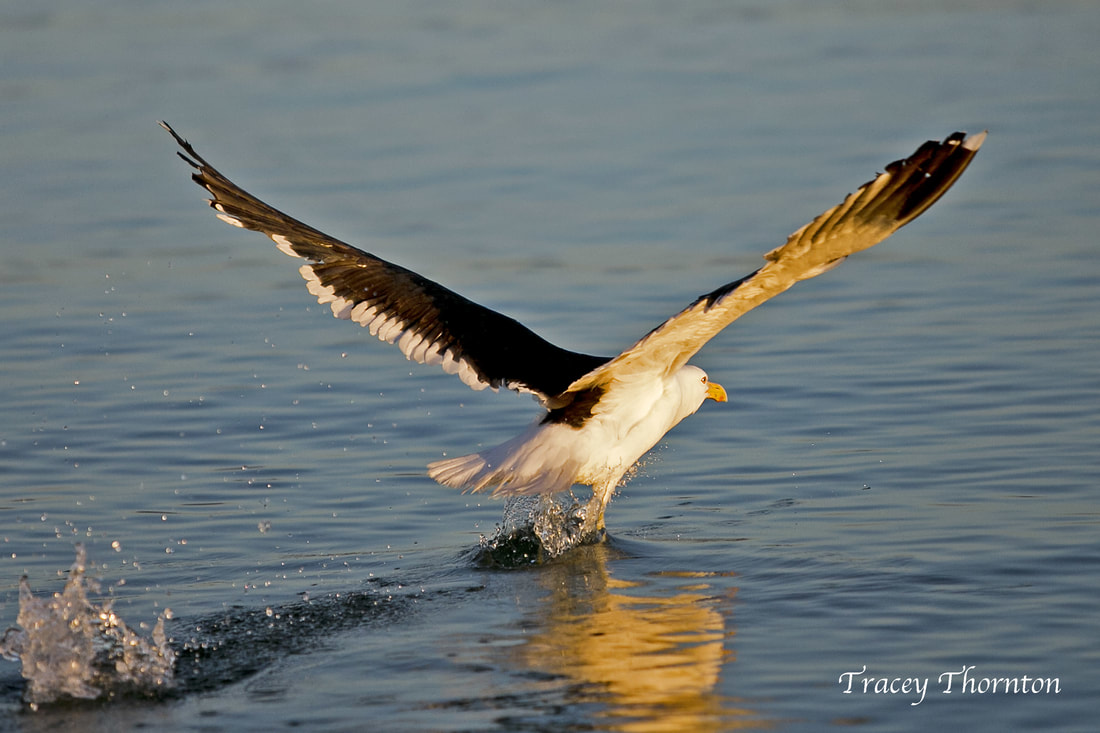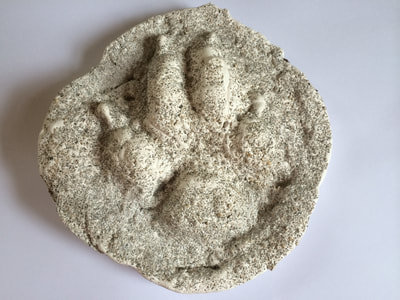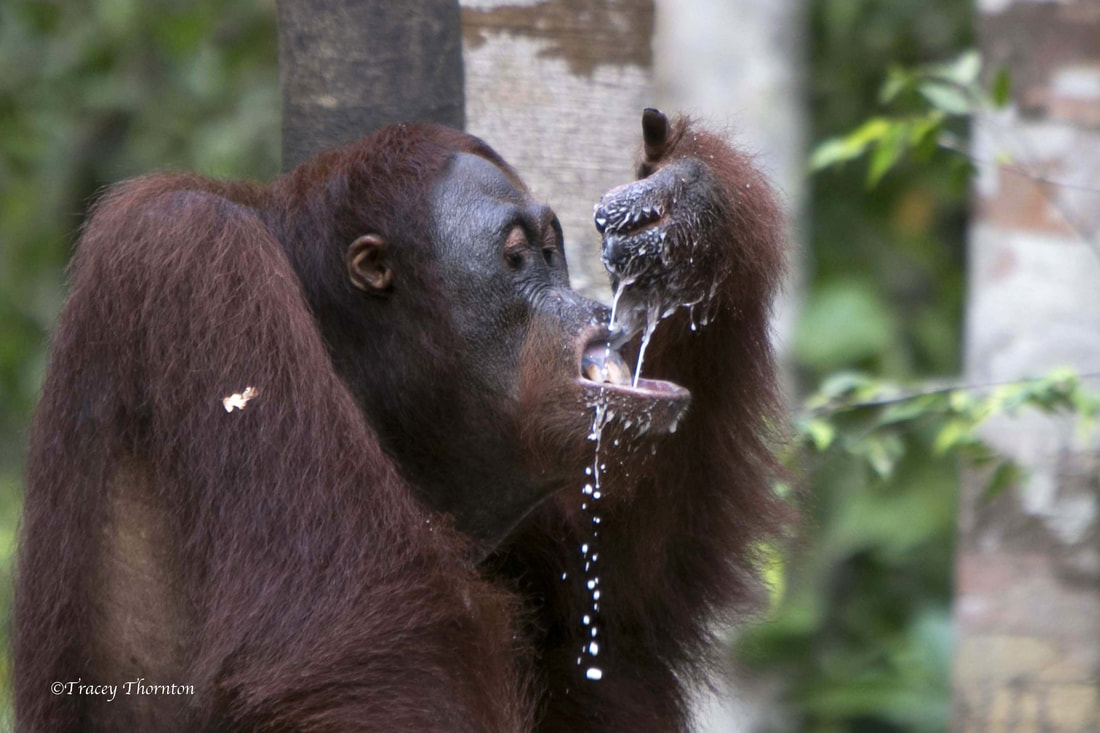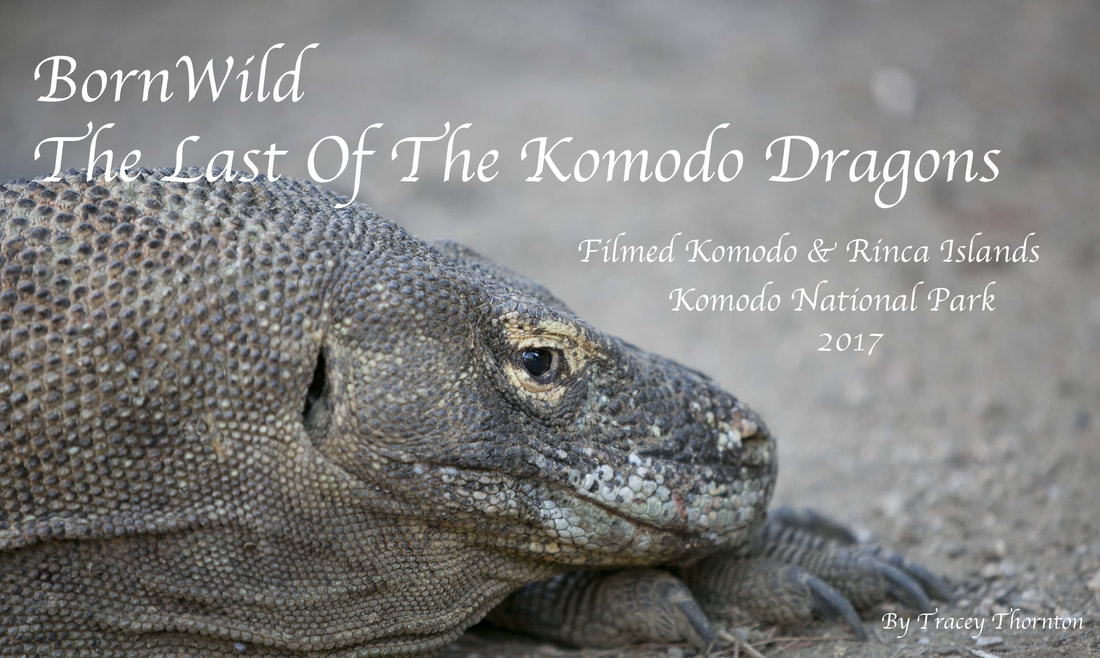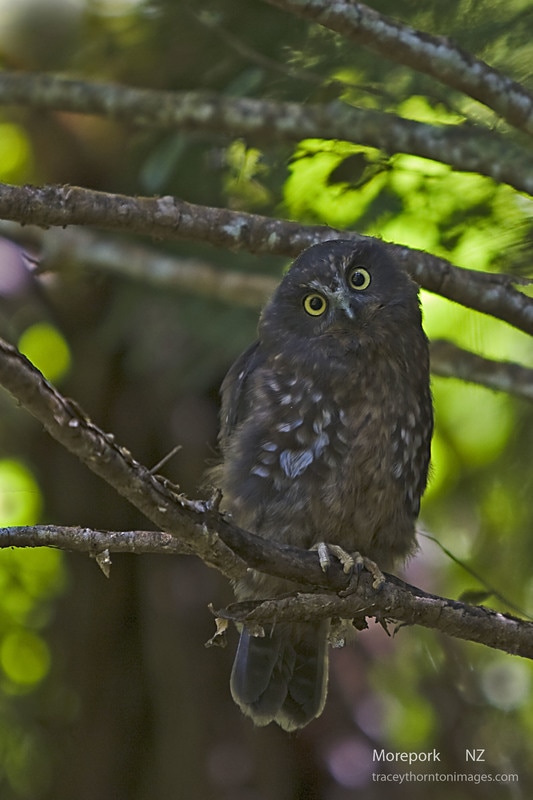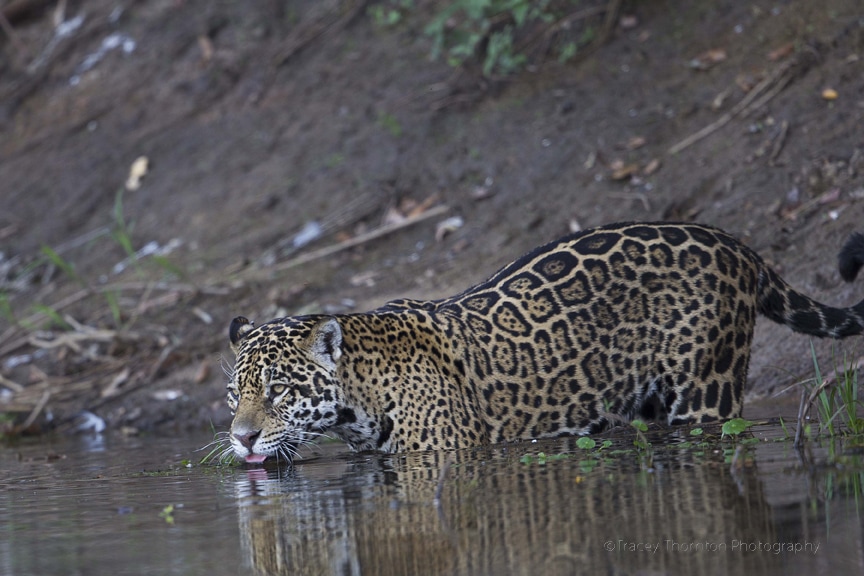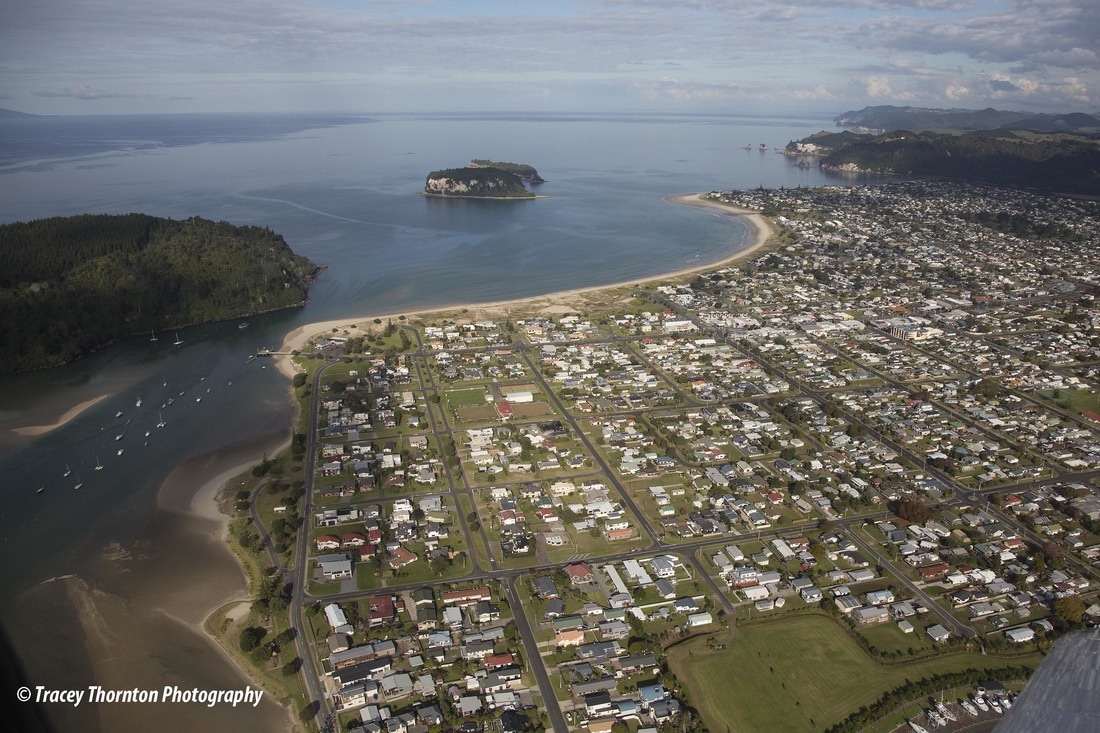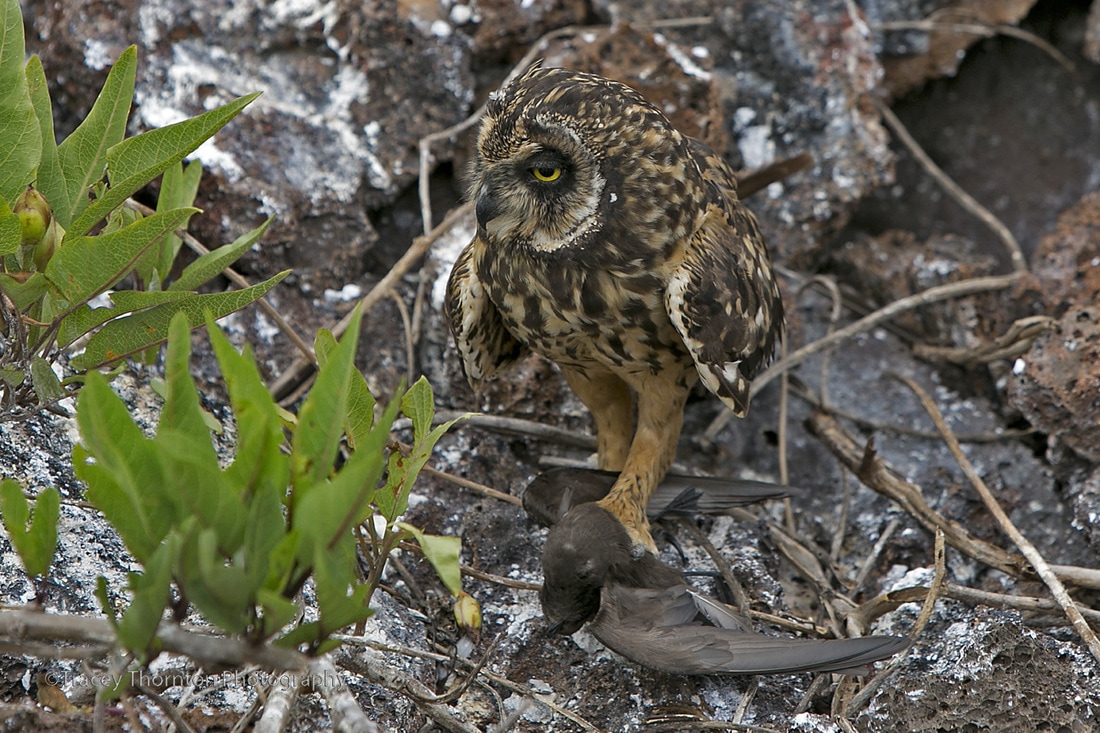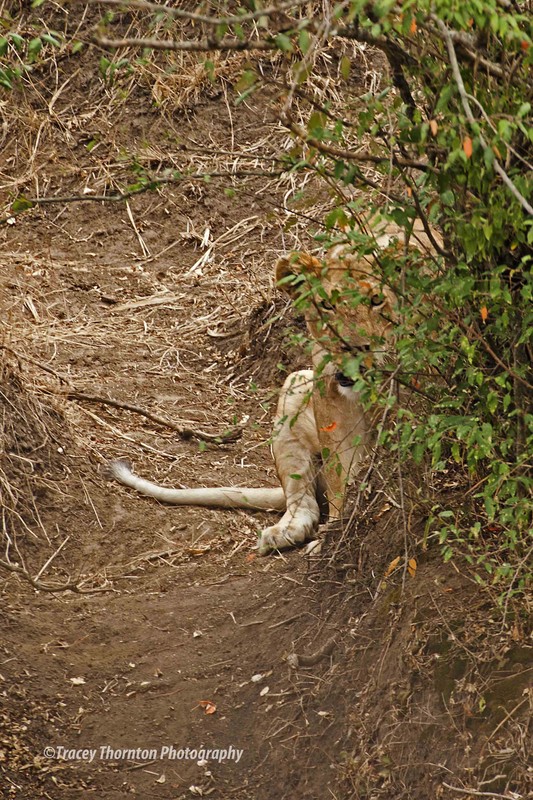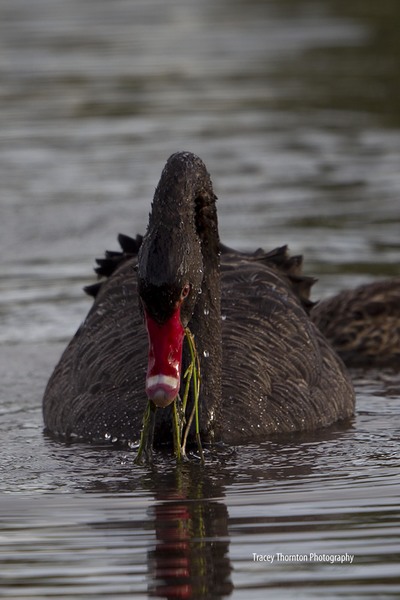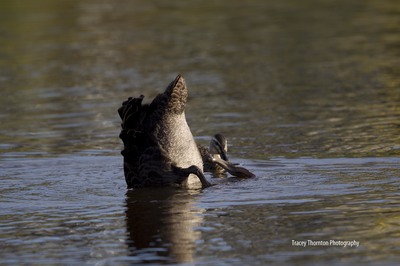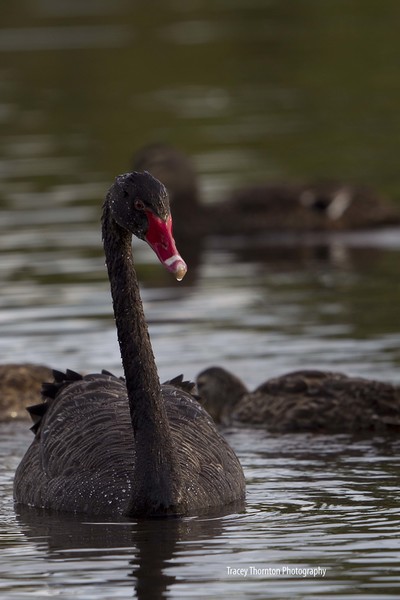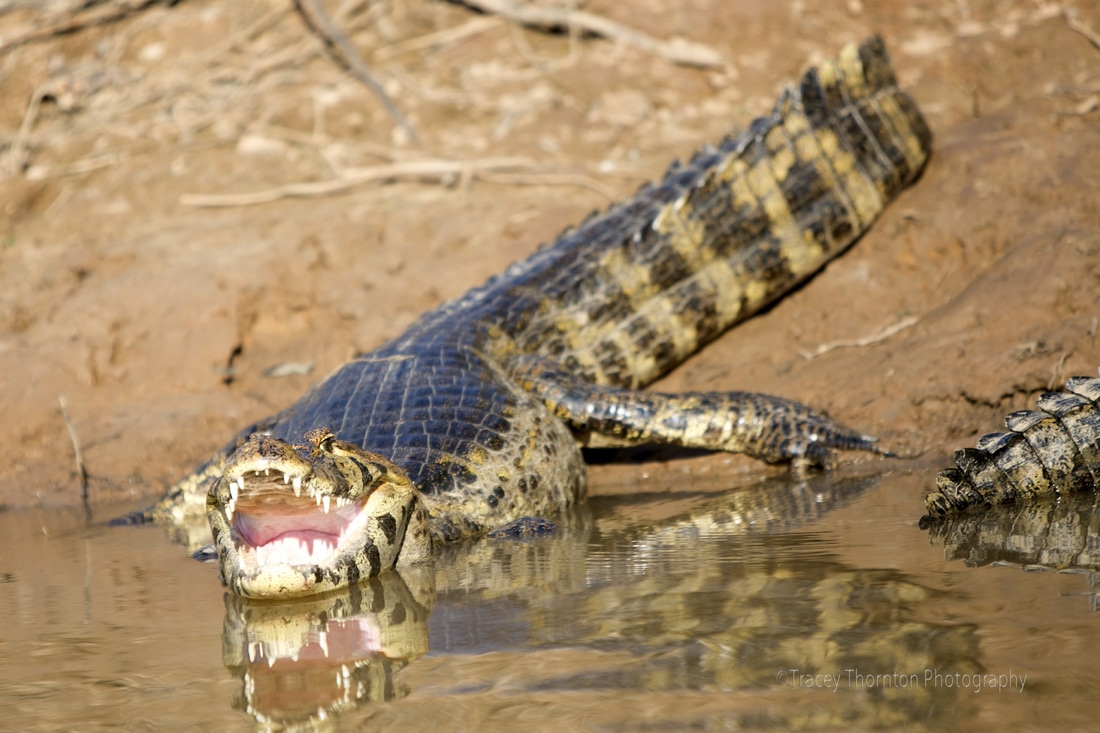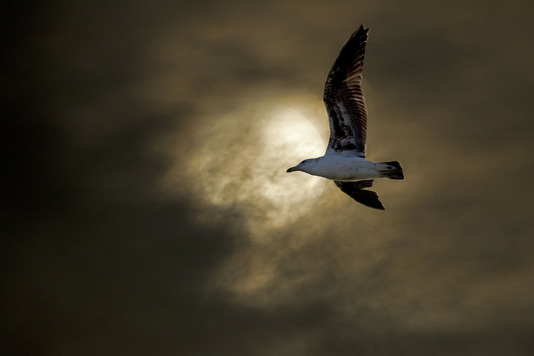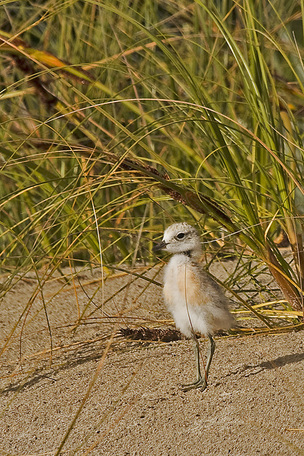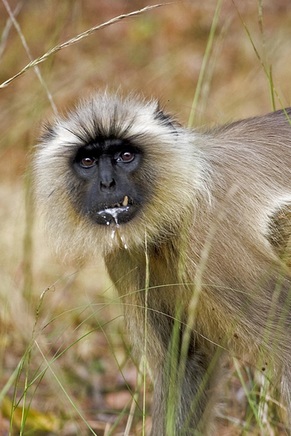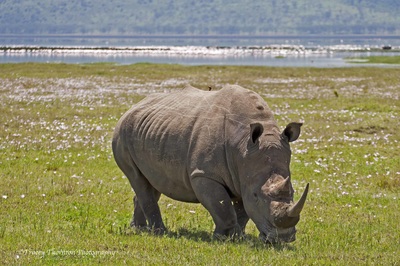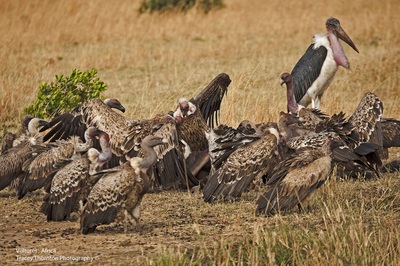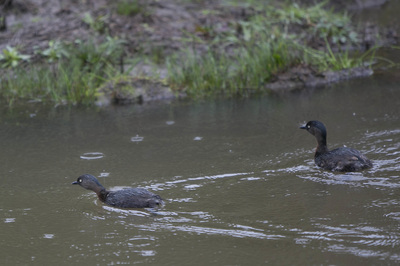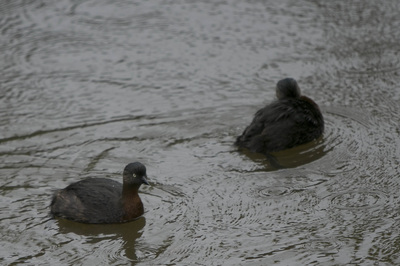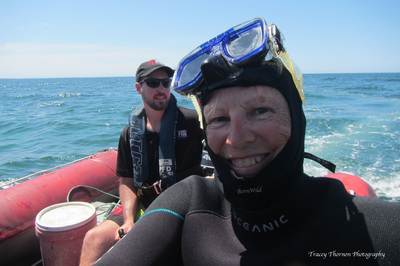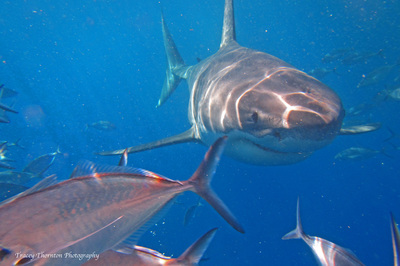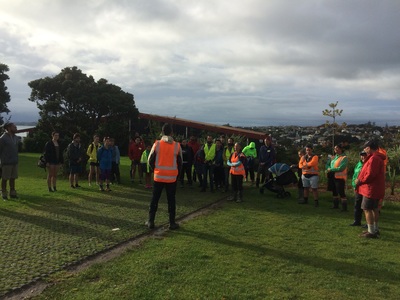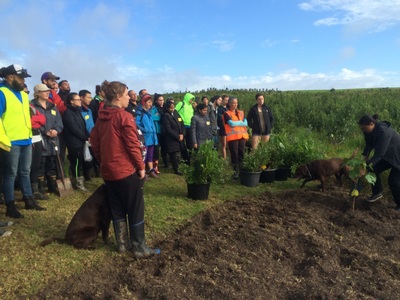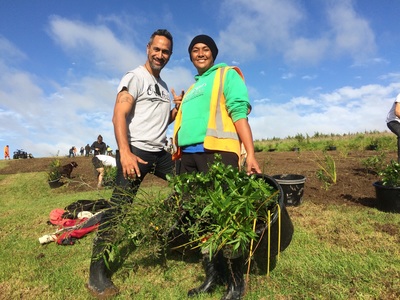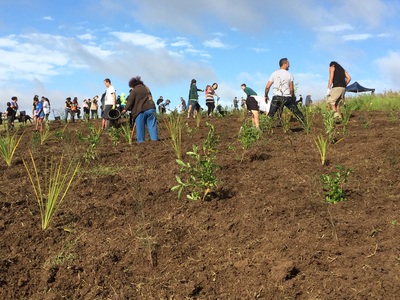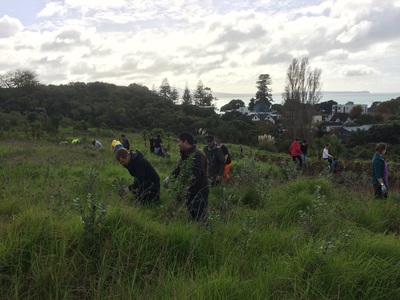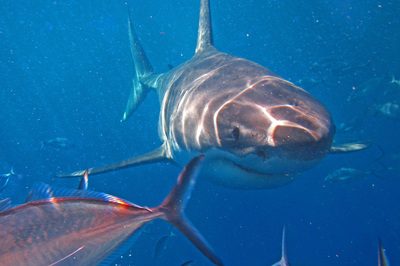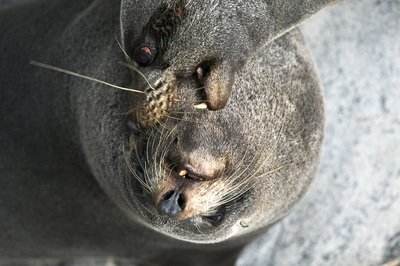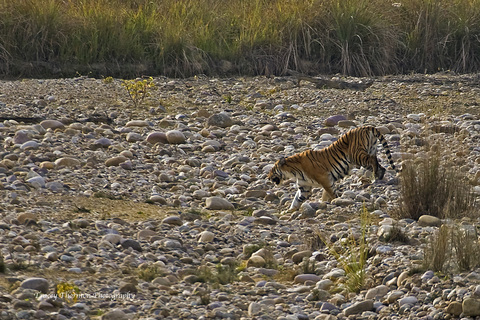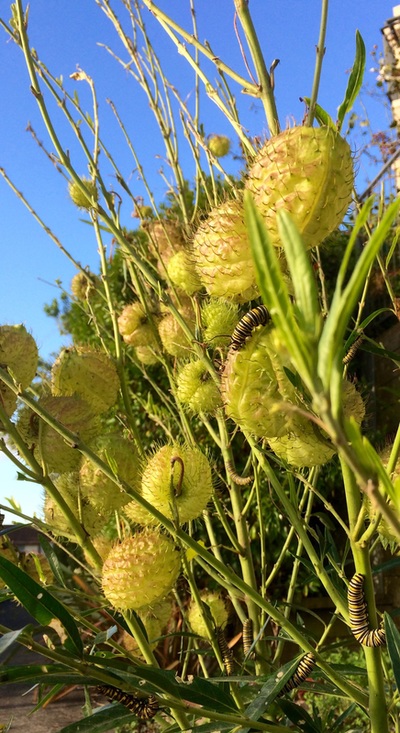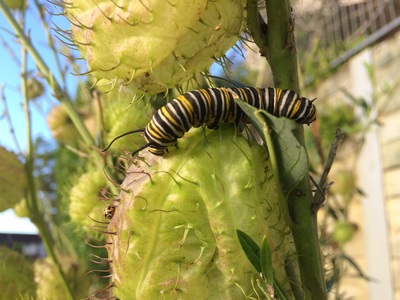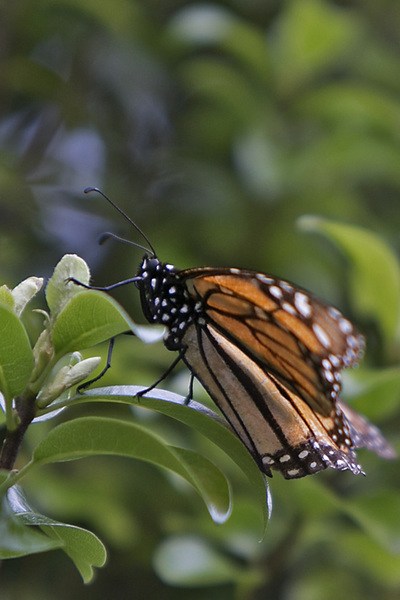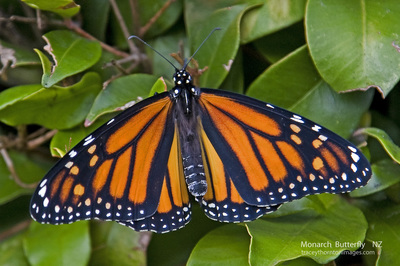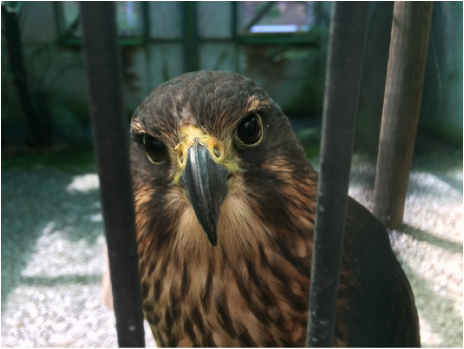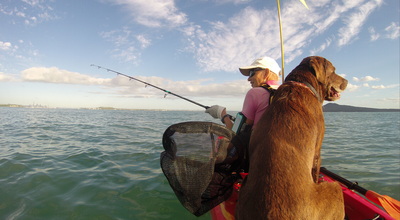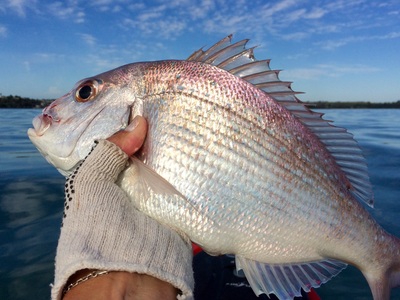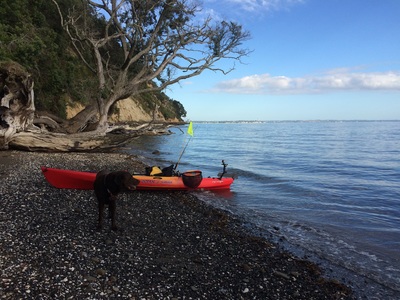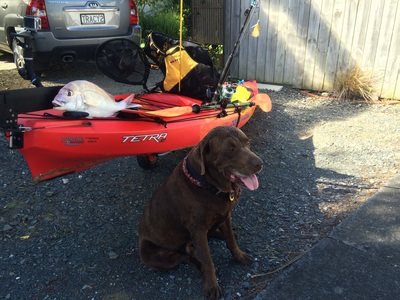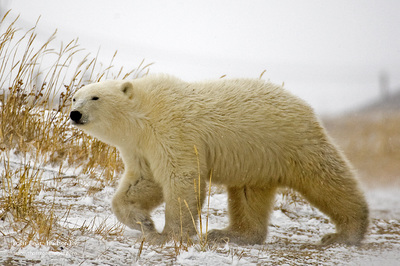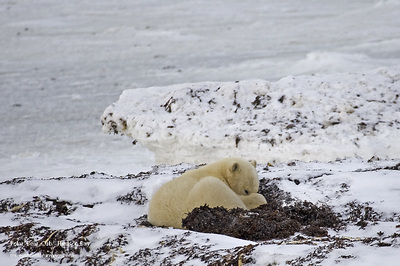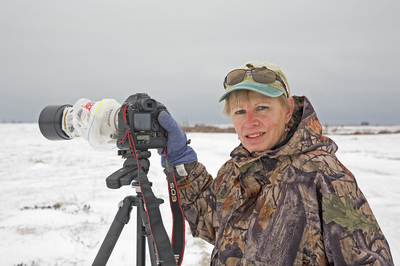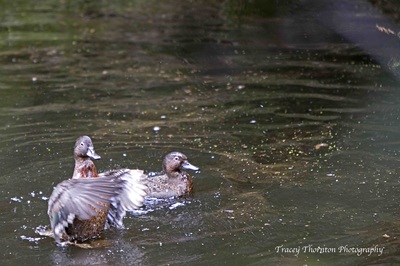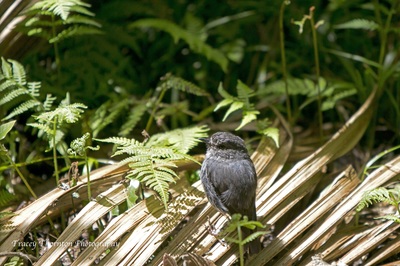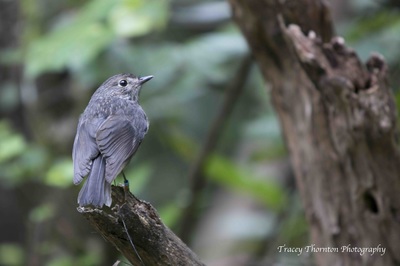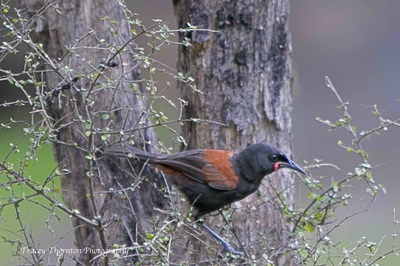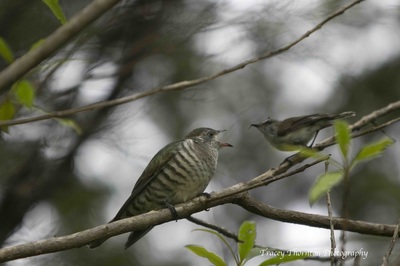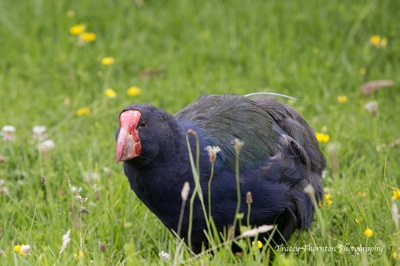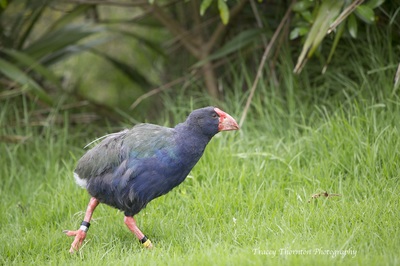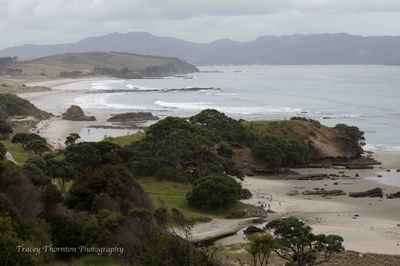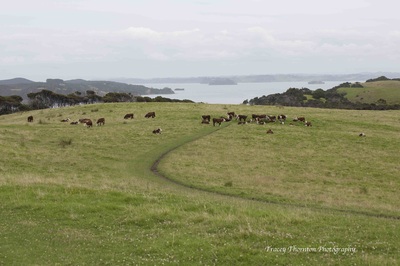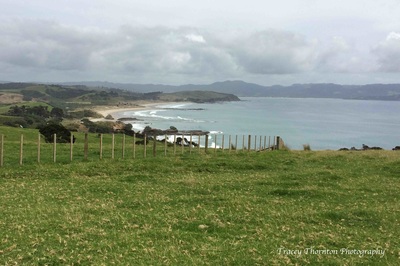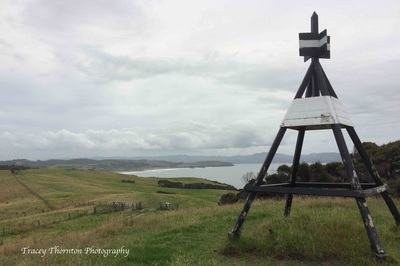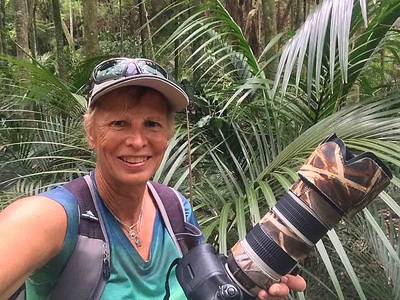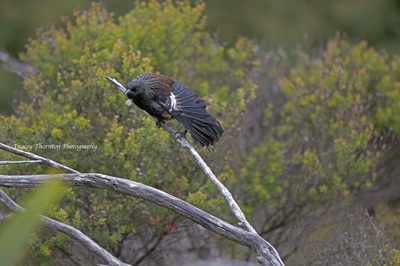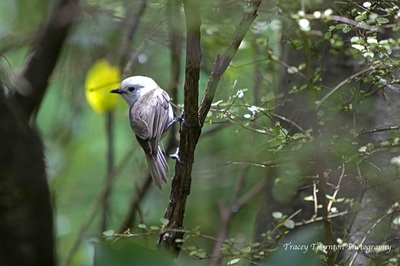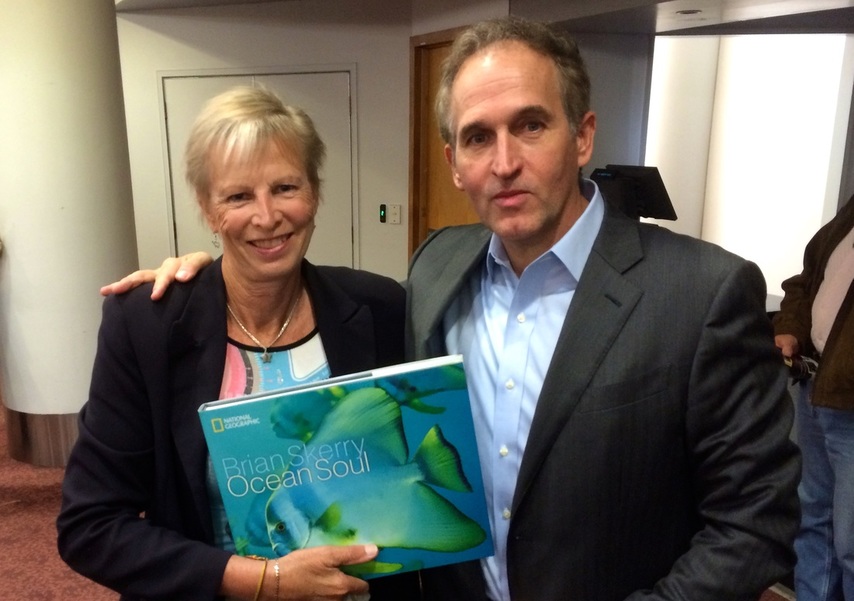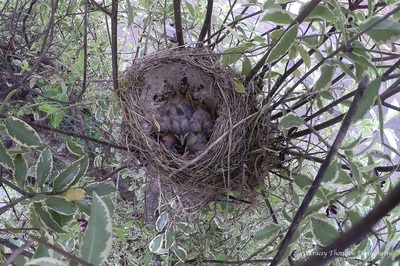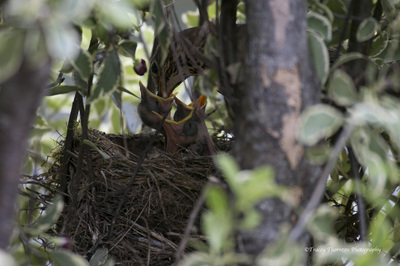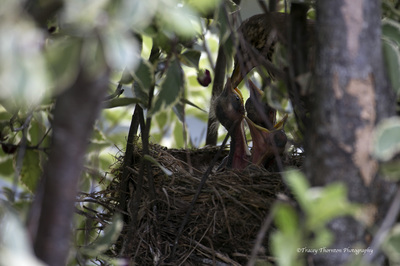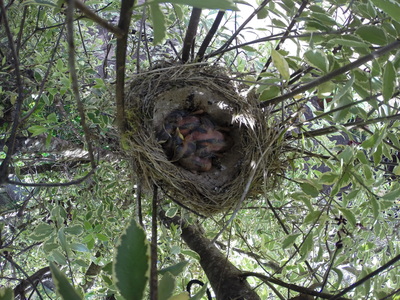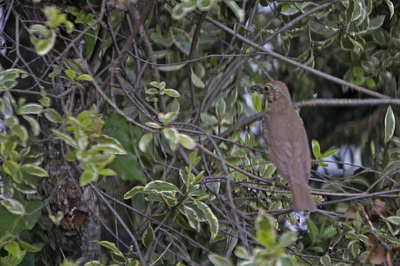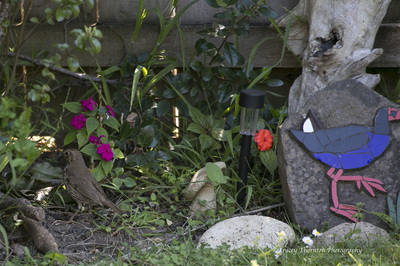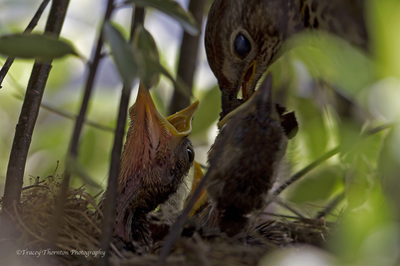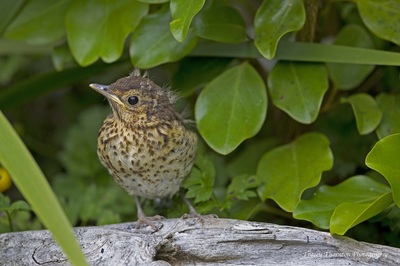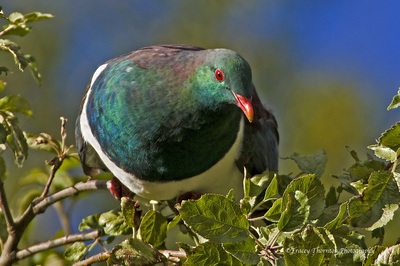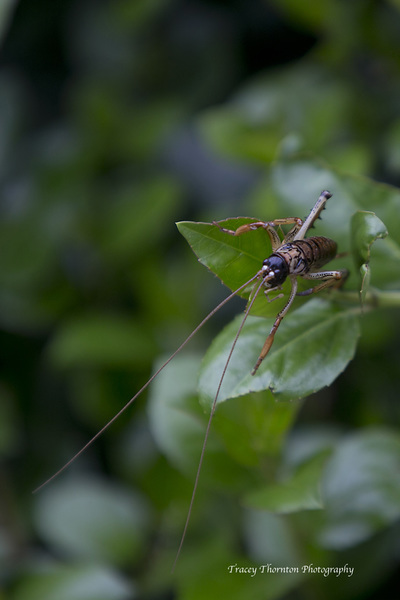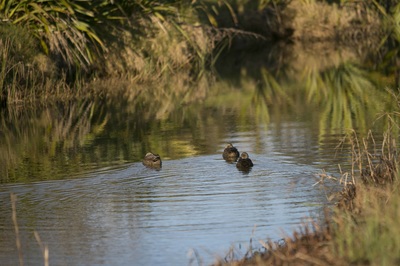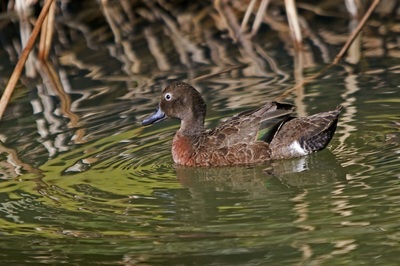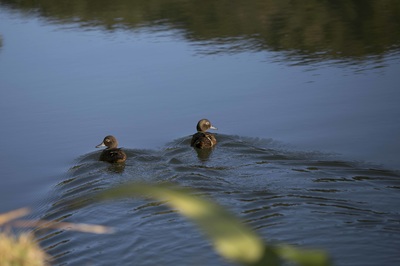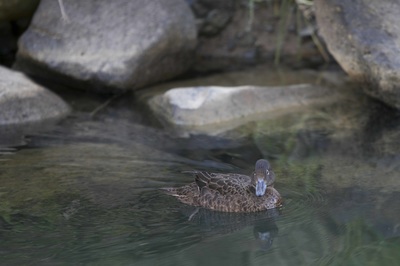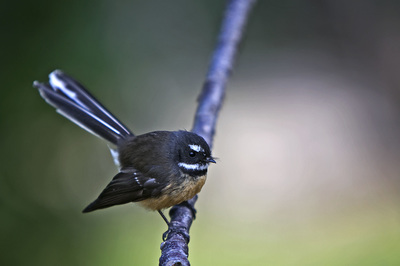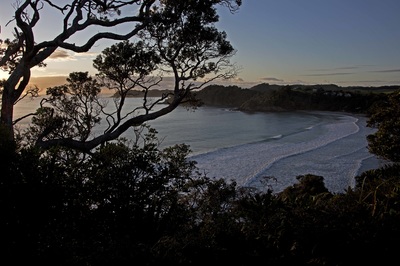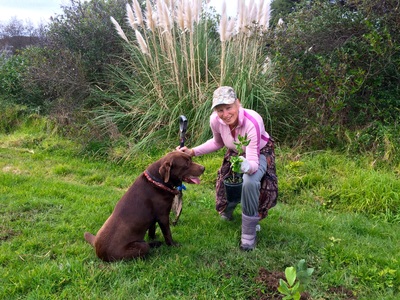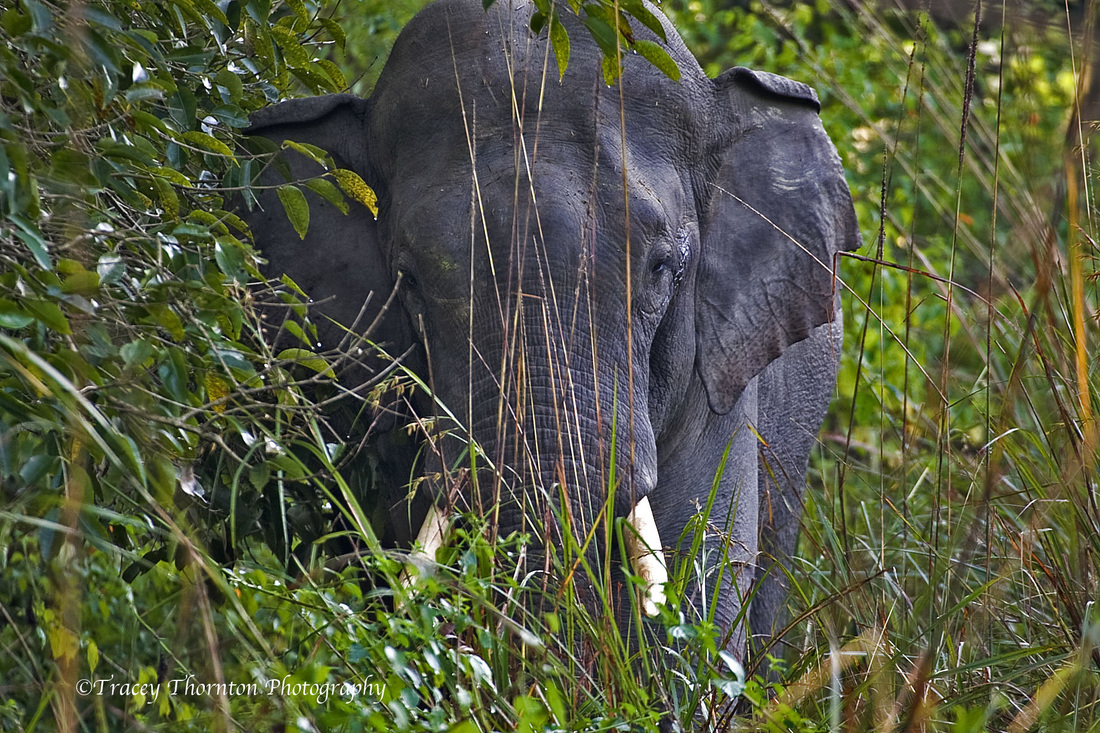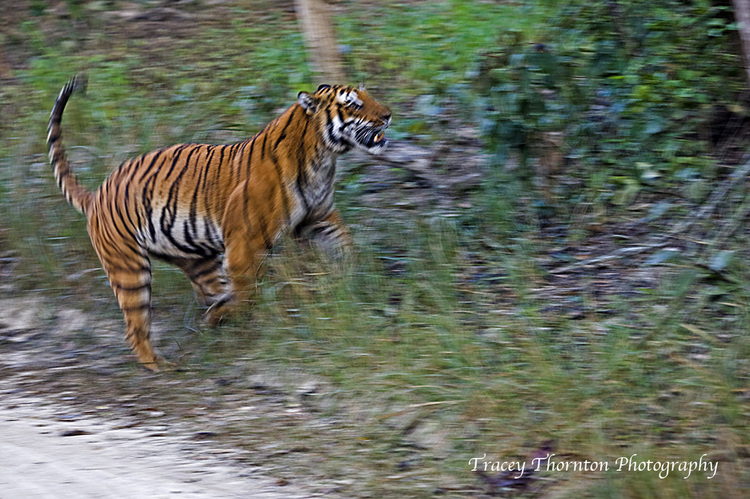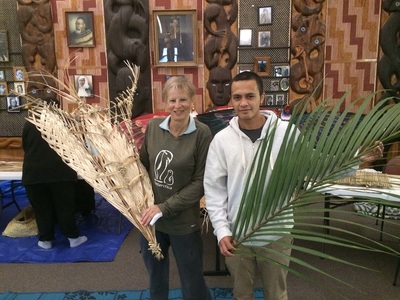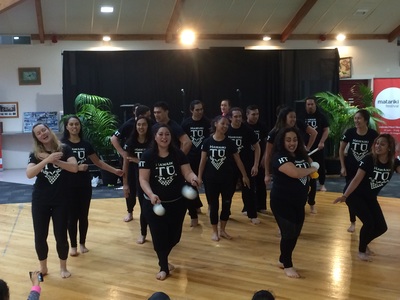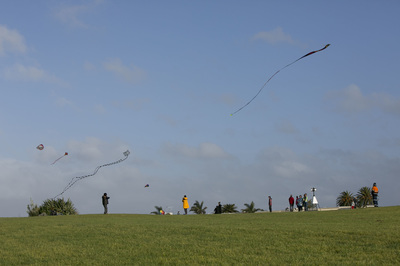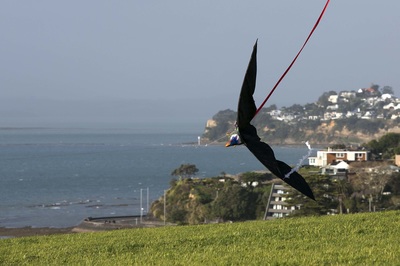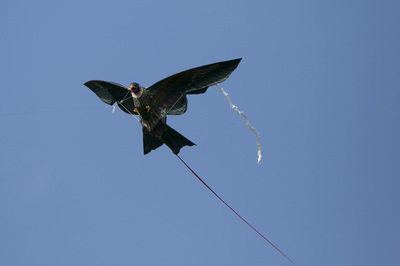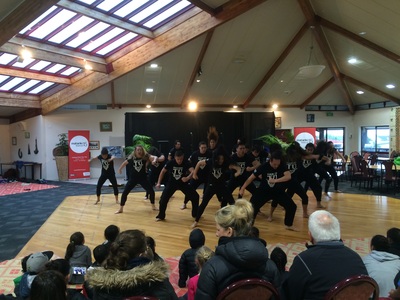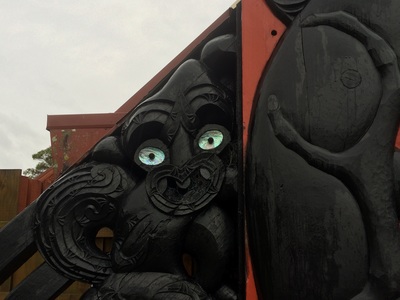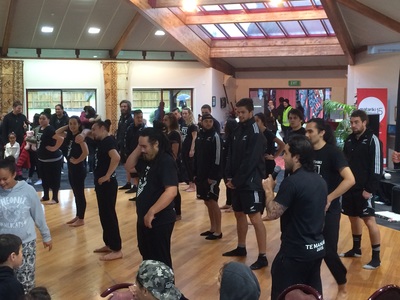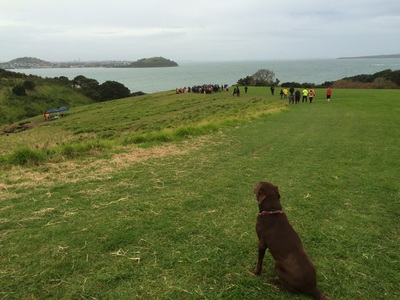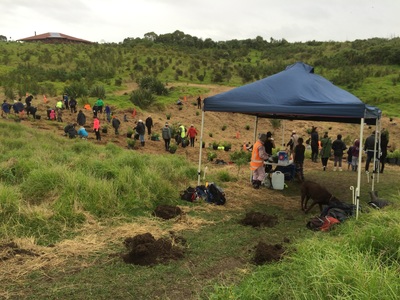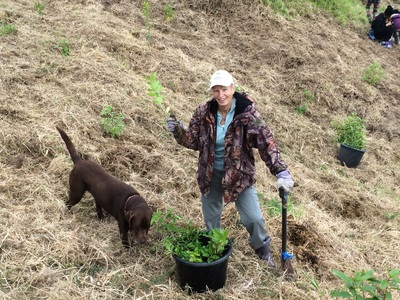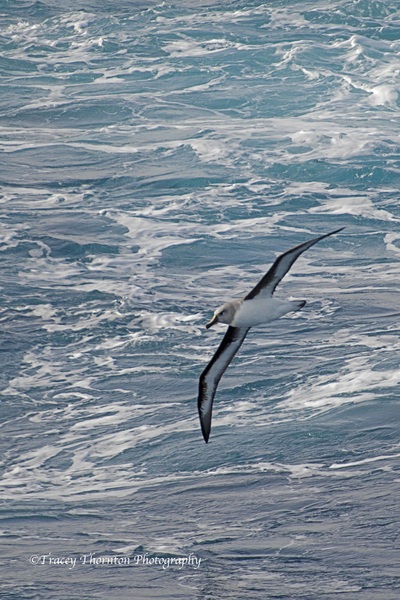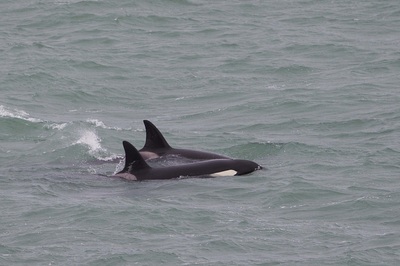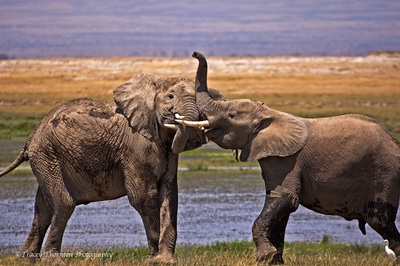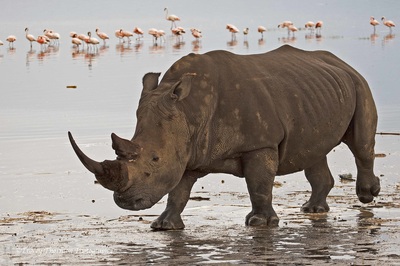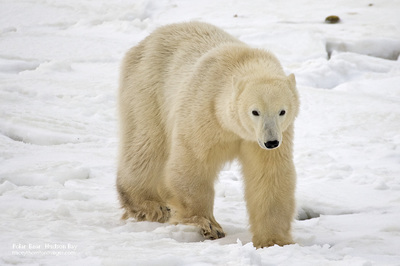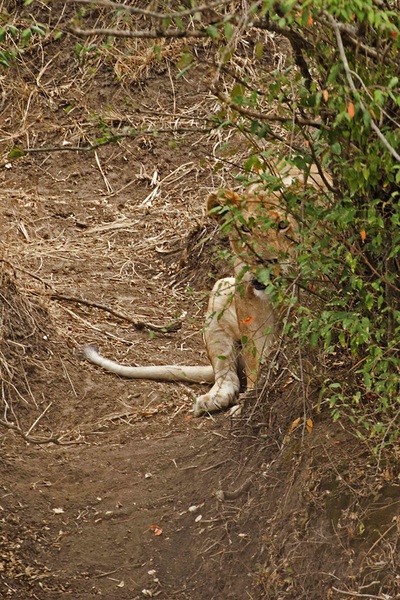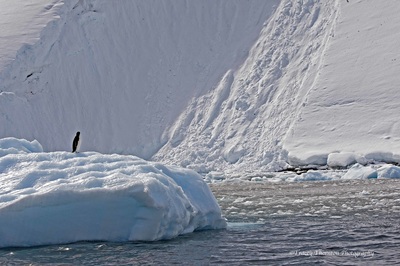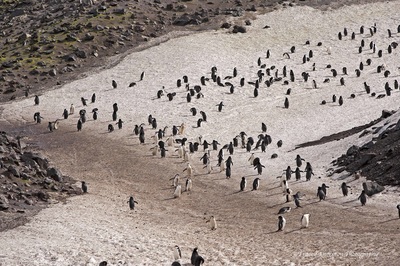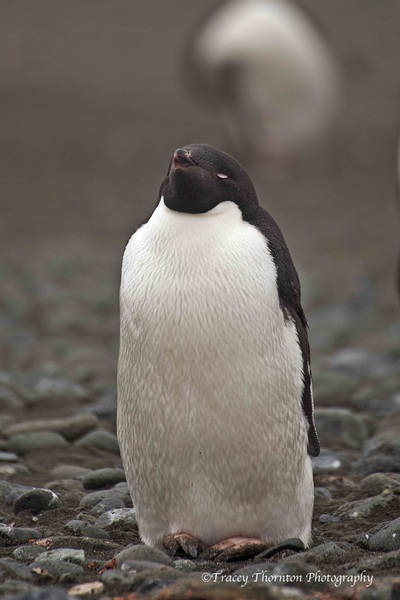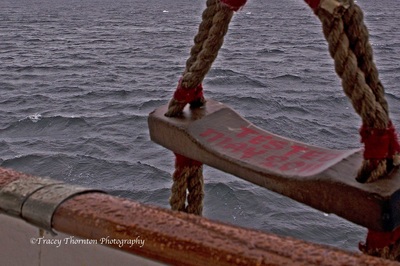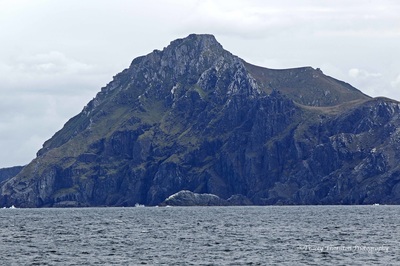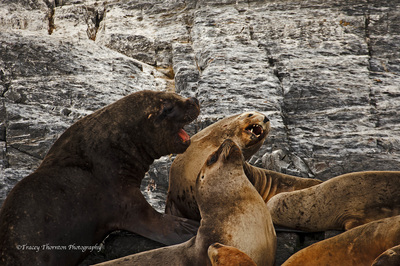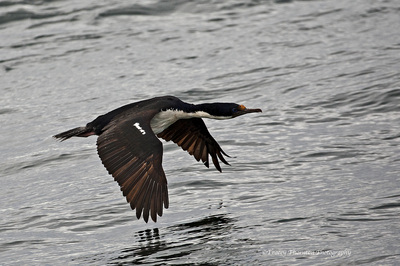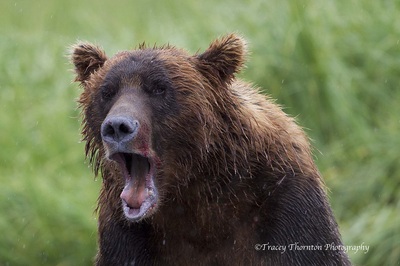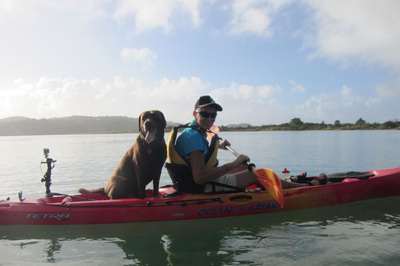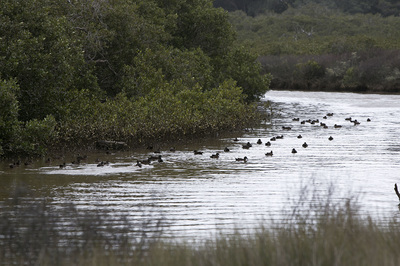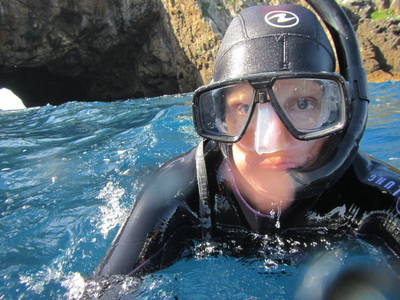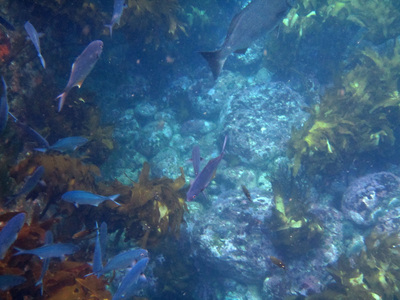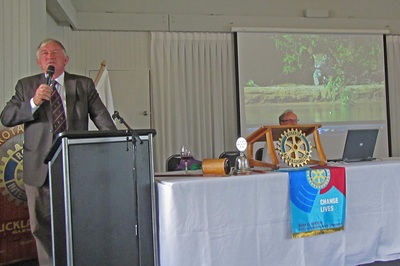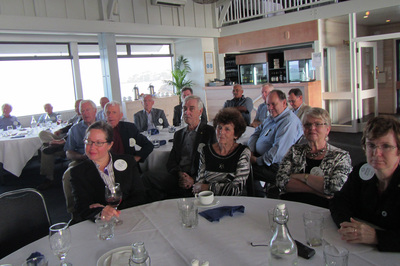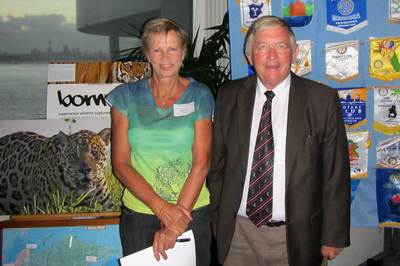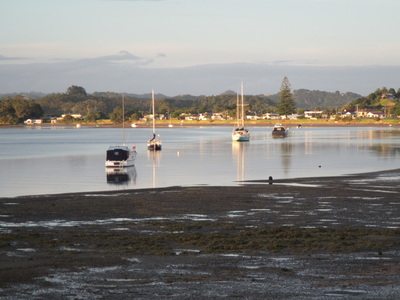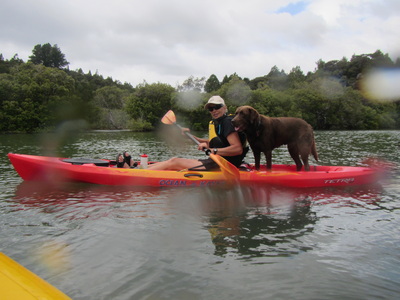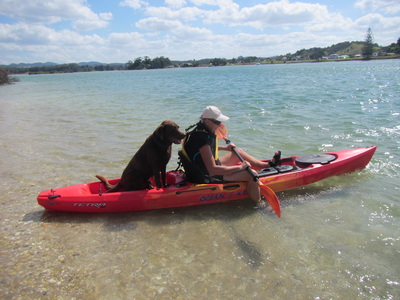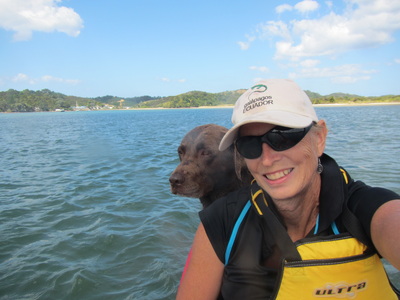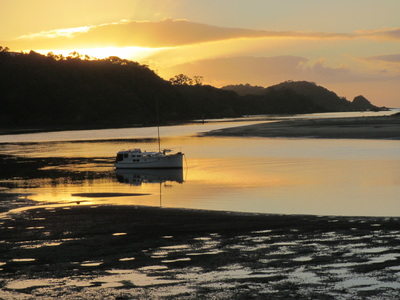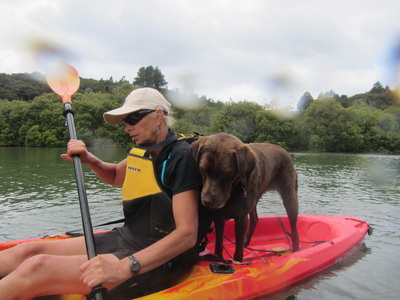BornWild Image Of The Month
Grizzly Bear charge in Alaska
Filming early one morning this brown bear took exception to my presence as I had unknowing got in between her and her cubs
Grizzly Bear charge in Alaska
Filming early one morning this brown bear took exception to my presence as I had unknowing got in between her and her cubs
BornWild Image Of The Week
South America - Iguazu Falls
I filmed 2013 in flood --- wooohooo
Largest waterfall system in world stretching 3km along border Argentina and Brazil, amazing wildlife around falls, including vultures, macaws, toucans, coati, agouti, and headed south to film the elusive jaguar
BornWild Image Of The Week Antarctic 2011
Sailing down the antarctic peninsula, greeted by petrels with a stunning back-drop of the ice cliffs
BornWild Image Of The Week - Nov 2009
This Polar Bear stalking some husky dogs on shores of Hudson Bay while waiting for the bay to freeze over so they can hunt seals out on the sea ice
Polar Bear Status - Vulnerable due to climate change
BornWild Image Of The Month
Mountain Gorilla
Rwanda Virunga Mountains 2010
World Population 1000 - Status Endangered
BornWild Image Of The Month
Foothills of the Himalayas Nth East India
Magnificent Royal Bengal Tiger roaring as he on the charge just past me, PHEW !!!!!!
STATUS - Endangered
Habitat Loss - Human Wildlife conflict, - Effect of climate change
BornWild Image Of The Week
Alaska Assignment - Katmai 2014
Katmai's brown bears are some of the largest bears in the world.
Trip Notes 4pm
Still raining so decided to go ashore and to try and film some salmon in the rivers with GoPro underwater camera. No luck, as the water cloudy and salmon hard to find.
We had just disembarked from the skiff when the mum that had lost cubs that morning appeared running right at me calling for her cubs, growling, grunting and frothing at the mouth. Just time for a couple of quick shots as she fled past. Phew, a close call! Chuck had the pepper bear spray out, but he was way in front of me. I called this bear Crazy Mumma for good reasons.
BornWild Image Of The Week
Serengeti Africa
Brothers in Arms - Lions on the war path
Loss of preyspecies and human encroachment have caused their numbers to decline, now listed as vulnerable to extinction (Nat Geo)
BornWild Image Of The Week
Dabchick (Weweia Poliocephalus rufopectus) New Zealand Coromandel
The nest is a loose pile of aquatic vegetation. Successful nests contain 2-3 bluish eggs which gradually stain brown.
Here at Cook’s Beach our precious population of
weweia live on two local lakes.
The parents share incubation (22-23 days), and chick-rearing duties. Chicks
can swim immediately after hatching but usually ride on parents' backs for the first three weeks. They are fed by the adults for around
70 days.
THREATS
Because they are so dependent on lakes and ponds, weweia are vulnerable
to changes in water quality and lake levels. Their floating nests can easily be swamped by boats, jet-skiers and
water-skiers. The nests are anchored to aquatic plants near the shore so nesting adults, eggs and chicks can be
reached by predators especially water-loving Norway rats.
BornWild Image Of The Week
Royal Bengal Tiger Assignment
Corbett, India, 2008
Tracking on foot is not recommended in the jungles here, even on top of our park ranger trained elephant, my mahout struggles to keep our elephant calm as we near a tiger mum and 2yr old cub, camourflaged in the grass as high as our elephant
BornWild Image Of The Week
Komodo Dragon Komodo National Park, Indonesia.
In 2017 a long trek from NZ to document the worlds largest lizard, now on the “Endangered” species, marking it as having high risk of extinction, kept me and my guide on our toes as seen here, not a great move to get to close Tracey, although had my trusty forked stick !!!!
Saving the komodo dragons also means conserving their natural prey, such as deer and pigs.
BornWild Image Of The Week
NZ Nature Conservation Week - 4–12 September 2021
Black Swan, This is the forth year this couple have nested here on Mallard Lake, with many obstacles to overcome, (as image from my sky cam shows, almost under water from recent rains) they have successfully fledged two from last year that have made home on a nearby waterways. Black Swans form isolated pairs in shallow wetlands. Birds pair for life, with both adults raising one brood per season. The eggs are laid in an untidy nest made of reeds and grasses. The nest is placed either on a small island or floated in deeper water.
BornWild Image Of The Week
Great Rift Valley, Kenya
BornWild Image Of The Week
North out of Campbell River - Vancouver Island, Canada 2009
Assignment - Survive the wilderness
Float Plane - Bear & Elk hunt
BornWild Images Of The Week
India - Assignment Tiger
Foothills of the Himalayas 2008
BornWild Image Of The Week
Galapagos Islands 2013
A challenging assignment, with many rewards, following Charles Darwin footsteps of 1835
The Galápagos Islands is a volcanic archipelago in the Pacific Ocean. It's considered one of the world's foremost destinations.
Charles Darwin visited in 1835, and his observation of Galápagos' species later inspired his theory of evolution.
WORLD OCEANS DAY 2021
With 90% of big fish and shellfish populations depleted, and 50% of coral reefs destroyed, we are taking more from the ocean than can be replenished.
The ocean covers over 70% of the planet.
It is our life source, supporting humanity’s sustenance and that of every other organism on earth.
The ocean produces at least 50% of the planet’s oxygen
BornWild Image Of The Week
Banded Rail (leucistic) Cooks Beach Coromandel NZ
This white bird is a very rare occurrence, compared to normal rail
Status - At Risk, declining
BornWild Image Of The Week
Australasian bittern/matuku seen here on Mallard Lake Coromandel NZ
Status - Threatened–Nationally Critical
Under 1000 birds left in NZ, they are very secretive and found in wetlands, feeding on eels, molluscs, worms, frogs and lizards
When threatened they adapt a head straight up in the air
BornWild Image Of The Week
Tongariro National Park - Central North Island - NZ.
Tongariro is New Zealand's oldest national park and a dual World Heritage area.
Much of the forest around park is mountain beech and exists above 1000m.
Home to Northern Brown Kiwi, Short-tail Bat, Whio (Blue Duck), Kaka, Karearea (falcon), Kereru (wood pidgen),
BornWild Image Of The Week
Arctic Fox Hudson Bay Canada
Status Critically Endangered
This is one of my favourite foxes, seen here hunting lemmings hiddden under the snow
Saved from extinction by a hunting ban in 1928
Assignment Polar Bear - November 2009
BornWild Image Of The Week
Kotuku - White Heron South Westland New Zealand
In New Zealand it only breeds near Whataroa, South Westland, between September and January.
BornWild Image Of The Week
North Island Brown Kiwi
Tongariro National Park NZ
We are attaching a tracking unit to this 5 week old chick, two weeks later both dead, killed by stoats
Kiwi can live for between 25 and 50 years. Chicks hatch fully feathered. They emerge from the nest to feed at about five days old and are never fed by their parents. Juveniles grow slowly, taking three to five years to reach adult size.
BornWild Image Of The Week
Polar Bear 2009 Hudson Bay Canada
This bear locked onto me when filming, so my guide decided for us to make a hasty retreat, bears can run 35km hr so that is not an option
Polar bears can live up to 25yrs and males can weigh 680kg and stand 3m tall, are the world's largest land carnivores. They are larger than tigers, lions and other species of bears. They are also the most carnivorous of all bears, primarily eating seals
BornWild Image Of The Week
New Zealand dotterel
Found from early October breeding on our beaches
The endangered New Zealand dotterel/tūturiwhatu is found only in this country.
The dotterel was once widespread and common. Now there are only about 1,700 birds left,
On the beach, nests are easily destroyed by careless feet, dogs and off-road vehicles. When adults are disturbed while incubating and leave the nest, the eggs are at risk of overheating. When young chicks are disturbed, they can die from exhaustion as they cannot eat in time, or get to their feeding grounds at the water’s edge.
Uncontrolled dogs running through nesting areas can crush eggs, disturb nesting adults, and kill chicks. Many beaches have dog restrictions and owners should be aware of these - respect and obey them.
Predators
Hedgehogs, stoats, cats and rats are the most common predators of eggs and chicks.
BornWild Image Of The Week
India North East Indian Elephant 2008
I wonder if this old bull is surviving today, he wandered into the frame after the sun had set near Corbett on assignment
STATUS - ENDANGERED
They require corridors to move about and live up to 50yrs in the wild. Only males have tusks so threats include Illegal wildlife trade of ivory tusks, habitat loss, trains,farmers and settlements
BornWild Image Of The Week
International Tiger Day
A Royal Bengal Tiger in full roar and charging, Corbett, North East India
Steve Winter - The largest of the big cats – and the most endangered, There are perhaps 4,000 left in the wild across their Asian range, with that number split among the five subspecies. India’s Bengals have the most hope, with about 2,900; meanwhile just a few hundred Indochinese, Siberian, Sumatran and Malay tigers remain.
BornWild Image Of The Week
Africa - Namibia 2007
At dawn a young pride male makes his way along the trail after I think a rough night
The Lions of Namibia. Many centuries ago, lions were one of the most numerous animals on earth. Today, their range has been decreased more than any other animal. Even in the conservation haven of Namibia, their populations are now confined mainly to the Northern reaches of the country.
BornWild Image Of The Week
Alaska - Katamai 2014 Home of the biggest Brown Grizzly Bears
Assignment to film these enormous bears without ending up dinner
BornWild - Image Of The Week
Great White Shark
My recent shark encounter out in our kayak the other day near Cooks Beach, Coromandel NZ, reminds me of the time a 4m Great White tried to get at me in a cage dive of the coast of Australia. Image taken just before it slams into cage,
BornWild Image Of The Week
NZ Falcon (karearea) Tongariro National Park
The New Zealand falcon is a raptor that feeds predominantly on live prey, and this falcon I filmed just killed a wood pigeon (kereru) in mid flight
Adapted to hunt within the dense New Zealand forests they are also found in more open habitats such as tussock lands and roughly grazed hill country.
BornWild Image Of The Week
Kiwi - Tongariro National Park NZ
This born in the wild 5 week old kiwi chick ready for release, after catching and attaching a tracking transmitter.
NB - Also a process where the eggs are carefully removed from the wild and hatched and when ready and strong, released back near where they came from have a better chance of survival
The North Island brown kiwi is Vulnerable,, with the major threat coming from predators, such as dogs, cats, and stoat 94% of chicks die before breeding in areas where pest control is not carried out.
BornWild Image Of The Week
Arctic - Hudson Bay - 2008
In 2008 assignment to Arctic to check up on the Polar Bear and wildlife living in these extreem weather
Polar bears call the Arctic sea ice home.
Polar bears need sea ice to hunt seals — and to travel, find mates, and raise cubs. But climate change is melting this vital habitat.
BornWild Image Of The Week
Katamai Coastal Brown Bears, Alaska - 2014
Mum and two cubs hunting salmon along the river bank
Still incredible, prized by hunters for their skulls and hides, up to 500 of Alaska's 1,500 brown bears killed yearly by hunters
BornWild Image Of The Week
Takahe - New Zealand
Status Threatened , with just over 400 birds throughout NZ
Rearer than the Kiwi
These amazing flightless birds once thought to be extinct, often mistaken for the pukeko, but takahe is much larger
BornWild Image Of The Week
Yellowstone - Wyoming, North America
Gorgeous Black Bear cub exploring with mum nearby,
(safe distance 100yds)
Status - least concern
BornWild Image Of The Week
Takahe - this juvenile is very precious to its species.
One of my favourite NZ birds , rediscovered in Fiordland, South Island in 1948, only around 350
status_- endangered
BornWild Image Of The Week
Christmas 2011 was one to remember, Antarctica
Coldest place on earth
Wildlife surviving in extreme conditions
BornWild Image Of The Week
Africa - Ngorongoro Crater Serengeti
Still King of the Jungle - Just
STATUS - Vulnerable (population declining)
BornWild Image Of The Week.
Polar Bears - Hudson Bay, Canada, Arctic
When I last visited this assignment beginning Nov 2009, the bears were waiting for the ice to freeze in the bay, so they could venture out onto the ice to hunt seals, this year 2019 reports that sea ice came earlier than average
BornWild Image Of The Week
South Island NZ
Kotuku (White Heron) In New Zealand it only breeds near Whataroa, South Westland, between September and January.
During breeding seasons, they grow long, loose breeding plumes from its back and wings.
BornWild Image Of The Week
Leopard Seal - Cooks Beach Coromandel, NZ.
I came across this seal on my afternoon beach walk, and was really surprised to find a leopard seal on my beach, since I have travelled all the way to Antarctica to film these seals. Seems in great condition, stayed for couple days.
Leopard seals primarily inhabit the Antarctic pack ice, but during autumn and winter animals disperse northward throughout the Southern Ocean, sometimes visiting New Zealand.Leopard seals prey on a variety of species, including krill, penguins, birds, fish
BornWild Image Of The Week
Tongariro National Park NZ
The New Zealand falcon or kārearea enjoying breakfast of a wood pigeon (kereru) after a mid flight attack.
New Zealand's only falcon, other common names for the bird are bush hawk and sparrow hawk. It is frequently mistaken for the larger and more common swamp harrier. It is the country's most threatened bird of prey, with only around 3000–5000 breeding pairs remaining.
BornWild Image Of The Week
World Elephant Day
Elephant numbers have dropped by 62% over the last decade, and they could be mostly extinct by the end of the next decade. An estimated 100 African elephants are killed each day by poachers seeking ivory, meat and body parts, leaving only 400,000 remaining
BornWild Image of The Week
World Environment Day
Releasing a 5week old Brown Kiwi chick in the Tongariro National Park NZ 2010
On a cold afternoon I had the privilege of helping to attach a tracking unit to a wild born kiwi chick and a successful release, only 10% wild chicks survive due mainly to predation by rats stoats, cats dogs
BornWild Image Of The Week
South America - Brazil - Pantanal - River Cats
Jaguars are ambush predators, so it pays not to be the hunted.
BornWild Image Of The Week
Yellowstone National Park
This little black bear cub, was playing down in some old tree fell, and so amazing to film, fighting with its brother.
Across north America typically born in February and are able to survive on their own by eight months, although they often will den with their mothers the following winter,
BornWild Image Of The Week - 2009
Asian Bull Elephant - Corbett National Park India
"Standoff", on my first encounter with these magnificent animals, early in the evening, it was not me and my team that held ground as we treated slowly, as not to aggravate this situation, as this bull was in a period called musth, mating activity, they can be very dangerous
live up to 60 - 70years
BornWild Image Of The Week
Kereru (Wood Pigeon) NZ
Beautiful colours
One of the largest pigeons in the world and walking back around lake early the other morning feeding in a tree above me,
BornWild Image Of The Week - Alaska - Crazy momma
When grizzly bears become aggressive, this large sow was racing around the bay looking for her lost cubs and we got in the way, eeeeek, don't move, just let her run by
easier said than done.
BornWild Image Of The Week
Jaguar - South America
You never forget the stare of one of the worlds most amazing animals looking right into your eyes
BornWild Image Of The Week
Arctic - Hudson Bay Canada, 2009
Filming some Eskimo sled dogs when a large male polar bear turns up
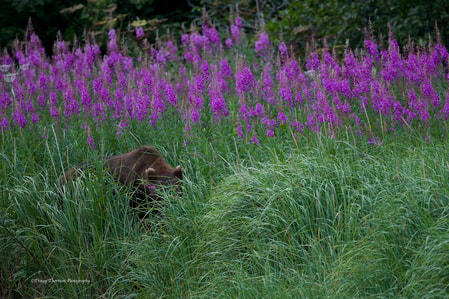
BornWild Image Of The Week
Alaska 2014
Day Four. Geographic Harbour. Misty Rain 8deg. low tide.
6am. Eric had the pancakes and bacon on, wow, a coffee to clear my sleepy head, and its action again on Breezers, Chuck and Olga come down to saloon for there morning coffee and we plan our day.
7.45am skiff to shore by Spencer with Chuck and Olga, wow I spot the wolf up ahead as we land, distant, but get off a couple shots as he disappears into the thick bush, today boars sparring and play fighting, occasionally they gets serious and all growls and claws for real. One large boar cowboy walks a smaller bear away from his area. 9 bears seen this morning, fishing mainly, some very good catches and other no luck and clean up the scraps.
1pm and back to boat for some lunch, as still raining, dry out gear and me. After each shoot, I back up twice and clear cards and charge batteries, this is often with 4 cameras in use, so lots to do.
3pm Chuck suggests we go for a skiff ride around bay, see if can find some eagles, and any bears around the rocky shoreline.
Alaska 2014
Day Four. Geographic Harbour. Misty Rain 8deg. low tide.
6am. Eric had the pancakes and bacon on, wow, a coffee to clear my sleepy head, and its action again on Breezers, Chuck and Olga come down to saloon for there morning coffee and we plan our day.
7.45am skiff to shore by Spencer with Chuck and Olga, wow I spot the wolf up ahead as we land, distant, but get off a couple shots as he disappears into the thick bush, today boars sparring and play fighting, occasionally they gets serious and all growls and claws for real. One large boar cowboy walks a smaller bear away from his area. 9 bears seen this morning, fishing mainly, some very good catches and other no luck and clean up the scraps.
1pm and back to boat for some lunch, as still raining, dry out gear and me. After each shoot, I back up twice and clear cards and charge batteries, this is often with 4 cameras in use, so lots to do.
3pm Chuck suggests we go for a skiff ride around bay, see if can find some eagles, and any bears around the rocky shoreline.
BornWild Image Of The Week
"Smoke on the Grand Canyon North Rim" (August 2018)
After many days of travel and a frustrating change of route due to Yosemite fires, we finally arrived to peer over the rim to see the result of fires here as well, and later my helicopter pilot had to abort going any further up the canyon.
"Smoke on the Grand Canyon North Rim" (August 2018)
After many days of travel and a frustrating change of route due to Yosemite fires, we finally arrived to peer over the rim to see the result of fires here as well, and later my helicopter pilot had to abort going any further up the canyon.
BornWild Image Of The Week
Virunga Mountains
Rwanda, Africa - Filmed here in 2010
CELEBRATING WORLD GORILLA DAY IN RWANDA
From Dian Fossey Gorilla Fund
Silverback Digit was Dian Fossey's favorite mountain gorilla, and they shared a special bond. In 1977, Digit was brutally murdered by poachers – a story made famous by the film Gorillas in the Mist. Dian often referred to him as her “beloved Digit,” and it is in his memory that she founded the Digit Fund for gorilla protection. After her own murder in 1985, Dian was buried in the forest next to her favorite great ape and their legacy lives on through our work today.
Conservation does not happen in isolation. We know from 50+ year history at Karisoke Research Center that conservation only happens when individuals join with organizations to protect and save vulnerable species so that we can all thrive together! It’s why our holistic model focuses on: daily gorilla protection, scientific research, educating the next generation of conservationists, and helping communities.
BornWild Image Of The week
North America - Search for the mountain lion!!
On day 7, Bryce Canyon National Park, in southern Utah, crimson hoodoos, spire-shaped rock formations.
BornWild
Trek to the Grand Canyon - 20/8/18
After 2407km I arrive at the Horseshoe Bend on the Colorado River, only 10km to Grand Canyon National park
BornWild Image Of The Week
North America - Monument Valley - Elephant Rock
Heart of the Navajo Nation, a scared land they call home
BornWild Image Of The Week (2005)
Yip - on top of Uluru (Ayers Rock) in the middle of Australia is just like walking on the surface of the moon. Standing 350meters high and a long walk around 10km.
Consent required to climb
BornWild Image Of The Week
Central North Island, NZ
The next generation - a wild herd of Kaimanawa horses roam. Introduced to NZ in early 1800s
BornWild Image Of The Week
When an uninvited guest invites himself to dinner and with a very bad temper, its time to leave him to it.
The African Cape Buffalo is one of the Big Five, and is considered to be one of the most dangerous animals to be encountered.
BornWild Image Of The Week
On the hunt for the River Cat - Jaguar.
This beautiful egret filled the frame with amazing back light on take off from deep in the Pantanal, Brazil, The Pantanal is the world’s largest freshwater wetland
BornWild Image Of The Week
The San of the Kalahari, Africa
Went on short hunt with the San using only bow and arrow (poison tips) and with women looked for root vegetables, amazing to share my time with them.
It is the deadly poison, In the case For larger antelope, this could be 7 to 12 hours
BornWild Image Of The Week
Africa - The Hunt
Lions have a less than 20% success rate
BornWild Image Of The Week
Arctic - Canada - Hudson Bay
Canadian Eskimo Dogs camp In minus 25deg, was being circled by a polar bear, eeeeeeeek
Dog power has been utilised for hunting and travel for hundreds of years
BornWild Image Of The Week
Borneo - Tanjung Puting National Park,
Trekking across the swamp early one morning, on board walk, i was surprised by this young Orang-utan that fills the frame.
BornWild Image Of The Week
Yesterday was "World Environment Day"
World Environment Day is the UN's most important day for encouraging worldwide awareness and action for the protection of our environment 🌍
13 million tonnes of plastic leak into the ocean each year
It doesn't just harm marine life, it harms us, too
Image - Cooks Beach, Mercury Bay Coromandel NZ
BornWild Image Of The Week
Antarctica - Dec 2011
Unbelievable witness of Orca (killer Whale) pod hunting Ginstrap Penguins down off Antarctic Peninsula, faster little penguin !!!!!!!!! you can do it,
BornWild Image Of The Week
Arctic - Hudson Bay 2009
Day 20 - Snowing and yip its freezing and -18 to -27deg
This bear just appeared from behind snow hill and guide Mike was on hand with his rifle to shoot couple warning shoots into the air if needed as we retreated slowly backing up, lucky our vehicle couple hundred meters away,
Because of ongoing and potential loss of their sea ice habitat resulting from climate change, polar bears were listed as a threatened species in the US under the Endangered Species Act in May 2008
BornWild Image Of The Week
Andes Mountains Peru, 2006
Llamas crossing the trail as we neared top of Dead Women's Pass at 4200m
Llamas were the Incas' most important domestic animal, providing food, clothing and acting as beasts of burden. They were also often sacrificed in large numbers to the gods. The Inca Empire stretched over 5,500 kilometres and was the largest state in the world in the 1400s

BornWild Image Of The Week
Gray Langur - North East India, Corbett
What are you looking at punk !!
Very annoying to tigers in the forest as they give out a very loud bark usually from the safety of the trees, so when tracking the tiger my guides and me listen for this alarm call.
BornWild Image Of The Week (2014)
Welcome to Alaska and "The Greatest Show On Earth" filming the wildlife and the amazing Grizzly (Coastal Brown Bear)
BornWild Image Of The Week
Frigatebird - Galapagos Islands 2014
A young chick, bad hair day eh!!
Their wings are long and pointed and can span up to 2.3 metres (7.5 ft), the largest wing area to body weight ratio of any bird. Able to soar for weeks on wind currents, frigatebirds spend most of the day in flight hunting for food, and roost on trees or cliffs at night. Their main prey are fish and squid
BornWild Image Of The Week
Alaska - Geographic Harbour 2014
Coastal Brown Bear
4pm Still raining so decide go ashore and to try and film some salmon in the rivers with GoPro underwater camera, no luck, as water cloudy and salmon hard to find.
We had just disembarked from skiff when the mum that had lost cubs this morning appeared running right at me calling for her cubs, growling, grunting and frothing at the mouth, just time for couple quick shots as she fled past, phew close call, Chuck had the pepper bear spray out, but he was way in front of me, I called this bear Crazy Mumma for good reasons, as we were leaving we noticed she had found her two cubs, Chuck was concerned they would not survive long if this was an example of her parenting
BornWild Image Of The Week
NZ Falcon/karearea Tongariro National Park NZ
Capable of flying at speeds over 100 km/h and catching prey larger than itself, the New Zealand falcon is one of our most spectacular birds. Seen here moments after catching a NZ Wood Pigeon/kereru in flight and dropping to the ground for a well earned meal. Known for its high pitched call in flight kek kek kek kek kek kek
BornWild Image Of The Week
Wedge-tailed Eagle - South Australia
With a wingspan reaching more than two metres, the Wedge-tailed Eagle is Australia’s largest bird of prey and one of the biggest eagles in the world.
BornWild Image Of The Week
Pūkeko is the New Zealand name for the purple swamp hen (Porphyrio porphyrio) seen here feeding only days old chick on Mallard Lake, Coromandel NZ
BornWild Image Of The Week
Ground Squirrel - Yellowstone
This cutie in autumn getting ready for hibernation in coming winter and white bark pine nuts are one of main sources of food they store in dens called - middens
BornWild Image Of The Week
Royal Bengal Tiger - Corbett, North East India (2008)
(Eyes Locked On)
After a month trekking and nature filming around India, on my last morning near foothills of Himalayan Mountains this mature tiger male found us, and with an almighty charge and roar got to within only meters from us, before diverting his charge and roaring off into the forest,phew!!!!
BornWild Image Of The Week
Southern black-back gull / Karoro (Native)
"Take Off"
One off the main causes of mortality among dotterel and oyster-catcher chicks are dogs, cats, stoats and surprising gulls
BornWild Image Of The Week
Wolves (Gray)
Wolves are still legally hunted in Alaska and Lower states, and the recent reintroduction to National Parks like Yellowstone have by researchers maintained a balance of Elk, Deer, Bison and smaller species.
Generations of ranchers who misunderstand wolves still kill wolves on sight they say, as they pose a threat to there cattle and families.
Public wolf hunts will reduce numbers due to a wolf hunting season.
BornWild Indonesia
2018 Calendar out now
BornWild Image Of The Week - Coromandel NZ
Looking for a nature shot of something different this week, and decided on my unusual catch while out kayak fishing in the bay last Saturday. Took a while to identify, but informed its a Frost Fish - (Lepidopus caudatus) looks similar to barracouta with all those sharp hooked teeth, about 1.6m long and normally found over the outer shelf in 200-500m deep.
Thought had caught the bottom as was dead weight, but when it started to move struggled to get it to surface and quick photo and release as definitely not a fish welcome on board kayak, especially with Rocky Boy all excited on the back, not a time to overturn.
BornWild Image Of The Week - Canada/Arctic
When the hunted become the hunted - while tracking some bear tracks in a blizzard and lightly falling snow on the shores of Hudson Bay, and stinging sleet into my face, my guide Mike points over my shoulder to this large polar bear appears over the ridge only meters away now moving towards us, not ideal, Mike with his trusty 303 rifle explained prior in our safety chat, he would only fire into the air unless an attack, and indicates to move away and back up slowly, phew bear
Im here to record these amazing scenes of nature as the ice freezes over the bay, usually early November and the bears are able to move out onto the ice to hunt there favourite food, ringed seals. Nov 2009
BornWild Image Of The Week
Dabchick - Status - Declining – population declining but still common, normally found around central North Island
Known for the chicks on the backs
The dabchick breeding season runs from September to December and we have one breeding pair here on Blackswan Lake, Cooks Beach.
A sure sign that they are nesting is only one Dabchick is seen feeding alone on the water, as we normally see the pair together.
Dabchicks dive for their food up to 4 m deep. They can hold their breath for around 40 seconds.
Eggs are also vulnerable to predation by Norway rats that like to live near water and are good swimmers.
BornWild Image Of The Week
Hands and feet, notice feet holds (Don't try this at home - ha ha)
Orangutan fingers and toes are long and curved to help hold and quickly release branches as they traverse the treetops.
The thumb and big toe of orangutans oppose the other digits (fingers/ toes), enabling them to grasp and manipulate objects. The opposable thumbs and big toes are small in size so they do not hinder swinging through the forest.
Orangutan feet are adapted for climbing trees. Their feet grasp branches and serve as an extra support, in addition to their hands, when hanging upside—down
BornWild Image Of The Week
Komodo National Park
Near Island of Pulau Kalong, amazing to film thousands of large Fruit Bats departing at sunset in search of food
BornWild Image Of The Week
Komodo National Park
Near Island of Pulau Kalong, amazing to film thousands of large Fruit Bats departing at sunset in search of food
BornWild Image Of The Week
Orang-utan enjoying some milk left out by the rangers at feeding station, Tanjung Putting National Park Borneo.
BornWild Image Of The Week
The Last Of The Komodo Dragons
(Filmout soon)
Komodo’s some reaching over 3m long and up to 330lbs, have excellent eyesight and may detect carrion 5km away with there strong sense of smell, flicking out there long forked tongue, quite unnerving as one approached me and locked on, they can run 20klm per hour, and there hunting strategy is based on stealth and power,
BornWild - Image Of The Week
Proboscis Monkey - Borneo,
Status - Endangered
Image captured in the early morning down by the river, males known for their large noses
Proboscis monkeys are endemic to the jungles of Borneo, never straying far from the island’s rivers, coastal mangroves, and swamps. They are a highly arboreal species and will venture onto land only occasionally to search for food
BornWild
The Last Of The Orang-utans
By Tracey Thornton
My guide Hakim gives me the signal I have been waiting for, after trekking in from the river through the forest tracks, I am now only 10meters from one of the most talked about primates in the world, up in the trees above is a large male Orang-utan, know locally as men of the forest now critically endangered.
This giant of a beast, 8 times stronger than us is know for their gentle nature, and may become aggressive when threatened. As I bring my camera up for the first images, this reminds me of the past ten years of capturing some of our worlds endangered species.
I am here in Tanjung Putting National Park, Borneo to document the orang-utan and the place they call home, we have all heard of deforestation, Palm Oil, Mining, Logging, etc, so its interesting to get the full story.
I am informed orang-utans will be extinct within 50 years unless changes are made soon
I arrived here from New Zealand via Jakarta, this area is on the south west side of Borneo and was made famous by Primologist Professor Birute Galdikas, who came here in the early 1970’s, when offered a research assignment on the orang-utans in this area by UK based scientist Lewis Leakey and going on to set up the Camp Leaky, and over the next 40plus years has worked tirelessly in rehabilitation of new born and re-location of orang-utans and saving the forest from the illegal palm oil, logging and mining. She along with her colleges in Africa, Jane Goodall –Chimpanzee scientist and Dianne Fossey Gorilla scientist, has achieved live time recognition for their work with these great apes.
Here in the rainforest have set up three feeding stations at different places in the forest, to supplement the rehabilitation Orang-utans, and I was advised that due to the abundance of natural food, berries, fruit etc in the forest that only a few require to come to theses stations, that’s great news for the rangers and programme.
With the attraction of eco-tourism and the effect on the environment and wildlife, I was disappointed to see at these feeding stations the number of tourists, treating theses areas like a zoo, no respect, yelling, talking loud, kids screaming, rubbish left, all the wildlife is on edge, if this is to continue, a regulation of numbers at any one time and control, similar to Rwanda with the gorillas, this can make a difference, and provide a safe natural area for wildlife and provide income and jobs for the local people.
But back to the other wildlife and tracking the wild population of orang-utans in the forest, and sometimes just on the riverbank feasting on the palm shoots, these palms are a native of the forest.
With the temperature in the mid 30degrees, this was challenging, due to heavy rain storms in the afternoons, and very rewarding, as orang-utans are normally shy and move of when spotted. I was lucky enough to locate a Red Langur Monkey high up in the trees, my guides mentioned they had not seen any for over a year, so managed some images with long lens, also proboscis monkeys, so entertaining, males with there long noses and tails gracefully swinging through the trees We tied up to the river bank one night next to a troupe and wow did they keep us entertained and awake during the night with there squabbles, and growls.
Silverbacked langurs, long tailed macaqures, proboscis monkeys, monitor lizards, forest pigs and many bird species also require this forest to survive.
Night hunts in the forest were action packed and looking for the elusive clouded leopards, (endangered), my guide informed me only a few days after I left he spotted one in the trees just where we walked only few nights prior, timing is everything in wild life filming, we also found bats, tarantulas spiders, and borrowing a local village canoe, by torch light we went exploring in the river for Gharial crocodiles, they grow over 5 meters, so no swimming in the rivers here.
Its reported that in just 25years more than a quarter of Indonesia’s forests, some 76 million acres (an area size Germany) have disappeared.
To see orang-utans glide through the trees, is spectacular, they build a nest high up in the trees each night, and live mainly up in the rain forest trees (known as arboreal) young stay with mums for 3-5 years, and it was interesting to see them make there own rain umbrellas from leafed branches to give them some shelter during the storms, so effect.
There are many layers in most places, government, local authorities, tourism, legal and illegal activities, local villages and people looking for work to feed their families, its not one solution fits all. I am not here to judge!
This project is work in progress, for
BornWild
Arctic to Antarctic, Endangered Species. 2017
BornWild Image of The Week
Central Brazil - Jaguar (He who kills with one leap)
Tracking this amazing cat as it takes a break while hunting along the river bank, Jaguars have one of the highest bite forces, thousands once roamed here in South America.
Status - Near Threatened
BornWild - Indonesia
August 2017
Really excited to announce my next trip, with a new location to Indonesia, this is an action packed adventure combining two of Indonesia's most magnificent wildlife experiences, Komodo Dragon and Orang-utan, along other varied wildlife and with meeting the local people, park rangers and local historic places.
BornWild Image Of The Week
Antarctica
Gentoo Penguin status - Near Threatened
mum and cute chick fill the frame after puffy climb up the rocks on a clear cold antarctic morning, They breed on the rocky shores and cliffs as I witnessed, main predators on land is the skuas birds preying on eggs and chicks and when reach water, orca (killer whales) and leopard seals lay in wait
BornWild Image Of The Week
Africa - Victoria Falls (Mosi-Oa-Tunya "The Smoke that Thunders")
Locals fishing only meters from the top of the falls with a 100m drop, on the Zambezi River - spectacular site to see if you look close enough one man wading up over his thighs, no room for error.
BornWild Image Of The Week
India Cobra - North East India
While tracking tigers, came across this snake , with nervous behaviour because they can't see well, my guide informed me as it was shedding its skin, sometimes they are aggressive as also shed eye caps
When threatened, the Indian cobra will hiss and sway its hood to appear as large and aggressive as possible.
The venom of the Indian cobra is highly toxic, another reason to leave it to go on its way
BornWild Image Of The Week
Morepork / ruru NZ
June 21st is the Northern Solstice and marks the shortest day here in NZ, I can often hear the ruru calling in the night from nearby bush
In Māori tradition the morepork was seen as a watchful guardian.
BornWild Image Of The Week
Central South America - Jaguar -
Tracking one of my most favourite of all cats, this Jaguar stops for a drink while hunting along the river bank. This is the largest of cats in America and in the late evening it made several unsucessful attempts on some caiman at the rivers edge. They are excellent swimmers and on my second week here, filmed amazing Jaguar stalk and successful kill of a large caiman
BornWild Image Of The Week
Bison - Yellowstone National Park
Large bulls lock horns in a fierce battle
Mature bulls spend most of the year alone or with other bulls—except during the rut, or mating season.
BornWild Image Of The Week
Coastal Brown Bear Alaska 2014
I called this bear Crazy Mumma as the day before she kept loosing her two cubs and raced around the bay looking for them. This morning I had just been dropped of ashore and my guide Chuck was 30m in front of me as I had stopped for a photo of the bay, and had not seen her hidden just below me along the shoreline, she erupted only meters away and charged growling and snarling, I did not realise I was between her and her cubs
Lucky for me she decided to alter course at last second just missing me, phew glad I was still in one piece and a few photos to tell the story
BornWild Image Of The Week
Whangamata from above
On a recent aerial photo shoot on the Coromandel NZ, we were not to know a pod of Orca's (Killer Whales) where hunting along the coast below
BornWild Image Of The Week
Royal Bengal Tiger - Himalayan Foothills. North East India
The Hunt - Camouflage is paramount.
This tiger silently stalking a chital deer in high grass, just on left lower edge of frame, they have about a 20% success rate
Endangered Species
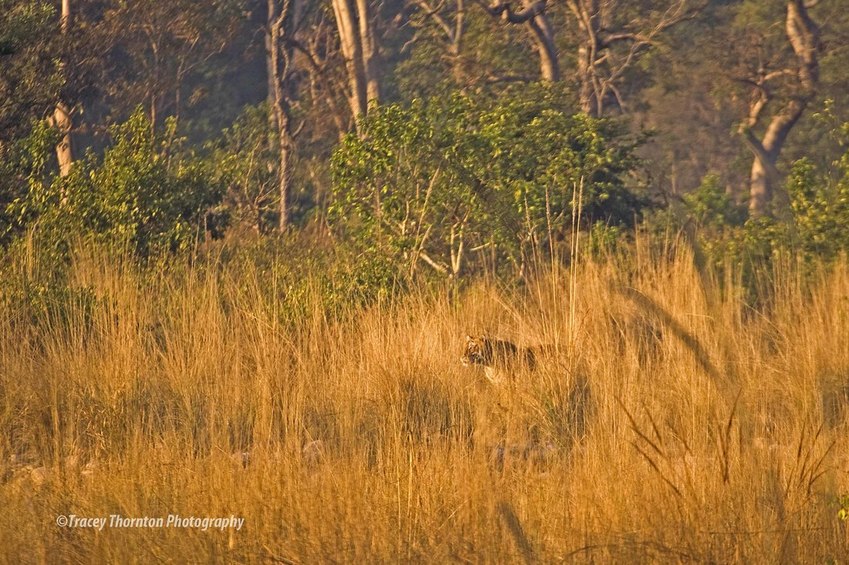
BornWild Image Of The Week
Galapagos Islands - Ecuador
A Short-eared Owl takes down a Ground finch
Charles Darwin's observed Finches and formulating Natural Selection when visited here in 1831
BornWild Image Of The Week
East Africa lion cub
Early one morning while walking along the Mara River bank, I came across this young cub that was interested in me, as his mum was only a few meters just behind, its time to back away slowly and give them some space.
BornWild Image Of The Week , 29 March 2017
Antarctica 2011
I thought I would share one of my extreme places visited (3mins)
Just getting there was a challenge, the Drake Passage threw up big storm, whats its like to cross the "Worlds Roughest Seas" between South America's Cape Horn to Antarctica
BornWild Image Of The Week
Ngorongoro Crater Rim, as day breaks this bull elephant walks into my camp, I think he wanders why Im here in his path he has travelled many times, oops Im in his way, move !!!!!!!
A tribute to this gentle giant where many of their family members are no more and cut off from migration routes
Capybara - Pantanal, Brazil, South America
World Wildlife Day will be celebrated on 3rd March 2017 under the theme “Listen to the Young Voices.” Given that almost one quarter of the world’s population is aged between 10 and 24, vigorous efforts need to be made to encourage young people, as the future leaders and decision makers of the world, to act at both local and global levels to protect endangered wildlife.(Notes from UN World Wildlife Day)
BornWild Image Of The Week
Royal Bengal Tiger - Foothills Himalayan Mountains India 2008
( From my book "BornWild" )
We froze again holding our position, and knew her mate Chuka would be following her as this is there mating season and he would soon follow, and we where focused on any movement. With relief we spotted him about 200metres on our right and cautiously coming in our direction slipping in and out of the thick bush river bed cover, and then he disappeared, as we waited the silence was broken with a spine chilling ROAR from behind, we were now the hunted,
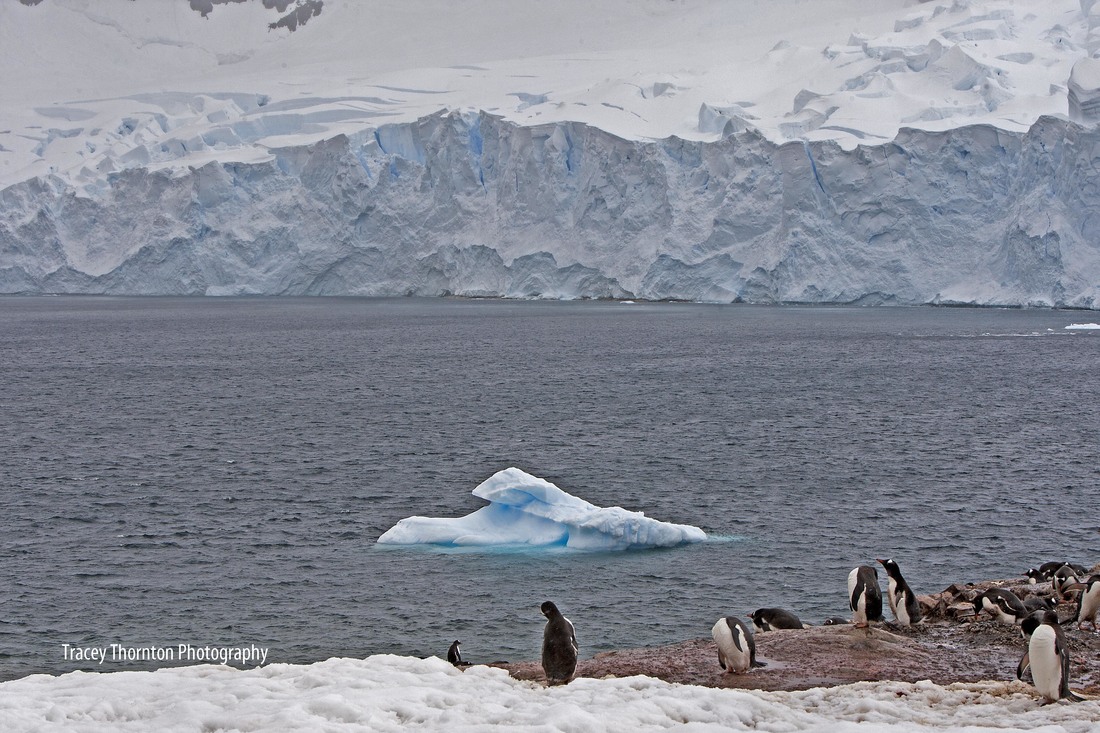
BornWild Image Of The Week
Antarctica 2011
Climbing high above to frame this amazing wonder of nature, to find penguins also making this steep climb, Ice and snow cliffs covers mountains of rock, frozen in time, with ice bergs floating below and Gentoo Penguins call this extreme continent home.

BornWild Image Of The Week, -Black Swan (Cygnus atratus)
This beautiful lone waterbird arrived here on Mallard Lake to call home for a while, just prior to Xmas. Introduced in NZ in the 1860's They pair for life so hope this one finds a mate and builds a nest, (normally in the winter months) so I can film their young cygents.I have had fun just filming it feeding, up-ending in deeper water to reach food and cleaning the lake as well.
Conservation Status - least concern
BornWild Image of the week - Coromandel NZ. 3/2/17
Fishing the Mercury Islands - action filmed by 3 cameras.
Another early start on Friday before sunrise, weather overcast and showers with a strong 20-30km hr breeze, and sea a bit lumpy. Tony and skipper Pete and me launch the Boston Whaler off Cooks beach, and with a stop at the Motukoranga Islands to get some live bait fish headed north for Red Mercury and arrived at Richards Rock in big swells and choppy seas, the fish out here kahawai boil-ups, trevelly, marko sharks, snapper, mako along with blue penguins, gannets, peterls, gulls, terns, arriving home after 14hrs with bin full of fish and from sea to plate (smoked)
BornWild Image Of The Week Pantanal, Brazil
The Comeback Croc
At over 8ft this one slides down into the river, not happy at me interrupting his basking on river bank
Once heavily hunted for its valuable skin but now protected, Brazil’s yacare caiman is striding back in gratifying numbers. Armed gangs would invade during the dry season and shoot masses of yacares congregated around shrinking water holes. “They skinned them on the spot and left the rest to the vultures
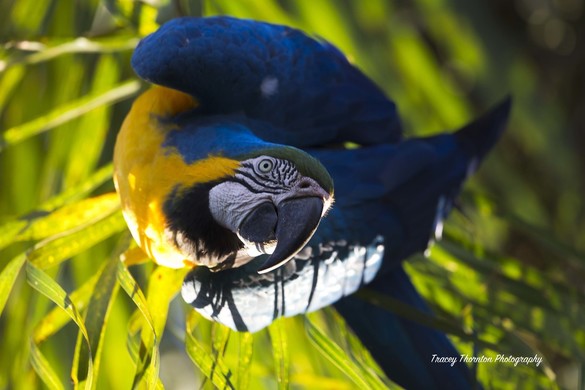
BornWild Image Of The Week - Brazil 2013
While tracking a Jaguar early one morning in the forest near the Pantanal , a pair of Macaws flew into a tree, just overhead, and showed off there upside down manoeuvres
Blue and Gold Macaws can live up to 80 years.
CONSERVATION STATUS
The number of Blue and Gold Macaws globally is unknown. CITES lists them in their Appendix II, meaning these macaws are not currently threatened with extinction but may unless exotic pet trade is ceased
While tracking a Jaguar early one morning in the forest near the Pantanal , a pair of Macaws flew into a tree, just overhead, and showed off there upside down manoeuvres
Blue and Gold Macaws can live up to 80 years.
CONSERVATION STATUS
The number of Blue and Gold Macaws globally is unknown. CITES lists them in their Appendix II, meaning these macaws are not currently threatened with extinction but may unless exotic pet trade is ceased
|
BornWild Image of the Week 2017
Jaguar - South America - Pantanal - Brazil Looking into the eyes of a jaguar is spine-chilling From my diary notes, over the next days we hunted from early morning and again from mid to late afternoon checking the sandy banks, patches of dense tropical forest on the riverbank, and rush-beds along the waters edge. The Jaguar is a near threatened species and its numbers are declining. Threats include loss and fragmentation of habitat. While international trade in Jaguars or their parts is prohibited, the cat is still frequently killed by humans, particularly in conflicts with ranchers and farmers in South America. |
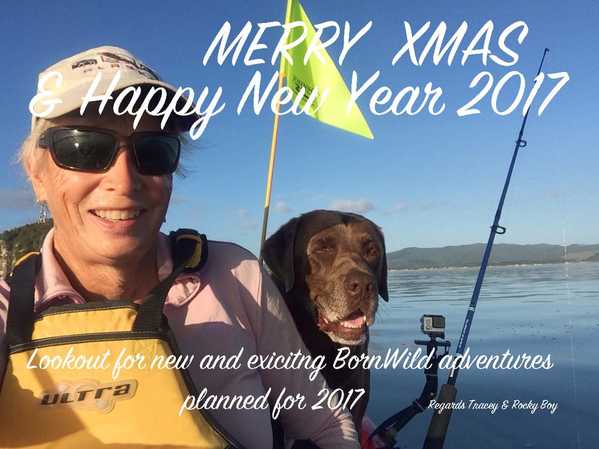
Wishing you all a wonderful Christmas and fab 2017
BornWild Image Of The Week 19 December 2016
Ngorongoro Crater Tanzania
African cheetah: Critically Endangered.
Filmed two brothers hunting along the crater floor, after Thomson's gazelles, soon after this shot, they made a kill,
BornWild Image Of The Week 12 December 2016
Captured this Peregrine Falcon on take off in South Australia
Known for swooping on its prey at speeds of up to 300 km/h, its mere appearance causes panic amongst potential victims. Fastest animal on the planet.
BornWild Image Of The Week 7 December 2016
Yellowstone is the only place in the lower 48 states to have a continuously free-ranging bison population since prehistoric times. This bull looked lonely in the Lamar Valley. Once numbering in the hundreds of millions in North America, the population of the American Bison decreased to less than 1000 by 1890, resulting in the near-extinction of American bison.
BornWild Image Of The Week 28th November 2016
Giants arrive at a water hole in Namibia as the sun sets
SUPER MOON - 15th November 2016
Tuesday night was overcaste and the clouds faded for a brief few seconds and I was ready at 10.18pm with my 700mm lens, and just added a gull for interest
November 14 presents the moon's closest encounter with Earth in over 68 years, since January 26, 1948. The full moon on November 14, 2016, will feature the closest full moon (356,509 kilometers) until November 25, 2034 (356,448 kilometers)!
BornWild Image Of The Week - 15 November 2016
Dabchicks - Status Nationally Vulnerable
I filmed this pair on Blackswan Lake Coromandel in August and have been watching and observed only one dabchick out on its own on the lake for weeks, and guessed the other sitting on eggs, and to my surprise couple days ago found both parents out on the lake with 3 chicks only days old all riding on the back of mum hidden under the feathers. They ride on parents back for a couple of weeks until they get to big
BornWild Image Of The Week 7 November 2016
Northern New Zealand Dotterel
This chick is only days old and like many beaches around the Coromandel it is breeding time from late September.
The endangered New Zealand dotterel was once widespread and common. Now there are only about 1,700 birds left, making dotterels more at risk than some species of kiwi. NZ dotterels are shorebirds, usually found on sandy beaches and sandspits or feeding on tidal estuaries.
BornWild Image Of The Week 31 October 2016
Frigatebird - Galapagos Islands
Chicks are naked on hatching and develop a white down. They are continuously guarded by the parents for the first 4–6 weeks and are fed on the nest for 5–6 months.
BornWild Image Of The Week - 24 October 2016
Langur Monkeys
Tracking tigers up in North East India, once we hear the langur monkey warning bark call from high up in the trees, to warn other family members that a tiger is on the prowl, this helps to locate approximate area tiger is in.
BornWild Image Of The Week - 18 October 2016
Silver Fox hunting lemmings (small rodent like) under the deep snow, along the shores of Hudson Bay, Canada.
Status - Least Concern
BornWild Image of the Week - 14 October 2016
The Tasmanian Devil (Sarcophilus harrisii). Australia
Due to hunting, Tasmanian devils neared extinction at the beginning of the 20th century. Tasmanian Tiger (Thylacine) became extinct in 1936. Today Tasmanian devils are endangered by a cancer called Devil Facial Tumor Disease.
BornWild image of the week - 7 October 2016
Mallard Lake, Coromandel, New Zealand
The pukeko is a native of New Zealand and is also known as the Swamphen, as found around swamps and lakes, can fly long distances and a bit clumsy, good swimmers and especially considering they don’t have webbed feet and have a loud high-pitched screech, eats mainly roots and shoots and are omnivores, plants and animals,
When threatened pukeko flap their wings and shows off their powerful beak, and white tail feathers, they will stand up for their young and protect the nest from hawks and other predators.
e-News 27th September 2016
World Rhino Day was recognised on 22nd September by WWF
Legal trade of rhino horn has been banned for many years (1977), yet the KILLING continues, with demand mainly from Asia and China
Images from BornWild - Africa 2010
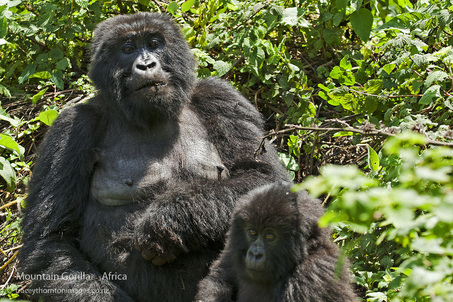
e - News 7 September 2016
The African Wildlife Foundation is extremely concerned about the plight of great apes across Africa. We call for governments and international agencies to rapidly ramp up awareness about the critical plight of Africa’s great apes and to significantly scale up a concerted global effort to protect great apes and their habitats, including stopping illegal hunting. The presence of logging, mining and other extractive industries near their range also greatly exacerbates threats to these apes. Without concerted action, these rare and beautiful species could be extinct in just a few years. The IUCN listing of the Eastern Gorilla as Critically Endangered underlines the threats facing all great ape populations and the need to work quickly to stop poaching and protecting great ape habitats that are in greatest need of conservation interventions.
The African Wildlife Foundation is extremely concerned about the plight of great apes across Africa. We call for governments and international agencies to rapidly ramp up awareness about the critical plight of Africa’s great apes and to significantly scale up a concerted global effort to protect great apes and their habitats, including stopping illegal hunting. The presence of logging, mining and other extractive industries near their range also greatly exacerbates threats to these apes. Without concerted action, these rare and beautiful species could be extinct in just a few years. The IUCN listing of the Eastern Gorilla as Critically Endangered underlines the threats facing all great ape populations and the need to work quickly to stop poaching and protecting great ape habitats that are in greatest need of conservation interventions.
e-News 27 August 2016
New Zealand Dabchick - status Nationally Vulnerable to endangered and found now only in North Island now, extinct in the South Island, and estimated 1800-2000 individuals
On a wet and windy afternoon a pair of Dabchicks (Grebe family) swum into my Mallard Lake and observed from my office window, a quick grab of camera and sneak down to lake edge and for a few images, there distinct mostly dark plumage and light yellow eyes and head bobbing, side to side and back and forth. They are a small to medium specialist waterbird and will be exciting to see if this pair have chicks, mating season September to December
e-News 10th August 2016
World Lion Day 10th August
Lions are powerful and majestic, but they’re incredibly vulnerable to loss of habitat and conflict with people. About 30,000-35,000 African lions remain in the wild today. Numbers have plummeted by around 30% in the past 20 years, and over 40% of their key populations are in decline.
Image - I Captured these two magnificent pride males, patrolling their territory in the Ngorongoro Crater, Tanzania, Africa
e-News 8th June 2016
World Oceans Day 8th June 2016
A global day of ocean celebration and collaboration for a better future.This year's theme is “Healthy Oceans, Healthy Planet”
Photos - Filming "The Great White Shark" Southern Ocean
e-News 28th May 2016
Ngati Whatua Orakei - Community Planting Day
A Maori ecological restoration project to restore our forest in the city so that we can bring the birds back home.
We planted around 1000 native plants this morning with a fantastic team, many thanks to all and thanks for a nice mention from TeAroha in his karakia in recognizing my help in planting over the last few years. Rocky Boy had a fab time and enjoyed BBQ lunch too.
e-News 10th May 2016
My Entries Update
Wildlife Photographer of the Year competition
National History Museum UK, 2016
We made second round this year from over 44,000 entries submitted from across 91 countries,
The selection process for the peoples choice will begin soon
My Entries Update
Wildlife Photographer of the Year competition
National History Museum UK, 2016
We made second round this year from over 44,000 entries submitted from across 91 countries,
The selection process for the peoples choice will begin soon
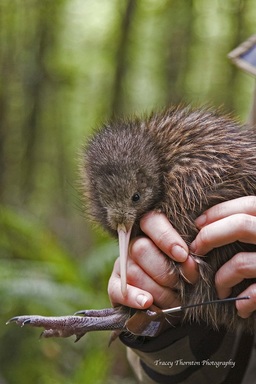
e-News 22nd April 2016
Earth Day 22nd April 2016
An annual event, celebrated worldwide to demonstrate support for environmental protection. It was first celebrated in 1970, and is now coordinated globally by the Earth Day Network, and celebrated in more than 193 countries each year.
Photo of a Brown kiwi chick being released back into wild, Tongariro National Park. NZ.
e- News 13 April 2016
Most wildlife is in trouble due to deforestation and climate change.
Information from WWF
The number of tigers in the wild has risen for the first time in 100 years, marking a major turning point in the big cat's plight against poaching and habitat loss.
Key points:
- Data estimates 3,890 tigers living in wild across the world
- Number is up almost 700 animals from 2010 figure
- WWF welcomes increase but says more still needs to be done
That is up almost 700 animals from the 2010 figure, which estimated the population at 3,200.
This image I captured of a majestic Royal Bengal Tiger hunting along a dry river bed, foothills of the Himalayan mountains, North India
e-News 9th April 2016
Monarch butterflies
I run past this large swan plant most mornings, up on Bastion Point reserve, and observed this amazing transformation over a few weeks.
• The life span of monarch butterflies undergoes a life cycle of four stages
• The Egg
• The Caterpillar or the larvae • The Chrysalis or the Pupa
• The Fully Developed Butterfly
• During March-April, you can see them laying their eggs on the plants, and in nearly four days, the hatching caterpillars or the larvae appear.
• Then the only job of the larvae is to eat and grow up.
• The caterpillar attains full adulthood in nearly a fortnight and unearths the right place for attachment to begin the course of transformation. It will connect itself to a twig or a leaf by silk and change over to a chrysalis.
• In about 10 days, you can see the larvae entering the Chrysalis stage. During this time, on looking from the outside, nothing seems to happen, but inside the chrysalis, the previous body elements of the caterpillar are going through an amazing conversion, called metamorphosis, to develop into stunning parts that go to make the emerging butterfly.
• The monarch, when it comes out from the pupa as a beautiful butterfly, will commence its journey to feed on flowers, simply enjoying its short life of just about 2-6 weeks. Unfortunately, this initial generation of monarch butterfly then dies after having laid eggs for the second generation.
e-News 2 April 2016
Behind Bars
The New Zealand falcon or kārearea is New Zealand's only endemic falcon and the only remaining bird of prey endemic to New Zealand.
A visit to http://www.wingspan.co.nz/index.html
Wing Span in Rotorua recently
Wingspan is now recognised as New Zealand’s leading conservation, education and research organisation for birds of prey.
Thanks Michelle and look forward to another visit soon.
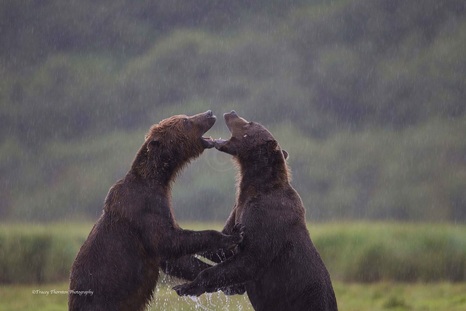
e-News 29th March 2016
To Tracey Thornton
Wildlife Photographer of the Year competition
National History Museum UK, 2016
We're halfway through the judging process, and are delighted to say that one or more of your submissions has been selected for the second round, from which the awarded images will be selected
In 2015 more than 42,000 entries submitted from across 96 countries, and we made the final round with this image.
Good luck Tracey
To Tracey Thornton
Wildlife Photographer of the Year competition
National History Museum UK, 2016
We're halfway through the judging process, and are delighted to say that one or more of your submissions has been selected for the second round, from which the awarded images will be selected
In 2015 more than 42,000 entries submitted from across 96 countries, and we made the final round with this image.
Good luck Tracey
e-News 13th March 2016
Kayaking on a beautiful Sunday morning, out from Mission Bay, Auckland, NZ, sea calm and light easterly breeze, on Auckland's Waitemata Harbour with faithful friend Rocky Boy on the back, looking out for a great fishing spot. Paddle past lots of wildlife, gannets, shags, gulls, and have seen on other days Orca and Brydes Whales and pods of dolphins.
No birds working so drift fish off Achilles Point with a ledger rig - squid bait, and wham, this whopper snapper , grabs the bottom bait and we are hooked up, landing is not so easy on a kayak with Rocky excited and rocking us around, finally land and nice fish for dinner.
Snapper are known for their big molars “hence called Snapper”. and are known to live to about 60 years
Snapper has the most beautiful colours, in the scales with large black eyes, and fins out, the use these for speed when threatened or when escaping from bigger fish, the minimum snapper size to keep is 30cm, so as to keep fish stocks up.
Photography Tip
The secret is to watch the sun angles to water refelection and use any cloud cover as a filter.
Kayaking on a beautiful Sunday morning, out from Mission Bay, Auckland, NZ, sea calm and light easterly breeze, on Auckland's Waitemata Harbour with faithful friend Rocky Boy on the back, looking out for a great fishing spot. Paddle past lots of wildlife, gannets, shags, gulls, and have seen on other days Orca and Brydes Whales and pods of dolphins.
No birds working so drift fish off Achilles Point with a ledger rig - squid bait, and wham, this whopper snapper , grabs the bottom bait and we are hooked up, landing is not so easy on a kayak with Rocky excited and rocking us around, finally land and nice fish for dinner.
Snapper are known for their big molars “hence called Snapper”. and are known to live to about 60 years
Snapper has the most beautiful colours, in the scales with large black eyes, and fins out, the use these for speed when threatened or when escaping from bigger fish, the minimum snapper size to keep is 30cm, so as to keep fish stocks up.
Photography Tip
The secret is to watch the sun angles to water refelection and use any cloud cover as a filter.
e-News 1 March 2016
International Polar Bear Day is celebrated every 27 February to raise awareness about the conservation status of the polar bear.
In honour of this occasion, I have bought together a few of my favourite images from 2009 of the majestic predator, in minus 20deg, yip its freezing.
e-News 20th January 2016
Tawharanui Peninsula - through my lens on a hot afternoon
A visit to the amazing Tawharanui Open Sanctuary. In 2004 a 2.5 km predator-proof fence built across Tawharanui peninsula to create a refuge for native animals free from pests such as rats, stoats and possums.
Tawharanui Peninsula is a finger of land projecting into the Hauraki Gulf from the east coast of the much larger North Auckland Peninsula of New Zealand. It separates Omaha Bay to the north from Kawau Bay and Kawau Island to the south
e-News 24th November 2015
The Trek to Australia.
Returning from a very successful BornWild assignment to South Australia, photo and filming, document the Great White Shark and lots of birds and land animals on Kangaroo Island and Tasmania. DVD film in process.
I have come face to face with one of the world top apex predators the Great White Shark, (Carcharodon carcharias) or White Pointer as they are commonly known, this ranks up there for one of the most amazing fear factors. Although I'm in the safety of a cage filming, when this 4m male shark circles a few times, locks on to me, and then makes his move hitting the corner of the cage with huge impact only inches from me with huge force, another diver in the cage pulls me back out of danger, then the shark disappears into the gloom of the vast ocean as quickly as he appeared.
An awesome time out Neptune Islands cage diving with Rodney Fox Expeditions with the ultimate Great White Sharks. To truly understand these magnificent creatures you have to get in the water with them. We contributed to some scientific research by finding a $10,000 satellite shark tag by the crew, released from a shark days earlier.
Expedition notes and information and images refer Photo Shoots
e-News 22 October 2015
An evening last night with National Geographic underwater photographer Brian Skerry presenting "OceanWild", an account of his amazing stories and images of exploration at Aotea Centre, Auckland NZ
An evening last night with National Geographic underwater photographer Brian Skerry presenting "OceanWild", an account of his amazing stories and images of exploration at Aotea Centre, Auckland NZ
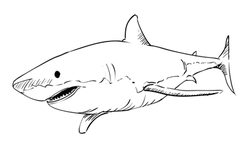
e-Newsletter 16 October 2015
Project "Great White Shark"
I am excited to announce my next "Arctic to Antarctic, BornWild conservation field project, departing early November 2015 for the Great White Shark (Carcharodon carcharias). Also known as White Pointer, they are internationally protected and their conservation status is now an alarming vulnerable, they can reach over 6m (21ft) in length and can live as long as 70years.
I am looking forward to this incredible adventure to South Australia and a meeting with the most feared of all creatures, the “Great White Shark” in its own environment. I hope to film from above and yes survive below the water, to experience and document its behaviour in the wild. Also along with other wildlife, NZ Fur Seals, Australian Sea Lions, maybe a Blue Shark, and some dolphins, along with some land animals on Kangaroo Island and Tasmania, including Tasmanian Devils, kangaroos, quolls,
e-News 12 October 2015
Photo Essay
Spring time offers some interesting wildlife in the garden.
This Song Thrush has the most beautiful song, especially when looking after and feeding its recent born chicks, only days old. Both parents feed and look after around the clock. The song thrush builds a nest, mud lined as you can see, this one deep in our hedge, lays 3-5 dark-spot eggs, and these three chicks are so funny to watch when a parent returns with some food, usually a snail or worm from my garden, a real challenge to get high enough to photo, without disturbing the family.
The song thrush is easily recognised by its speckled brown and cream breast and although they are an introduced species, they have no recognised impacts on native bird species.
Their eyes open around 5-6 days and they fledge around 12-14 days, so growing fast.
e-News 4th October 2015
World Animal Day
Lets celebrate them all - Big and Small
Saving our oceans, forests and rivers, will help save wildlife and our planet
e-News 22nd September 2015
WORLD RHINO DAY
This image - 2mth old White Rhino calf in Tanzania 2010
World Rhino Day, created in 2010 by WWF-South Africa, celebrates all five species of rhinoceroses. The IUCN Red List classifies three of the five species as critically endangered.
The number of rhinos illegally slaughtered in South Africa reached an all-time high in 2013, with an average of three rhinos killed each day
e-News 22nd September 2015
The Great Kereru Count Week (17th - 27th Sept)
I'm in search of the kereru (NZ native wood pigeon) around my area Mission Bay parks and Bastion Point Orakei, Auckland, and my count to date is an alarming - zero.
Around Bastion Point Reserve, and over the last few years, recent native planting should help with food for this beautiful, of our birds.
NZ Forest & Bird
e-News 20th September 2015
This NZ Tree Weta found in my garden this morning, Mission Bay, Auckland
Tree Weta's can be up to 40mm in size, look pre-historic, and can bite with powerful mandibles. Tree weta bites are painful but not particularly common. Weta can inflict painful scratches, and I have observed they are favourite food of the kingfishers.
The males have much larger jaws than the females, though both sexes will hiss and bite when threatened. This one is a female.
e- News 31st August 2015
Pateke (Brown Teal)
A recent trip to Northland, I was lucky enough to find one of New Zealand's endangered species, the amazing little Pateke Duck. Currently estimated 2000 - 2500 living in the wild, making it New Zealand's rarest waterfowl species.
A small dabbling duck once widespread throughout, now restricted to Great Barrier Island and coastal valleys of Northland, Coromandel, Cape Kidnappers and Fiordland in the South Island.
They are a small dabbling duck, mainly brown in colour with a
distinctive white eye ring that makes them easily distinguishable from other ducks.
When in breeding plumage, males have a green head that can vary
from subtle to very strong iridescent green, sometimes with a white
collar on the neck.
When not in breeding plumage, both sexes look alike.
Their habitat is within broad lowland valleys comprising of short-grass pasture, streams, wetlands, estuaries and associated riparian vegetation.
They feed at night on invertebrates, fruits, seeds, and vegetation.
These are generally found in damp or flooded pasture, lawns, drains, shallow wetlands, estuaries, and wet forest habitats.
Pāteke nest in winter and spring in rushes, sedges or under banks.
e-News 22nd August 2015
Community Planting Day 22nd August 2015
(KO TE PUKAKI)
On a beautiful winters morning, we planted over 1700 native plants, fantastic effort, and we were rewarded (Rocky included) with a yummy sausage BBQ lunch. Well done everyone, big effort. All the plants are grown in the local Orakei Marae nursery
Ngati Whatua Orakei are returning the Whenua Rangatira back to ngahere Rongoa for the people and kai for Kereru.
e- News 20th August 2015

Invited to address our local pre-school at Mission Bay by Nancy Rankin recently, was both rewarding and encouraging. The 2-4 year olds certainly know how to embrace the wildlife big cats theme, dressing up, lots animal prints, including some of the staff.
Showing a film from my BornWild River Cats about the elusive Jaguar of South America, keep them entertained for most of the 25mins, and followed by some interesting questions.
e-News 14th August 2015
A catch up last night with Acclaimed National Geographic wildlife photographer and conservationist Steve Winter at the Aotea Centre in his presentation My Nine Lives was inspiring.
Steve photographing big cats in the wild and wants to be remembered as someone who does his best to save them.
A catch up last night with Acclaimed National Geographic wildlife photographer and conservationist Steve Winter at the Aotea Centre in his presentation My Nine Lives was inspiring.
Steve photographing big cats in the wild and wants to be remembered as someone who does his best to save them.
e-New 14 August 2015
World Elephant Day
"May they continue to walk silently across our planet"
This image, is a huge mature Indian bull elephant, about 40 plus yrs, I shot up in north east India in 2008 on a BornWild assignment. We where in search of the Bengal Tiger and came across him. As it was on dusk, my guide suggested we make back tracks quick, incase he was to become agitated at our presence, elephants kill hundreds of people each year, often over elephants invading and eating village crops
This elephant was also in musth, you can see a discharge from the side of his head, this can make them highly aggressive.
The quest for land by an increasing human population throughout the Indian elephant’s habitat is leaving little room for them. Illegal encroachment into protected areas and forest clearing for roads or other development are all causing habitat loss and fragmentation. Habitat loss not only leaves elephants without reliable food sources and shelter, it can also cause them to be confined to isolated populations that cannot follow ancient migratory routes or mix with other herds.
e-News 10 August 2015
World Lion Day
(This image shot Ngorongoro Crater 2010)
The African lion is an iconic fixture on the African savanna and plays an important role in the functioning of the ecosystem.
Its numbers, however, are declining rapidly across its range as a result of habitat loss, human–lion conflict, disease, unsustainable hunting and a decline in its prey base. According to the IUCN, the lion’s total population has declined by 42% in the past 21 years:
e-News 29 July 2015
The Corbett Foundation (TCF) celebrates the International Tiger Day 29th July 2015
I shot this magnificent huge male Royal Bengal Tiger hunting early morning in the forest, up near Himalayas, in 2008 and wonder how he and his family, are surviving today, 7 years on?
Worth saving, I think so!
When the demand stops, the killing will stop.
e-News 18 July 2015
Matariki Festival 2015
Signalling the start of the Maori New Year, Matariki is the Maori name for the cluster of stars mid winter, on this stormy challenging Saturday — at Ōrākei Marae.
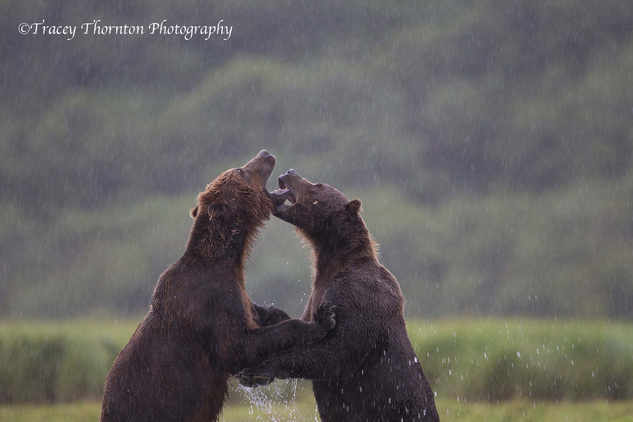
e-News 23 June 2015
Congratulations
Tracey Thornton
Photography Competition
North Shore Salon of Photography, New Zealand.
2015 Digital Set Subject, Action
Silver Medal - Brown Bears Sparring in the Rain - Alaska
e- News 20th June 2015
Ecological Restoration Project - Ko Te Pukaki - 20th June 2015
Ngati Whatua Orakei - Matariki and Hangi - Community Planting
Another successful day with around 2600 natives planted from the local nursery, kawakawa, kowhai, etc, on a cold, rainy, windy Saturday, finished off with a wonderful traditional Maori kai (food) from the hangi (food cooked traditional way in the ground)
This is to restore the past destruction and loss of our forests and shrub-land, for wildlife corridors across Auckland, the Northwest Link from the Waitakere Rangers in the West to Hauraki Gulf and Hunia Rangers in the East, to provide food and habitat for native birds like the Kereru & Tui, along with the lizards, butterflies, insects.
e-News June 2015
World Oceans Day - June 8th 2015
The world’s oceans – their temperature, chemistry, currents and life – drive global systems that make the Earth habitable for humankind.
Our rainwater, drinking water, weather, climate, coastlines, much of our food, and even the oxygen in the air we breathe, are all ultimately provided and regulated by the sea.
e-News May 15th 2015
Endangered Species Day 2015: 10 species dying out in the wild
(Images of a few species I have captured in the wild)
Extinction is a natural phenomenon that occurs at a natural "background" rate of between one to five species every year. But despite conservation efforts, scientists estimate species are disappearing between 1,000 to 10,000 times the natural rate – with dozens of animal and plant species going extinct every day.
A decade after Endangered Species Day was first launched, conservationists are calling for more to be done to protect threatened species. Over 40% of the world's species are estimated to be at risk of extinction, primarily from human activities driving habitat loss, introduction of exotic species and global warming.
Recent studies have shown one in six species will become extinct if global warming continues along its current trajectory. Among those threatened by the rising global temperature is the polar bear, whose sea ice habitat is shrinking at a rate of 9% per decade. Without greater intervention, thousands of animals and plants could soon experience the same fate as the Dodo, the Atlas bear and the Elephant bird.
e-News May 5th 2015
Penguins.
Recently we had "World Penguin Day",
Most associate penguins in Antarctica, but they can be found worldwide.
You cannot help but be charmed by these amazing birds that have a character all of their own.
There are seventeen species including six from NZ.
Mainly found in the Southern Hemisphere, but I have seen from Galapagos Islands, South Africa, and NZ to Antarctica
e-News March 30th 2015
Cape Horn - Nature and Wildlife collide
Volvo Ocean Race 2014 - 2015
Southern Ocean. Update Day11, Leg 5 to Itajai Brazil
Reports from the boats, all within a few miles of each other, apart from the all women crew on Team CSA some 400miles astern, 30knots of wind, water temp 3deg and heading into stormy seas as they near the Cape, with Team Alvimedica in front, its a race now over the next 48hrs between five boats to round Cape Horn
I sailed around Cape Horn a few years ago in calmer seas, or as they say here "between storms", only a few hours after rounding the Cape, a big storm did come!!!.
Amazing scenes of wildlife, including Albatross and dolphins, Fur Seals, King Shags.
e-News March 2015
I have been busy in the office sorting next trip to Borneo, to be announced soon and editing BornWild - Arctic to Antarctic, Free Spirit . a video from recent shoots since 2007-2014, the story so far. Hope to have ready soon to show.
Meanwhile have a look at some posts from the Tracey Thornton Photography face book page.
Regards Tracey
Seasons greetings
A final newsletter for 2014 and may 2015 be just as exciting and rewarding
BornWild - Arctic to Antarctic Endangered Species Series continued though- out 2014
With lots of wildlife filming including,
New Zealand - Poor Knights Islands and Pateke Ducks (Brown Teal) of Northland from kayak, Orca (Killer Whales) Auckland Harbour
North America -Yellowstone National Park, Grey Wolves and Bison, The Inside Passage (Voyage of the Glaciers) with Humpback Whales and Alaska to film the largest of all brown bears, Katmai Coastal Brown Bear (photo)
Canada - Henribourg, Saskatchewan, wildlife experience from local guides.
▪ BOOK AND DVD FILM DUE OUT soon
BORNWILD ALASKA - Living Free - Land of the Brown Bear
*Asia - Wildlife filming for next year hopes to include the Komodo Dragon and Orangutan
Wishing you all safe holidays and wonderful new year.
Refer to my web site for more photos and updates
Warm Regards Tracey
A final newsletter for 2014 and may 2015 be just as exciting and rewarding
BornWild - Arctic to Antarctic Endangered Species Series continued though- out 2014
With lots of wildlife filming including,
New Zealand - Poor Knights Islands and Pateke Ducks (Brown Teal) of Northland from kayak, Orca (Killer Whales) Auckland Harbour
North America -Yellowstone National Park, Grey Wolves and Bison, The Inside Passage (Voyage of the Glaciers) with Humpback Whales and Alaska to film the largest of all brown bears, Katmai Coastal Brown Bear (photo)
Canada - Henribourg, Saskatchewan, wildlife experience from local guides.
▪ BOOK AND DVD FILM DUE OUT soon
BORNWILD ALASKA - Living Free - Land of the Brown Bear
*Asia - Wildlife filming for next year hopes to include the Komodo Dragon and Orangutan
Wishing you all safe holidays and wonderful new year.
Refer to my web site for more photos and updates
Warm Regards Tracey
e-News October 2014 - Wildlife Photographer of the year 2014 entry
Thought I would share this wonderful image of my Jaguar entry into 50th Wildlife Photographer of the Year for 2014 for National History Museum, London.
This image made the final selection for the final round from over 40,000 entries representing over 90 countries from across the globe
The Story
Jaguar verses Caiman verses tree
Jaguar Kill - Day three was to prove an amazing experience. We set off as usual at day break upstream along the Cuiaba River and branched off to the Three Brothers River and found a magnificent large male Jaguar hunting along the rivers edge around 7.30am and tracked its progress to 11.30am, these cats are opportunistic, stalking ambush predator, top of the food chain, witnessing five unsuccessful kill attempts, it decided to lay up in the shade just in the bush out of view.
It is quite tough to follow these cats as they disappear into the forest like ghosts, there one minute, gone the next, so we decided to check out a reported jaguar sighting down stream and were rewarded with a female jaguar hunting along the rivers edge, and within five minutes she went into stalk mode and crept along on her belly towards the waters edge and with a lightening jump, pounced down with a large splash onto a large caiman grabbing it by the back of the head and for the next few minutes struggled with it in the water and finally dragged the caiman up onto the bank, where the caiman in a life and death struggle grabbed hold of a tree and held on for dear life. While this was playing out I caught this amazing action on film from my small boat, and when the jaguar delivered the fatal bite piercing the armoured skull, it licked the caimans head and with a huge effort pulled the caiman still holding the tree and both disappeared into the bush for a well earned meal for the jaguar. Jaguars here in the Pantanal have adapted to killing caiman by a bite directly through the skull between the ears delivering a fatal bite to the brain. WOW.
Refer to my web site for more photos and updates
Warm Regards Tracey
Thought I would share this wonderful image of my Jaguar entry into 50th Wildlife Photographer of the Year for 2014 for National History Museum, London.
This image made the final selection for the final round from over 40,000 entries representing over 90 countries from across the globe
The Story
Jaguar verses Caiman verses tree
Jaguar Kill - Day three was to prove an amazing experience. We set off as usual at day break upstream along the Cuiaba River and branched off to the Three Brothers River and found a magnificent large male Jaguar hunting along the rivers edge around 7.30am and tracked its progress to 11.30am, these cats are opportunistic, stalking ambush predator, top of the food chain, witnessing five unsuccessful kill attempts, it decided to lay up in the shade just in the bush out of view.
It is quite tough to follow these cats as they disappear into the forest like ghosts, there one minute, gone the next, so we decided to check out a reported jaguar sighting down stream and were rewarded with a female jaguar hunting along the rivers edge, and within five minutes she went into stalk mode and crept along on her belly towards the waters edge and with a lightening jump, pounced down with a large splash onto a large caiman grabbing it by the back of the head and for the next few minutes struggled with it in the water and finally dragged the caiman up onto the bank, where the caiman in a life and death struggle grabbed hold of a tree and held on for dear life. While this was playing out I caught this amazing action on film from my small boat, and when the jaguar delivered the fatal bite piercing the armoured skull, it licked the caimans head and with a huge effort pulled the caiman still holding the tree and both disappeared into the bush for a well earned meal for the jaguar. Jaguars here in the Pantanal have adapted to killing caiman by a bite directly through the skull between the ears delivering a fatal bite to the brain. WOW.
Refer to my web site for more photos and updates
Warm Regards Tracey
e-News September 2014 BornWild - Alaska
The Trek to Alaska
BornWild - Alaska, 2014
The Trek To Alaska to film the largest of Brown Bears "The Katmai Coastal Brown Bear" began with a stopover in San Francisco on a beautiful sunny July afternoon en route to capture the magnificence that is "Yellowstone National Park", where the wildlife of bears, bison and wolves roam free was a fantastic start thanks to my local wildlife guide Mike Francis
Then Vancouver to Anchorage, "The Voyage Of Glaciers" on Ocean Princess cruising up the Inside Passage, taking in the wildlife and glaciers with stopovers in Ketchikan filming some black bears, Then to Juneau, out on the water to film humpback whales bubble net feeding, Skagway - follow the Klondike gold trail of the 1890s by an old restored train up to the Yukon and witnessing ice calving from enormous glaciers in Glacier Bay.
Arriving in Anchorage, for a short stop over at Kodiak Island and float plane by Sea Hawk Air across the Shelikof Straits on a rainy misty afternoon to the 80ft Breezers anchored off the Katmai Coast, WOW, was I excited!. Thanks to experienced owners and hosts and guides Chuck and Olga Keim. This was home for the next of couple weeks and overcoming the weather either raining or pouring was challenging and a test of my Canon cameras that excelled. Chuck was by my side the entire time as bears can be unpredictable especially mums with cubs.
The scenery, waterfalls, wildlife and wilderness with bears catching salmon in the rivers, bald eagles, sea otters, seals, birdlife and lucky to catch the grey wolf on a couple of occasions. A true wilderness experience to treasure for a lifetime.
A visit to my sister and family on the farm in Henribourg, Saskatchewan, Canada and the summer wildlife including, deer, elk, fox, squirrel, and freshly caught pickerel by Ron for the BBQ at Candle Lake and variety of birdlife was my reward for a memorable assignment to Alaska.
This is part of the BornWild - Arctic to Antarctic endangered species series.
My research project of a slice in time of our environment, a book, DVD and research spread sheets add to what I have already filmed over 8 years and 18 countries
Warm Regards Tracey
The Trek to Alaska
BornWild - Alaska, 2014
The Trek To Alaska to film the largest of Brown Bears "The Katmai Coastal Brown Bear" began with a stopover in San Francisco on a beautiful sunny July afternoon en route to capture the magnificence that is "Yellowstone National Park", where the wildlife of bears, bison and wolves roam free was a fantastic start thanks to my local wildlife guide Mike Francis
Then Vancouver to Anchorage, "The Voyage Of Glaciers" on Ocean Princess cruising up the Inside Passage, taking in the wildlife and glaciers with stopovers in Ketchikan filming some black bears, Then to Juneau, out on the water to film humpback whales bubble net feeding, Skagway - follow the Klondike gold trail of the 1890s by an old restored train up to the Yukon and witnessing ice calving from enormous glaciers in Glacier Bay.
Arriving in Anchorage, for a short stop over at Kodiak Island and float plane by Sea Hawk Air across the Shelikof Straits on a rainy misty afternoon to the 80ft Breezers anchored off the Katmai Coast, WOW, was I excited!. Thanks to experienced owners and hosts and guides Chuck and Olga Keim. This was home for the next of couple weeks and overcoming the weather either raining or pouring was challenging and a test of my Canon cameras that excelled. Chuck was by my side the entire time as bears can be unpredictable especially mums with cubs.
The scenery, waterfalls, wildlife and wilderness with bears catching salmon in the rivers, bald eagles, sea otters, seals, birdlife and lucky to catch the grey wolf on a couple of occasions. A true wilderness experience to treasure for a lifetime.
A visit to my sister and family on the farm in Henribourg, Saskatchewan, Canada and the summer wildlife including, deer, elk, fox, squirrel, and freshly caught pickerel by Ron for the BBQ at Candle Lake and variety of birdlife was my reward for a memorable assignment to Alaska.
This is part of the BornWild - Arctic to Antarctic endangered species series.
My research project of a slice in time of our environment, a book, DVD and research spread sheets add to what I have already filmed over 8 years and 18 countries
Warm Regards Tracey

The New Zealand Herald
Orca pod spotted hunting in Auckland harbour By Michael Botur
7:49 PM Sunday Aug 31, 2014
Photo / Tracey Thornton
A pod of orca swimming and chasing stingrays in Auckland harbour caught the attention of beach-goers on Saturday morning.
Tracey Thornton spotted the whales about 300m offshore while walking her dog at Mission Bay.
Ms Thornton, a wildlife photographer who had just returned from Alaska, raced home to grab a camera with a large lens and for 90 minutes tracked the whales east past St Heliers and onto the Tamaki River.
Later they were also photographed by Rob and Gin Mager at Bucklands Beach.
Ms Thornton estimated the pod featured 8 to 10 whales and believes they were chasing stingrays.
"They move very fast. When they're going down the harbour, they're in feeding mode, they go after the abundant stingrays.
"Stingrays go to the bottom, so when they see them, they will grab stingrays' tails and flip them around to avoid the barbs."
Despite the churning ocean, the orcas weren't hard to see. "Their big dorsal fins, up to a metre high, were very distinguishable. They're quite active in the water and when they're going after stingrays they flick their tails up to get momentum to dive."
Orca pod spotted hunting in Auckland harbour By Michael Botur
7:49 PM Sunday Aug 31, 2014
Photo / Tracey Thornton
A pod of orca swimming and chasing stingrays in Auckland harbour caught the attention of beach-goers on Saturday morning.
Tracey Thornton spotted the whales about 300m offshore while walking her dog at Mission Bay.
Ms Thornton, a wildlife photographer who had just returned from Alaska, raced home to grab a camera with a large lens and for 90 minutes tracked the whales east past St Heliers and onto the Tamaki River.
Later they were also photographed by Rob and Gin Mager at Bucklands Beach.
Ms Thornton estimated the pod featured 8 to 10 whales and believes they were chasing stingrays.
"They move very fast. When they're going down the harbour, they're in feeding mode, they go after the abundant stingrays.
"Stingrays go to the bottom, so when they see them, they will grab stingrays' tails and flip them around to avoid the barbs."
Despite the churning ocean, the orcas weren't hard to see. "Their big dorsal fins, up to a metre high, were very distinguishable. They're quite active in the water and when they're going after stingrays they flick their tails up to get momentum to dive."
The Trek To Alaska 2014
28 August - After many months of planning, I enjoyed a very successful assignment to film the largest Brown Bear "The Katmai Coastal Brown Bear" and a magnificent Yellowstone National Park with its nature and wildlife, arriving back to NZ a few days ago, refer Photo Shoots for some amazing wildlife
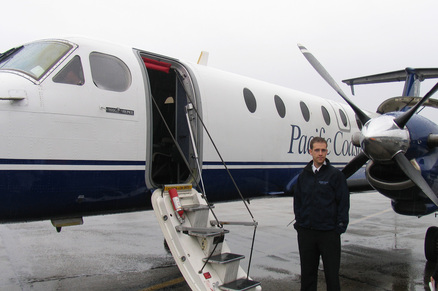
News Update 26 June 2014.
BornWild - Alaska 2014
ONLY FOUR WEEKS TO DEPARTURE
BornWild - Alaska, departing late July 2014
This is part of the Arctic to Antarctic endangered species series.
I first plan to film wildlife in Yellowstone National Park, then from Vancouver, cruise up the inside passage, taking in the wildlife and glaciers (one of natures magnificent experiences) up to Anchorage, Alaska, where I will float plane out to the Katmai coast, to the Coastal Explorer, my home for the next couple weeks filming the Grizzly and wildlife.
An overdue visit to family, and check out the summer wildlife in Saskatoon and Prince Albert, Canada
News Update.
19 May 2014
50th Wildlife Photographer of the Year
National History Museum London.
Thank you for entering the Wildlife Photographer of the Year 2014 competition Tracey Thornton.
We’re halfway through judging, and are delighted to say that one or more of your submissions has been selected for the Final Round.
You can view the 49th 2013 exhibition at the Auckland Museum
The world-renowned exhibition, on loan from the Natural History Museum in London, features 100 awe-inspiring back-lit images, from fascinating animal behaviour to breathtaking wild landscapes.
2013 collection of one hundred images represents the work of international photographers, who have been recognised in the most famous and prestigious event of its kind in the world.
The photographers were selected by an international jury for their artistic merit or originality from nearly 43,000 entries representing 96 countries.
GOOD LUCK TRACEY
19 May 2014
50th Wildlife Photographer of the Year
National History Museum London.
Thank you for entering the Wildlife Photographer of the Year 2014 competition Tracey Thornton.
We’re halfway through judging, and are delighted to say that one or more of your submissions has been selected for the Final Round.
You can view the 49th 2013 exhibition at the Auckland Museum
The world-renowned exhibition, on loan from the Natural History Museum in London, features 100 awe-inspiring back-lit images, from fascinating animal behaviour to breathtaking wild landscapes.
2013 collection of one hundred images represents the work of international photographers, who have been recognised in the most famous and prestigious event of its kind in the world.
The photographers were selected by an international jury for their artistic merit or originality from nearly 43,000 entries representing 96 countries.
GOOD LUCK TRACEY
Tutukaka Coast. Northland. NZ. April 2014 (Easter)
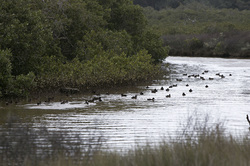
*Kayaking Ngunguru River after storm
*Filming Pateke (Brown Teal Ducks) Endangered only 400 left in Northland.
*Dive Tutukaka at Poor Knights Islands (23km off shore) courtesy of Kate, skipper Russ aboard Bright Arrow in stormy sea's - not for the faint hearted
*Filming Pateke (Brown Teal Ducks) Endangered only 400 left in Northland.
*Dive Tutukaka at Poor Knights Islands (23km off shore) courtesy of Kate, skipper Russ aboard Bright Arrow in stormy sea's - not for the faint hearted
Tracey guest speaker at the Auckland Photographic Society
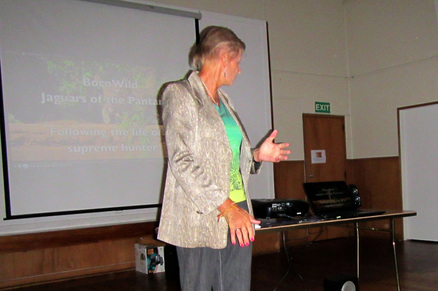
Presentation film
BornWild "Jaguars of the Pantanal"
and Arctic to Antarctic, Endangered Species project.
3rd April 2014
BornWild - Alaska 2014

I am pleased to announce I have now confirmed
BornWild - Alaska, departing late July 2014
This is part of the Arctic to Antarctic endangered species series.
I first plan to film wildlife in Yellowstone National Park, then from Vancouver, cruise up the inside passage, taking in the wildlife and glaciers (one of natures magnificent experiences) up to Anchorage, Alaska, where I will float plane out to the Katmai coast, to the Coastal Explorer, my home for the next couple weeks filming the Grizzly and wildlife.
An overdue visit to family, and check out the summer wildlife in Saskatoon andPrince Albert, Canada (my last winter visit their in 1990, was snowing and minus 47deg, (now that was cold Jacqui & Ron.)
BornWild - Alaska, departing late July 2014
This is part of the Arctic to Antarctic endangered species series.
I first plan to film wildlife in Yellowstone National Park, then from Vancouver, cruise up the inside passage, taking in the wildlife and glaciers (one of natures magnificent experiences) up to Anchorage, Alaska, where I will float plane out to the Katmai coast, to the Coastal Explorer, my home for the next couple weeks filming the Grizzly and wildlife.
An overdue visit to family, and check out the summer wildlife in Saskatoon andPrince Albert, Canada (my last winter visit their in 1990, was snowing and minus 47deg, (now that was cold Jacqui & Ron.)
BornWild - Arctic to Antarctic
Jaguars of the Pantanal, Brazil
Presentation & film at the Auckland East Rotary Club, Romfords, Tamaki Drive Yacht Club 3rd March 2014.

Tutukaka Coast NZ.

Testing out our new filming kayak last week - Tutukaka Coast - 25th Jan 2014. Yip! - Chevy wanted to practice rolling over and both of us getting back on, mmmm, challenging.
Kayak - Tetra 12 Angler from Fergs Kayaks, Orakei, Auckland.
Kayak - Tetra 12 Angler from Fergs Kayaks, Orakei, Auckland.
e-News October 2013

PROJECT SOUTH AMERICA
View some amazing photos click on photo above and scroll down page to view Wild Jaguars and Galapagos Islands and Iguazu Falls.
SPECIAL OFFER. To ORDER click here
Order any A3 canvas print before 13th October 2013, from ttp web site for just $99.00 delivered (NZ Only) Conditions may apply)
STANDARD WRAPPED CANVAS
Photo printed in High Quality and gallery wrapped on a 30mm deep frame. The image wraps around the edges of the Frame to produce a stunning effect. Canvases are professionally gallery wrapped and ready to hang.
Arriving back recently from an amazing South American experience, filming the big cats deep in the heart of Brazil, the pre-historic wildlife of the Galapagos Islands and the power and sheer volume of water over the Iguazu falls.
"Arctic to Antarctic, BornWild" conservation field project to film and document the Jaguar, third largest cat in the world, and wildlife around the Pantanal in South America, Brazil , one of the worlds largest tropical wetland areas
- The Jaguar is a near threatened species and its numbers are declining. Threats include loss and fragmentation of habitat. While international trade in Jaguars or their parts is prohibited, the cat is still frequently killed by humans, particularly in conflicts with ranchers and farmers in South America.
- Galapagos Islands with the sheer number and variety of wildlife both on land and in the water of the Galápagos is quite remarkable. Because of the islands’ isolation and remoteness, many of these species are found only in the Galápagos and have not changed much since prehistoric times. The Galápagos’ famous marine iguanas, albatross and giant tortoises continue to amaze scientists.Charles Darwin sailed to Galapagos on board the HMS Beagle in September 1835, when he was 26 years old
- Iguassu Falls at 275m high and known as the seventh Natural Wonder of the World.
Canon equipment supplied by Progear New Market, Auckland
*We support The Auckland Zoo
* PCL Imaging Printing & Mounting
I am planning some presentation DVD slide shows, time & venue to be advised.
e-News July 2013 Project Jaguar & Galapagos Update

PROJECT JAGUARI am on track for my next "Arctic to Antarctic, BornWild" conservation field project to film and document the Jaguar, third largest cat in the world, and wildlife around the Pantanal in South America, Brazil , one of the worlds largest tropical wetland areas departing 27th July 2013.
The Jaguar is a near threatened species and its numbers are declining. Threats include loss and fragmentation of habitat. While international trade in Jaguars or their parts is prohibited, the cat is still frequently killed by humans, particularly in conflicts with ranchers and farmers in South America.
On the way I will also be visiting Iguazu Falls at 275m high and known as the seventh Natural Wonder of the World.
Also filming and document the wildlife of the Galapagos Islands The sheer number and variety of wildlife both on land and in the water of the Galápagos is quite remarkable. Because of the islands’ isolation and remoteness, many of these species are found only in the Galápagos and have not changed much since prehistoric times. The Galápagos’ famous marine iguanas, albatross and giant tortoises continue to amaze scientists.Charles Darwin sailed to Galapagos on board the HMS Beagle in September 1835, when he was 26 years old
Travel arrangements by The House Of Travel, Remuera, Geoff Leslie
Canon equipment supplied by Progear New Market, Auckland
*We support The Auckland Zoo
* PCL Imaging Printing & Mounting
I am planning some slide shows and talks on return.
e-News June 2013
Forest and Birds Gardens for Wildlife launch: 22 June 2013
A fantastic event on Saturday was enjoyed by everyone to celebrate the launch of Gardens for Wildlife by planting a native forest in the city! Hosted by Ngati Whatua o Orakei at their Matariki Planting Day at Orakei Marae.
Planted 4000 native plants propagated by Ngati Whatua o Orakie at their nursery included Karamu (coprosma robusta), Te kouka (cabbage tree), putaputa weta (marble leaf), kawakawa, ake ake, hohere (lacebark), karo,, kowhai.
e-News June 2013
Fieldays 2013 - photo shoot Mystery Creek
Hamilton NZ
Fieldays - Putting the business in Agribusiness since 1969!
Acknowledged as a window into one of the most innovative, forward thinking agricultural economies in the world, the New Zealand National Agricultural Fieldays is proud to be celebrating 45 years.
This year 125,127 visitors attended the iconic four day event held at Mystery Creek every June and many exhibitors and visitors are already looking forward to next year with dates being confirmed as 11-14th June 2014.
e-News February 2013
Tiritiri Matangi - photo shoot
Tiritiri Matangi Island, situated in the Hauraki Gulf and only a 75min ferry trip from Auckland. and is one of the world's most successful volunteer conservation projects
e-News January 2013
**SEASONS GREETINGS from the team at ttp and wishing you all a wonderful 2013
NEW RELEASE IMAGES NOW ONLINE
EXCITING SUMMER NEW YEAR SALE NOW ON
* 15% OF ALL CANVAS PRINT ORDERS
* FREE NZ DELIVERY
* GIFT VOUCHERS
(Conditions may apply)
We supply prints only, framed, on canvas, and licensed STOCK library
Please contact us if you have that special event or picture you would like taken.
Bus. 09 528 0331 Mob. 021 727 112 Email. tracey.thormton@xtra.co.nz
Web. traceythorntonimages.co.nz
It is a WILD PLACE out there
What are the Tigers up too ?
e-News December 2012
SEASONS GREETINGS
Merry Christmas from the team at ttp and wishing you all a wonderful 2013
Please note our offices will be closed from December 24th to 7th January 2013
e-News November 2012
NEW RELEASE IMAGES NOW ONLINE
CHRISTMAS 2012 PROMOTION
EXCITING SUMMER CHRISTMAS SALE NOW ON
* 25% OF ALL CANVAS PRINT ORDERS only for Barfoot & Thompson
* FREE DELIVERY (Auckland area)
* HANGING SERVICE AVAILABLE
Hurry! Christmas promotion must end 31/12/12
(Conditions may apply)
We supply prints only, framed, on canvas, and licensed STOCK library
Please contact us if you have that special event or picture you would like taken.
e-News September 2012
Notice - Ohakune Station Gallery and Gift Shop Closes.
After two enjoyable years developing and running the Ohakune Station Gallery and Gift Shop, regretfully it is time for me to move on. The demands of my wildlife photography business are such that I can no longer give the Gallery and Gift Shop the ‘TLC’ it needs and deserves. Consequently, for the foreseeable future, it will remain closed. My hope is that it will re-open before too long under fresh stewardship.
Thank you for your support of the Gallery and Gift Shop throughout and for your understanding.
e-News March 2012
The Station Gallery & Museum Ohakune are holding a Family Open Day Saturday 7th April 2012 9am-4pm
AT THE FABULOUS JUNCTION.
FREE ENTRY. FREE ENTRY, FREE ENTRY
ANTARCTICA. Photographs from Tracey Thornton's trip to Antarctica December 2011.
OFFICAL MUSEUM OPENING. at 4pm - all welcome followed by refreshments.
RAFFLE with some fantastic prizes
CHILDREN'S COLOURING COMPETITION.
CHILDREN'S EASTER EGG HUNT.
MAKE THIS A DAY TO REMEMBER, WITH LUNCH AT THE STATION CAFE.
e-News January 2012
Welcome to this months newsletter..
From " The Adventure Capital of N..Z". Ohakune
"STAY AND PLAY"
Hi Everyone..
Wishing you all a wonderful and successful 2012
Recently returning from an amazing experience in Antarctica, another endangered species photographic and research assignment completed.
Sailing from the Argentinian port of Ushuaia, through the Beagle Channel and stormy Drake Passage to South Shetland Islands and Antarctica Peninsula.
Following the success of recent BornWild exhibitions featuring endangered species from New Zealand, Africa, India, South America, Canada and the Arctic, we now have documented some of Antarctica's
wildlife and landscapes, including penguins, seals, whales, sea birds, and ice landscapes.
This exciting trip will result in a documentary film and book, both to be released in the coming year.
The Station Gallery Ohakune will be first to exhibit the Antarctica "Limited Edition" collection, and refer to the traceythorntonimges.com web site for other incredible photo's (soon to be processed)
e-News September 2011
Welcome to this months newsletter..
From " The Adventure Capital of N..Z". Ohakune
Hi Everyone..
We are excited to announce ttp Antarctic trip now on and departing early Dec 2011.
The Rugby World Cup is in full swing and we look forward to supporters and tourists visiting through the Central Plateau, Ruapehu Area and Ohakune between matches, to experience some fabulous hospitality and some NZ adventures & activities (see below) including skiing and snow boarding, with snow falling last night, its a fabulous season, Mountain Biking Ohakune Old Coach Road.
Here at the Station Gallery and Museum, check out our $20.11 Rugby World Cup Special Promotion, with two amazing posters of Mt Ruapehu and Ohakune Area. for ONLY $20.11
Visit and take your photo at the "Black Carrot" Ohakune (you can catch all the weekly news and events at Ruapehu Bulletin on line http://www..ohakune.info)
The Station Gallery and Railway Museum continues to be a popular destination, with tour groups, locals and tourists. (Access is through the Gallery's main entrance, 75m east of the Ohakune Railway Station at the Junction.)
a special display in the museum of the train Tangiwai Disaster, Christmas Eve 1953.
We look forward to many more displays and next we are looking forward to *Old Coach Road andHapuawhenua Viaduct display by Tongariro National History Society, *Turoa ski field & and mountain road history, *Early pioneer's of the Milling and timber industry, *Market Gardens history.*Outdoor displays.
Everyone welcome open 11am--3pm.or by appointment. Call in for free Ohakune Town maps and a Ski Map of the mountain from Ruapehu Alpine Lifts and have a steaming hot coffee at the Station Cafe in Railway Station.
If you think you have something you would like to display or can help, please contact Tracey anytime
We would also like to thank,
* Bob Norling from Ohakune Electrical and Main Trunk Rail Ohakune (M.T.R.O.inc)
*Station Lodge, Darren and Jane.
* Peppatree, Design & Print.Angela
*Graham Nottage (Rabbit)
*Des Huddlestone, Books and Photo's
*Stanley Fraser, Photo's and history research
*John Archer, Research history and songs.
*Paul Beckett, Tangiwai (Engine Ka 949 relic) display
*Ruapehu Signs. Mike
Gallery Update.
We are receiving good response from the Overlander train, stops for lunch at the station Cafe around 12.30pm ish and passengers can view the Crafts at the 'Waiting Room' on the plateform and then wonder down to the Gallery and Museum, greeted at the door by our loving Labrador Chevy, always a big hit.
New work arrived recently and we are exhibiting local landscape and wildlife images (from 360' above and below) around the spectacular Ruapehu Area and the "BORNWILD" collection on display now and featuring the Endangered Species Series from recent Bornwild wildlife photo shoots and research assignments, including Australia, South America, India, Africa, Canada and New Zealand.
* All sales help support wildlife.We are offering a Special on handcrafted native timber framed prints. Call in to inspect artwork.
Come and meet "OSCAR" our famous resident KIWI.
A display from Kerry Oates and Whakamanu Wildlife Trust is of popular interest in the Gallery.
From March Newsletter.
Whakamanu Wildlife Trust Newsletter announce the 50th kiwi chick (Kokiri) was returned toWaimarino Forest on 6th November 2010.
Well done Kerry for a wonderful achievement and hard work throughout the year in all weather conditions, rain, storms, sun & snow.
Watch out for their new Web Site (www.whakamanu.co.nz) and we sucessfully released more Kiwi Chicks in February, how special is that and a special invite to long time residences Pam and DeryckBrown enjoyed the experience. See their photos on ttp
Seven kiwi chicks released last month
Now is the perfect opportunity to discover some wonderful Winter activities and services including-
Booking form Isite Clyde Street for all your activities
The Ski Shed, (The Big Red Shed) Clyde Street for all your Ski and Board hire, clothing boots helmets etc.. Ask for Ian,Graeme or Jason for a great deal.
Mountain Biking from the Station Lodge (Bike hire also from The Station Lodge)
Whanganui River Adventures, Pipiriki for Jet Boating, Bush walking, The Bridge to Nowhere andcanoeing,
Walk or bike the recently opened Old Coach Road, Tramp the world famous Tongariro Crossing (booking essential)
A variety of accommodation options from the Station Lodge at the Junction, Snowhaven 92 Clyde Street in the centre of town,, Powderhorn Chateau at the Junction, and soak up the atmosphere of days gone by in the Station Cafe while experiencing the great coffee and food.
Visit Ohakune i-site Information Centre, Clyde Street for Ruapehu Area up to date information.
Waimarino Wines and Flowers for that special gift, Goldfinich Street,
Wanganui Motors Ohakune for personal sales and service.
Amazing furniture and products from Timber & Stone, 7230 State Highway Raetihi.
Ohakune TV Electrical for a selection of electrical goods and services.....
Ohakune Bulletin keeping us in touch with local events and news.
PeppaTree Clyde Street for brochures, and design & print.
PCL for quality printing.
Ruapehu Signs at Raetihi.
WILDLIFE and NEWS
NZ Falcon (Karearea) We are encouraged with many sightings and calls (kek kek kek) in the study area, and some wonderful shots captured in the air, hunting and on a kill.
Karearea or NZ Falcon is one of only two NZ raptors and is endemic to New Zealand. The native falcon is and has been a distinctive feature of New Zealands backcountry.
Powerful flight and fearless defence of its nesting habitat has earned it the respect and admiration of those who live in these areas.
Kiwi chick release and photo shoots this week.
Garden Bird Survey 2011 reported a drop in numbers of silvereye, sparrows similar to last year, refer landcareresearch.co.nz for top ten birds.
We are continuing to record the natural habit and movements of Harrier Hawk (Kahu), New ZealandPigeon (Kereru) and the New Zealand Falcon (Karearea) from Kahu River Cottage and mountain treks.
e-News July 2011
Welcome to this months newsletter..
From " The Adventure Capital of N..Z". Ohakune
Hi Everyone..
Winter is now upon us here on the Central Plateau, battered with storm after storm and lots of snow falling over the past week, it is ironic that only a couple of weeks ago we were all talking about when is the snow coming?
Reported this week in the Ohakune Bulletin, Mt Ruapehu snow base on mountain 113cm (you catch all the weekly news and events on http://www..ohakune.info)
The Station Gallery and Railway Museum continues to be a popular destination, with tour groups, locals and tourists. (Access is through the Gallery's main entrance, 75m east of the Ohakune Railway Station at the Junction.)
Ian Heappey from The Ski Shed Ohakune, continues to work with much enthusiasm, not only his time and building skills, but organizing railway displays and a special display of the train Tangiwai Disaster, Christmas Eve 1953.
We look forward to many more displays and next we are looking forward to *Old Coach Road and HapuawhenuaViaduct display by Tongariro National History Society, *Turoa ski field & and mountain road history, *Early pioneer's of the Milling and timber industry, *Market Gardens history.*Outdoor displays.
Everyone welcome open 11am--3pm. Call in for a free Ski Map of the mountain from Ruapehu Alpine Lifts and have a steaming hot coffee at the Station Cafe.
If you think you have something you would like to display or can help, please contact Tracey anytime
e-News March 2011
Welcome to this months newsletter.
From " The Adventure Capital of N..Z". Ohakune
Hi Everyone..
I know we are all thinking of you in Christchurch and the loss of one of our NZIPP members. We have a donation box at the entrance to the Gallery and thanks to lots of support from tourists and locals.
With Autumn in full swing now on the central plateau, last weekend saw a dusting of snow on the mountains and as temperatures drop to -1 nearby with frosts.brrrrrr.
Wow it's been a busy time here in Ohakune with the opening on 12th February of "The Railway Museum" in the old vacant railway shed next to The Station Gallery. (Access is through the Gallery main entrance, 75m east of the Ohakune Railway Station at the Junction.)
A special thanks to Ian Heappey from The Ski Shed Ohakune, who has worked tirelessly on the museum for the past few months, voluntarily not only his time and building skills, but organising railway displays and a special display of the train Tangiwai Disaster, Christmas Eve 1953.
We look forward to many more displays and next we are looking at a *Old Coach Road display, *Turoa ski field & and mountain road history, *Early pioneer's of the Milling and timber industry, *Market Gardens history.
Everyone welcome open 11am--3pm daily
If you think you have something you would like to display or can help, please contact Ian or Tracey anytime
We would also like to thank,
* Bob Norling from Ohakine Electrical and Main Trunk Rail Ohakune (M.T.R.O.)
* Peppatree, Design & Print.
*Graham Nottage (Rabbit)
*Des Huddlestone, Books and Photo's
*Stanley Frazer, Photo's and history research
*John Archer, Research history and songs.
*Paul Beckett, Tangiwai (Engine Ka 949 relic) display
*Ruapehu Signs.
Gallery Update.
We are receiving great response from locals and the Overlander train, as each day it stops for lunch at the station Cafe around 12.30pm ish and passengers can view the Crafts at the 'Waiting Room' on the plateform and then wonder down to the Gallery and Museum, greeted at the door by our loving Labrador Chevy, always a big hit.
New work arrived recently and we are exhibiting local landscape and wildlife images (from 360' above and below) around the spectacular Ruapehu Area and the "BORNWILD" collection on display now and featuring the Endangered Species Series from recent Bornwild wildlife photo shoots and research assignments, including Australia, South America, India, Africa, Canada and New Zealand.
* All sales help support wildlife.We are offering a Special on handcrafted native timber framed prints. Call in to inspect artwork.
Come and meet "OSCAR" our famous resident KIWI.
A display from Kerry Oates and Whakamanu Wildlife Trust is of popular interest in the Gallery.
Whakamanu Wildlife Trust Newsletter announce the 50th kiwi chick (Kokiri) was returned to Waimarino Forest on 6th November 2010.
Well done Kerry for a wonderful achievement and hard work throughout the year in all weather conditions, rain, storms, sun & snow.
Watch out for their new Web Site (www.whakamanu.co.nz) and we sucessfully released more Kiwi Chicks in February, how special is that and a special invite to long time residences Pam and Deryck Brown enjoyed the experience. See their photos on ttp
Autumn is now under way in Ohakune T"he Southern Gateway to the Tongariro National Park" (World Heritage Area) and the mountain now has a dusting of snow from last weekend and the farming community will have benefited from the "RAIN". Not long to go before Ski season will be with us again.
Now is the perfect opportunity to discover some wonderful summer/Autumn activities and services including-
e-News December 2010 "GALLERY OPENING"
Welcome to this months newsletter.
From " The Adventure Capital of N..Z". Ohakune
Hi Everyone..
Wishing you all a Very Merry Christmas and Wonderful New Year. 2011
Wow it's been a busy time here in Ohakune with the opening on 22nd October of "The Station Gallery" in the old vacant 1908 historic Ways and Works Railway building (100m east of the Railway Station at the Junction.)
We are exhibiting local landscape and wildlife images (from above and below) around the spectacular Ruapehu Area and the "BORNWILD" collection on display now and featuring the Endangered Species Series from recent Bornwild wildlife photo shoots and research assignments, including Australia, South America, India, Africa, Canada and New Zealand.
Come and meet "OSCAR" our famous resident KIWI.
A display from Kerry Oates and Whakamanu Wildlife Trust is of popular interest in the Gallery.
Whakamanu Wildlife Trust Newsletter announce the 50th kiwi chick (Kokiri) was returned to Waimarino Forest on 6th November 2010.
Well done Kerry for a wonderful achievement and hard work throughout the year in all weather conditions, rain, storms, sun & snow.
Summer is now under way in Tongariro National Park (World Heritage Area) and a as reported by the Ruapehu Bulletin last week, the "driest Waimarino November ever since records began in 1950.
On 29 November Waimarino recorded its second-highest daily maximum air temperature of 26.5deg and last weekend saw the first rainfall in many weeks and the mountain tops only has a light snow covering.
Now is the perfect opportunity to discover some wonderful summer time activities and services including-
Book all your activities and Mountain Biking from the Station Lodge (Bike hire from The Station Lodge)
Whanganui River Adventures, Pipiriki for Jet Boating, Bush walking, The Bridge to Nowhere and canoeing,
Walk or bike the recently opened Old Coach Road, Tramp the world famous Tongariro Crossing (booking essiential)
A variety of accommodation options from the Station Lodge at the Junction, Snowhaven 92 Clyde Street in the center of town,, Powderhorn Chateau at the Junction, and soak up the atmosphere of days gone by in the Station Cafe while experiencing the great coffee and food.
Visit Ohakune i-site Information Centre, Clyde Street for Ruapehu Area up to date information.
Waimarino Wines and Flowers for that special gift, Goldfinich Street,
Wanganui Motors Ohakune for personal sales and service.
Amazing furniture and products from Timber & Stone, 7230 State Highway Raetihi.
Ohakune TV Electrical for a selection of electrical goods and services.
Ohakune Bulletin keeping us in touch with local events and news.
PeppaTree Clyde Street for brochures, and design & print.
WILDLIFE and NEWS
A health check on some Kiwi's and locations during November.
We are continuing to record the natural habit and movements of Harrier Hawk (Kahu), New Zealand Pigeon (Kereru) and the New Zealand Falcon (Karearea) from Kahu River Cottage and mountain treks.
e-News October 2010
Welcome to this months newsletter.
From " The Adventure Capital of N..Z". Ohakune
Hi Everyone..
I had a very successful Bornwild Assignment to central Africa, Kenya, Tanzania and Rwanda, returning couple weeks ago, 12hrs of filming most days very tired and excited with lots of filming and images to process.
Big thanks to Geoff Leslie from House of Travel Remuera and Joseph Gitonga from Tropical Breeze Safaris, Guides/Naturalist Ben, Pray and Morris and support teams.
Meetings with the Dian Fossey Gorilla Foundation was very rewarding, and meeting up with various naturalists and conservationists.
It is now 20 years (1990) since last in Kenya and look forward to compare footage taken then to now (2010). I have recorded all species of wildlife filmed for our research to share with our conservation and charities and support groups..
This completes four years of Bornwild Endangered Species Assignments, 2007 Southern Africa (Elephants), 2008 Northern India (Tigers), 2009 Canada (Polar Bears), Central Africa (Gorilla's), 2007 - 2010 New Zealand (kiwi, Northern Dotterel, Blue Duck. To include a programme slide show for primary schools and groups to educate our future generation of endangered wildlife.
Highlights included "The Wildebeest Migration" crossing the Mara River, with crocodiles, Lions, Leopards, waiting for an easy meal.
Cheetah brothers hunting warthog, Tree climbing Lions, Herd of over 100 Elephants, Large angry Gorrilla Silverback pulling down a tree on top of me, lioness stalking me on Mara River and local villagers along the way always greeted with a friendly wave.
Look out for the opening coming soon of the Ohakune Station Gallery And Museum. Starting with the ttp Gallery. Yes we have been busy painting and cleaning (special thanks to Ian Heappy and Bob Norling ) and excited with this new venture. We will be also showing wonderful images and Slide Shows of the recent Bornwild Series. A display from Kerry Oates and Whakamanu Wildlife Trust.
Spring is now under way in Tongariro National Park and a snow base of approx 1.7m on the mountain, ideal for spring skiing and boarding and bush walking, lookout for spring nest building birds. Spoke to soon now its a hailstorm outside and yesterday's spring sun is now winter again.!
WILDLIFE and NEWS
A health check on some Kiwi's planned this week.
We are continuing to record the natural habit and movements of Harrier Hawk (Kahu), New Zealand Pigeon (Kereru) and the New Zealand Falcon (Karearea) from Kahu River Cottage and mountain treks.
e-News August 2010
Welcome to this months newsletter.
From " The Adventure Capital of N.Z". Ohakune
Hi everyone..
I am looking forward to flying out to Africa on 28th August to our next "BORNWILD" endangered species Photographic Assignment to Rwanda and Gorilla's and Kenya's Great Migration, to document the wildlife.
We hope to be able to update progress and some images on our facebook page when we can, as we will have no internet access from camps.
Lots of changes in Tongariro Natioal Park over the past couple months, see a snow base of approx 1.3m at Turoa and 1.1m at Whakapapa, skifields, (see attached aerial image) taken recently over the Three Scared Peaks of Mt Ruapehu, Mt Tongariro and Mt Ngauruhoe.
Record numbers of skiers and boarders have been enjoying the fine sunny weather, ideal for all the family to play in the snow.
WILDLIFE and NEWS
We have been busy with photo shoots.. (see ttp web site for some amazing images)
In April the Aerial assignment to document Tongariro National Park in Summer and Autumn. Ohakune Anzac Day Parade on 25 April, a fine sunny Sunday morning saw a fantastic attendance.
In May, shot a huge 26 point Red Stag and a Fallow Stag,. Whanganui River Shoot.
June was the annual Ruaview Bull sale, QB Ohakune Wild Hunt, Waimarino Forest shoot, a visit to Blue Duck Lodge on the Whanganui River, Kiwi Chick release Waimarino Forest, and the annual Ohakune Mardi Gras music festival was a big hit this year with a sell out of 8000 tickets.
2nd July, the opening by Prime Minister John Key, of Ruapehu to Whanganui cycle trails and Ohakune Old Coach Road, the Winter assignment to document Tongariro National Park in Winter. Turoa ski and board shoots from the top.
August. Africa Bornwild Assignment and Kiwi Chick release.
We are continuing to record the natural habit and movements of Harrier Hawk (Kahu), New Zealand Pigeon (Kereru) and the New Zealand Falcon (Karearea).
At 4pm Tuesday a falcon flew high over the bush out front of "Kahu River Cottage" giving out a high pitch call of KEK-KEK-KEK- KEK and disappeared as quickly as he appeared, hunting small birds and rabbits.
We are still hoping to open a Art Gallery/studio and are also exploring the possibility of a Museum and Arts Centre.
The Arts Centre will contain Historic images or the Ruapehu Area and combined with the Museum to contain local Railway Items and local Agricultural and general historic items. This will benefit the community and offer information and interest to train passengers, general public, overseas tourists, Mountain To The Sea Cycleway and track and train enthusiasts.
The building could also be a base for the newly formed Ruapehu Mountain Bike Club offering bike hire and guides, and a theatre for slide shows and a base for Tracey Thornton Photography Conservation Programmes and Wildlife education.
e-News April 2010
Welcome to this months newsletter from Tracey Thornton Photography.
(We are now based in the exicting "Adventure Capital of NZ". Ohakune)
Hi everyone.
With the weather getting colder and a recent dusting of snow over our Mt Ruapehu, Mt Tongariro and Mt Ngauruhoe and a couple of frosts sending the deer into very loud Roaring all night, its time to prepare for the long winter ahead, and we all look forward to a fabulous season.
WILDLIFE NEWS
Recent Photo shoots included in March the release of Kiwi Chick "Peat", this release formed part of the Kiwi Forever student training programme.
Sadly we lost the two Kiwi chicks seen in last January newsletter to stoats. On a positive note the Dobbyn nest egg lift in December resulted in the first egg hatched in January and named Jumper, due to its jumping energy.
A Blue Duck (Whio) catch and release in the Mangatepopo River resulted in 3 chicks banded and their parents re-banded for identifaction. The Blue Duck or Whio is a threatened species of waterfowl endemic to New Zealand. These birds live around fast flowing rivers.
An encounter with the Endangered Short-tailed Bat, in the dark of night, up in the bush,on a cold clear night, near the slopes of Mt Ruapehu.
We have also been recording the natural habit and movements of Harrier Hawk (Kahu), New Zealand Pigeon (Kereru) and the New Zealand Falcon (Karearea).
See images in ttp web site under NZ Wildlife.
OTHER WORK
A recent Steam Train Ja1271 through the Ruapehu region recently gave opportunity to take some amazing Aerial pictures, and last week a aerial photo shoot over the Central Volcanic Plateau, see on web site under Just Released.
We are also looking to open a Art Gallery in the Waimarino Centre. Ohakune.
We are also exploring the possibility of a Heritage and Arts Community Development Project.
Historical and Museum and Arts Centre.
To be located in the vacant railway sheds (100meters south of Ohakune Railway Station and opposite Station Lodge.
The Arts Centre will contain Historic images or the Ruapehu Area and combined with the Museum to contain local Railway Items and local Agricultural and general historic items.
It will contain Ohakune Old Coach Road Information including ,Brochures and for sale Maps, Post Cards, Original Historic Prints, Coach Road Passports, Merchandise.
This will benefit the community and offer information and interest to train passengers, general public, overseas tourists, Mountain To The Sea Cycleway and track and train enthusiasts.
The building could also be a base for the newly formed Ruapehu Mountain Bike Club offering bike hire and guides, and a theatre for slide shows and a base for Tracey Thornton Photography Conservation Programmes and Wildlife education.
A little about OHAKUNE
Ohakune is the town at the gateway to the Tongariro National Park World Heritage Site. It is known as the apre's ski capital of the North Island, the carrot capital of New Zealand, a forestry centre, a farming centre, and home to around 1400 people. It is a pleasant country town in summer - attractive as a base for numerous outdoor activities - and a lively snow sports centre in winter.
It has been settled since around the 1600"s, first by the Ngati Rangi (Sky People) and Ngati Uenuku (Raianbow People) sub-tribes. Later , railway surveyors arrived looking for a way through the Central North Island. Once the area was opened up, sawmillers arrived, Chinese market gardeners and then Farmers.
In the 1950's and 60's, they built the Ohakune Mountain Road, providing access to the southern slopes of Mt Ruapehu and the ski fields of Turoa.
Ohakune Walks not to be missed include, Ohakune Old Coach Road, Mangawhero River Walk, Rimu and Mangawhero Forest Walk, Mangawhero Falls, Lake Surprise, Old Blyth Track. Lake Rotokura, Crater Lake Climb, and Tongariro Crossing.
Other popular activities include the Historic Whanganui River with Canoe and Jet Boat tours to Bridge to Nowhere, 3-5 day Whanganui Canoe trips, Mountain Biking, 4-5 day tramping around the mountain, fishing from some of the worlds finest trout fishing rivers, Horse riding, Golf, and opening soon Indoor Rock Climbing.
Thankyou to everyone who has purchased Artwork recently and we look forward to your support.
YOU CAN ORDER ARTWORK NOW DIRECT THROUGH THE WEBSITE.
e-News December 2009
We wish you all Seasons Greetings and Happy New Year for 2010.
I have had a very successful 2009 with an amazing BORNWILD Photo Shoot to Canada, capturing Grizzly & Black Bears, Elk, Bald Eagles, Polar Bears, Arctic Fox, and look forward to 2010 with assignments to Africa and Antarctic planned..
2009 Photo Shoots included
January - Tongariro National Park. NZ. Wildlife. Blue Duck
January/February - Louis Vuitton. Auckland Harbour NZ. Sailing
February - Wedding Auckland NZ.
February - Akaroa NZ. Wildlife. Yellow Eyed Penguin.
April/May - BORNWILD Exhibitions. Auckland.
June - Fieldays Mystrycreek. Hamilton. Farming NZ
October/November/ - Canada. Wildlife. (Now loaded into traceythorntonimages.com)
November/ December - Tongariro National Park. NZ. Kiwi
We are Exhibiting a selection of our Art Work at Waimarino Wines Centre. Ohakune.
Contact me anytime and have a wonderful XMAS.
e-News April 2009.
re: BORNWILD Exhibition 14-18th April. St Heliers
Many thanks for all your support and special thanks to our Sponsors-
Barfoot & Thompson, St Heliers
Westpac, St Heliers
Progear, (Professional Photographics,)
PMP Maxum, (Printers & Publishers)
iSite Interactive, (Web Site)
Tasman Insurance Consultants.
PCL Imaging,
Also Supported by
Go Brokers Travel
Panorama Picture Framers
We had an excellent response and turnout with lots of interest and lots of orders placed, if you would like to make an order, please contact me for a catalogue, or order direct through http://traceythorntonimages.com
The WINNER of the Fine Art Print drawn on Tuesday 21st April 2009 is Dorothy Treadaway of Henderson, Auckland. She made an excellent choice in the "Bell Bird" singing on a flowering flax taken in the Tongariro National Park
We are thrilled to announce that we will be Showing BORNWILD at the Edmund Hillary Retirement Village, 221 Abbotts Way, Remuera from 14-18th May 2009. and hope to see you all their.
I had intended to say a few words on the opening night, but got distracted, so here are a few thoughts
Why Preserve Wildlife ?
-Wildlife has a right to exist on this planet
-Wildlife has been accorded a significant place in every important religion
-Wild areas stabilise the hydrological cycle.
-Wild areas moderate the climate in the surrounding areas
-Wild areas help in soil and water conservation.
-Wild areas protect our genetic resources
-Wild areas maintain environmental balance.
-Wild areas provide recreational facilities.
-Wildlife promotes tourism.
-Wildlife provides employment opportunities
-Wildlife provides scope for scientific research.
Remember - All our work sold helps support the following.
-WWF. (World Wildlife Fund)
-Forest & Bird NZ.
-Fred Hollows Foundation.
-Royal Foundation for the Blind NZ
-Corbett Foundation, India..
-World Vision.
